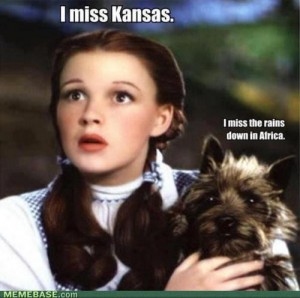
And one last piece of music, with beautiful photos
We’re at the O.R. Tambo Airport in Joburg, with an hour or so before we board the plane to Singapore. It’s a bit hard to believe we’ve been here for 6 weeks, and that our amazing African adventure is over. We’ve thrown stuff out, left other stuff in a pile at the campground hoping that some of it may find its way to someone else who can make use of it and packed up the stuff we’re taking home. We brought a set of portable digital scales with us to avoid the mad panic of chucking (even more!) stuff out at the airport as we did in the US last year. Our bags weigh about the same as they did when we arrived – we’ve added more books and a beautiful, but heavy, cast iron bread tin with a lid, and discarded some cooking stuff, linen and a few clothes.
We stayed at the Avant Garde Lodge in Kempton Park, near the airport in Joburg last night. We booked it on booking.com, but they also have their own website here. Lovely rooms, breakfast included and they also offer dinner. We were more than happy to eat there after driving 600kms, and there was a thunderstorm just after we arrived so it was good to not have to go out again to find dinner. It’s a great place to stay as it’s close to the airport, but it would also be lovely to spend a few days there lounging by the pool and enjoying the beautiful gardens.
The trip has been fantastic – much better than I dared to hope it would be. We didn’t get sick, mugged, robbed or scammed, weren’t involved in any road accidents, which was my biggest fear after we realised that South Africa really isn’t a dark, dangerous hotbed of crime – the drivers here really are terrible. Greg has handled all the driving with incredible grace and good humour – the awful road conditions, shocking drivers, occasional hard-to-find places – all of it has just become another part of the grand adventure rather than an insurmountable obstacle, thanks to Mr Adventure. He’s a great travelling companion.
Before we came, I hadn’t really thought too much about the wildlife we might see … or rather, I didn’t want to have high expectations in case we didn’t get to see much. Ha! It’s a bit like some of the other adventures we’ve had – all you have to do is turn up. We’ve seen so much wildilfe, but sadly never did see a leopard or a cheetah. We’ll put them on our wish list for next time. And there will definitely be a ‘next time’.Even though we have visited every South African province (some of them very briefly), there are still parts of it that we want to visit or revisit. Wouldn’t bother with the eastern coast again, but Cape Town, Western Cape and more of the North-Western Province, definitely. I’d go back to Kruger and Addo National Parks in a heartbeat, and would love to spend more time in Botswana. Namibia and Zambia will be on the list too.
To everyone who has been following along at home, thanks for reading, commenting, emailing and keeping in touch. We’re planning a 4WD trip at home in a few months, to do the Canning Stock Route in Western Australia. We won’t be blogging as regularly due to lack of internet access and power, but we’ll keep a blog and update it when we can. Hope you can join us for that one too!
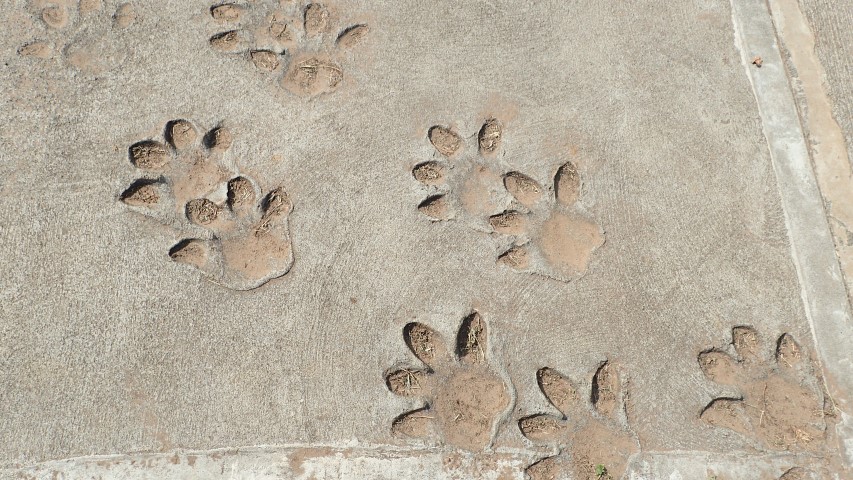
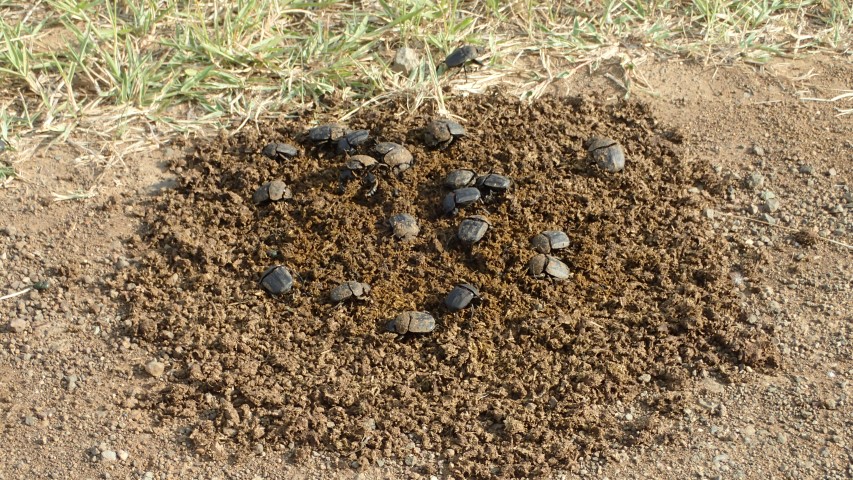
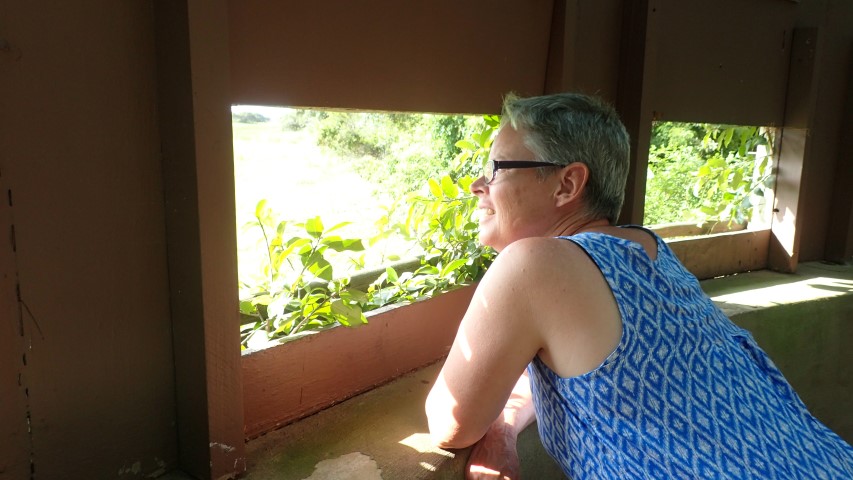
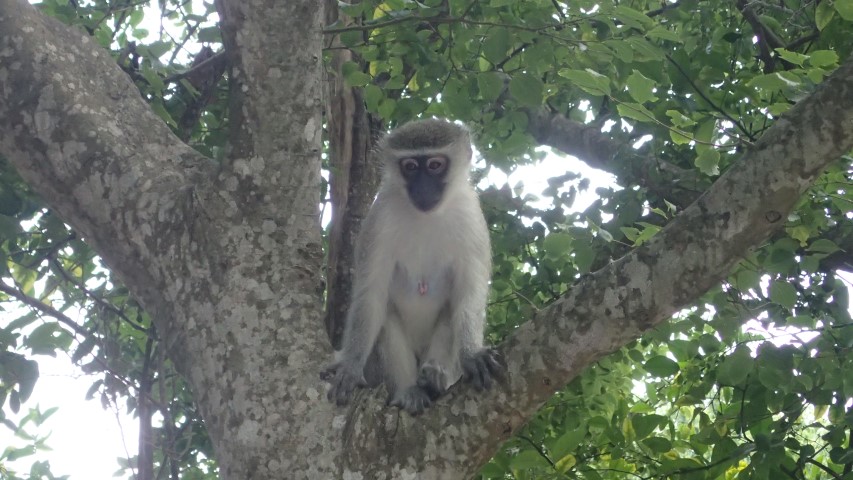
For our last couple of days and nights, we’re at a wildlife park on the north coast. Its one of the oldest and largest conservation areas in South Africa and goes as far north as the Mozambique border. The reserve is very long and narrow and includes several large freshwater lakes, plus Lake St Lucia which is actually a vast estuary for several rivers. It includes a marine sanctuary, a wide range of game animals, has breeding grounds for 2 marine turtle species, is one of South Africa’s top dive locations, and it seems that everyone apart from us is keen on fishing. As we drove to the campground we saw a zebra, a few antelopey thingys (couldn’t tell what type as they were too far away), and then there were a couple of new little antelopey thingys grazing near our tent site when we got here. Not sure what they were – some kind of grysbok or duiker, perhaps.
We’re staying at Cape Vidal campground, which is about 35kms north of the park entrance near St Lucia. This reserve isn’t part of the SA National Parks group, so our Wild Card doesn’t cover it and we paid an entrance fee in addition to the exhorbitant campground site fees. The entrance fee was okay, but at $55 per night for a powered site, this is the most we have ever paid to pitch a tent. It makes what we paid in Norway in 2013, and at Cradle Mountain, Tassie at Easter last year look reasonable!
The campground is fine, but nothing special – we paid less than 1/3 the night we pitched the tent on the deck in the forest and THAT was special. This one has sandy sites, unimaginative allocation system where we just got the next empty site in the row, when there are other more secluded sites that we’d prefer. Then the next people to come along got the site next to us, and so on.
The monkeys are here in abundance, but none have really bothered us yet. We sat and cooked in the tent last night, which was a good thing in more ways than one as we realised this morning that we’re back in a malarial zone. But just now I got up and walked 5 paces to put something in the car, and in that time a monkey came and sat on the laptop to check out if we had any food on the table worth stealing. They are swarming all over our next door neighbour’s tent and stuff, but he hasn’t left anything interesting out either.
So now we’re at the ‘what was I thinking’ stage of the trip. Happens every time – we end up with a strange collection of food that don’t go well together, and I don’t remember why I bought them in the first place. It’s not too bad though, we don’t have a lot left, apart from most of a kilo of ‘cake flour’. Every supermarket here sells 2 kinds of plain flour – cake flour and bread flour. Each has different protein levels, depending on what you want to use it for. I guess cake flour is the same as our plain flour.
Tomorrow is our last day, we fly out around midday on Saturday. We’ll pack up what we’re taking home, throw out and give away what we’re not, and drive the 600kms to Joburg. This afternoon we’ll drive around part of the reserve and hopefully see some wildlife
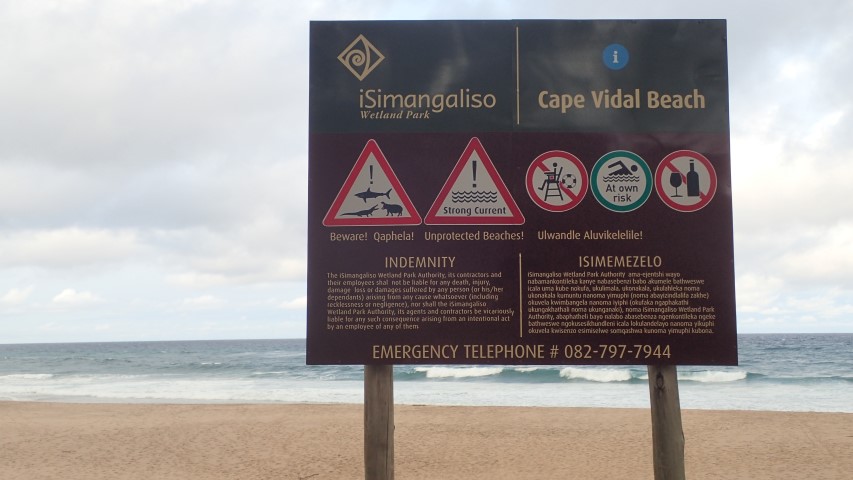

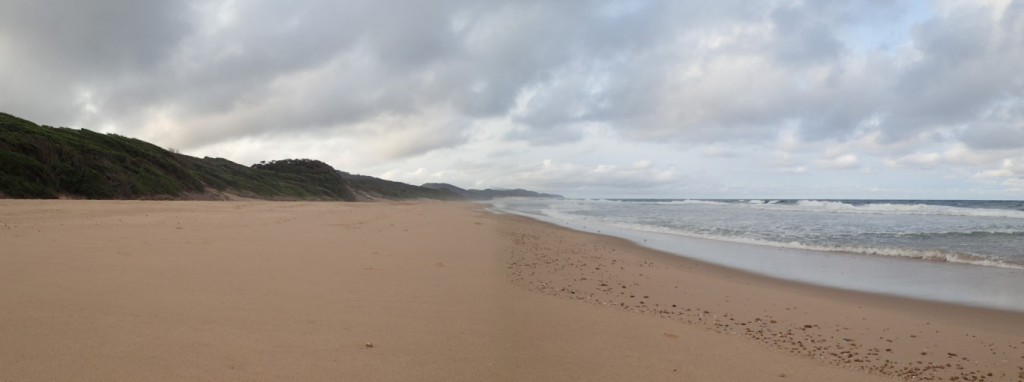
A bit about Durban –
It has a population of 3.5 million, including neighbouring towns
It has the largest Indian population outside of India
It is the second-largest manufacturing hub in South Africa, after Johannesburg
It is the busiest port in South Africa, and in Africa
It is a major centre of tourism because of the city’s warm subtropical climate and extensive beaches
I think we had possibly taken a bit too much notice of the last fact, and not paid enough attention to the others. We were expecting some kind of Gold Coast, when in reality it’s more like Newcastle or Wollongong. The place we’re staying in is very nice, but even that was not quite what we expected. The ‘cottage’ is actually a ground floor flat, with a much larger house above it. Well-equipped, comfortable, great views of the Indian Ocean, lovely garden, helpful staff. Yep, staff. While we were out yesterday, the maid came and cleaned the ‘cottage’ and moved all our stuff around. We’re still trying to find things! I’m sure nothing has been taken, it’s all just been ‘relocated’.
We went into the city yesterday, to have a look there and to see the much-hyped ‘Golden Mile – a beachfront street with hotels, apartments and shops, with market stalls along the edge of the beachfront all selling the same stuff. We were expecting some glitz, glamor and maybe some interesting places to eat. Actually, it was all pretty tacky, with some fairly desperate-looking guys trying to eke out a living any way they can. And yeah, that includes begging, stealing and doing whatever else it takes. The main shopping streets in the city didn’t have anything interesting enough to make us want to stop and have a look, although their public buildings looked grand and well maintained.
I was keen to find Bunny Chow for lunch – curry that is served in a hollowed-out bread roll or loaf. A hotel with an outdoor dining area had a few varieties on their menu (lamb, chicken, vegetarian) and we sat down at a table overlooking the beach. A car parked on the street just below us had its car alarm keep going off, and we decided that wasn’t quite the ambience we wanted, so we left and found more Bunny Chow at a little takeaway shop further down the street. It was advertised as ‘1/4 bunny’, which turned out to be a serve of curry in a hollowed-out quarter of a loaf of white bread, with the hollowed-out piece of bread and some grated carrot served on the side. The gravy soaked into the bread and it was all delicious!
Most of the top-rated Things to do in Durban, according to Trip Advisor, were aquariums, Wet’n’Wild parks and stuff we weren’t really interested in, so we headed back to the ‘cottage’ to spend a bit more time looking at the ocean and watching the ships go by. I’m reading a book about the Oscar Pistorius trial and it’s a very interesting read.
For our last couple of days, we’re heading to a National Park north of here on the coast – Isimangaliso Wetland Park, near St Lucia. It has fairly mixed reviews on Trip Advisor, and apparently the monkeys are a big problem, so we’ll try it for a night and move on if we really can’t stand it. However, the wildlife there is abundant and I’m hoping we might see a cheetah or two.
We learnt something from our hostess last night – when Liz Taylor and Richard Burton got married for the second time, it was in Botswana in 1975, at the Chobe National Park, right up north on the border with Namibia, where we were at the beginning of this trip.
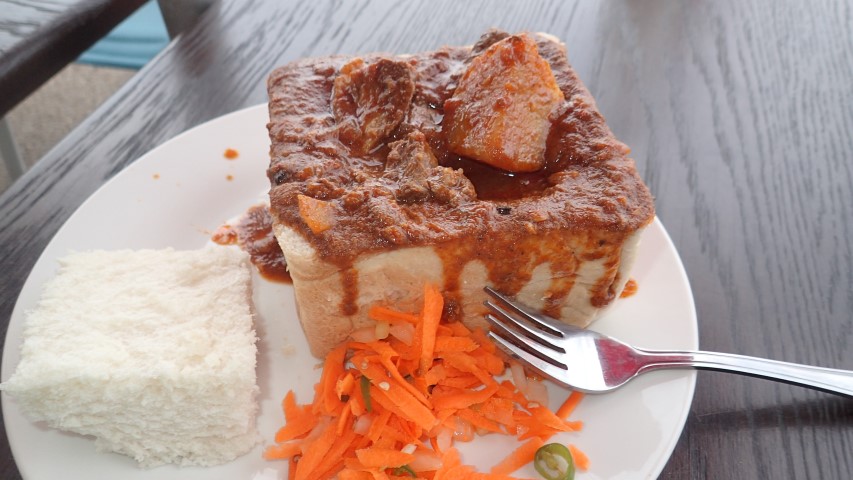
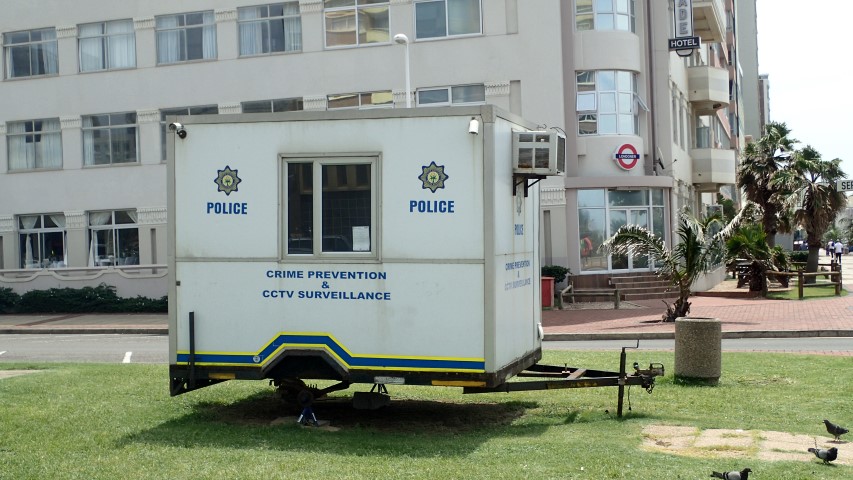
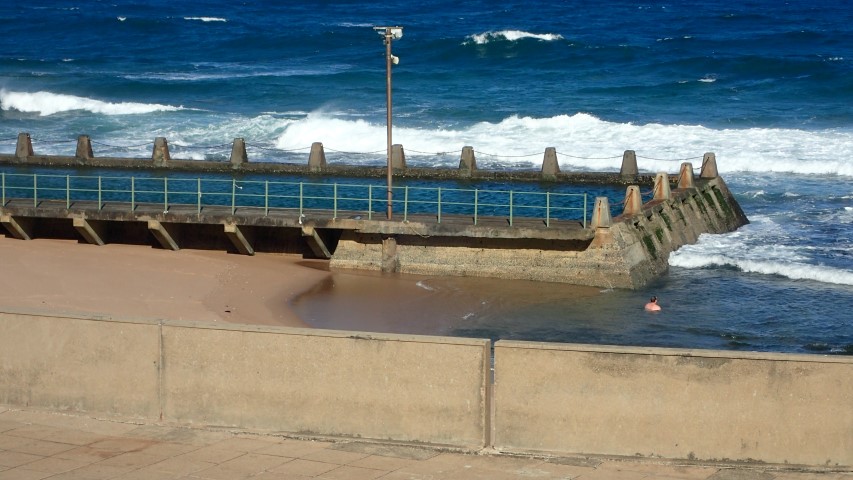
At the beach.
Staying here.
See you in a couple of days!

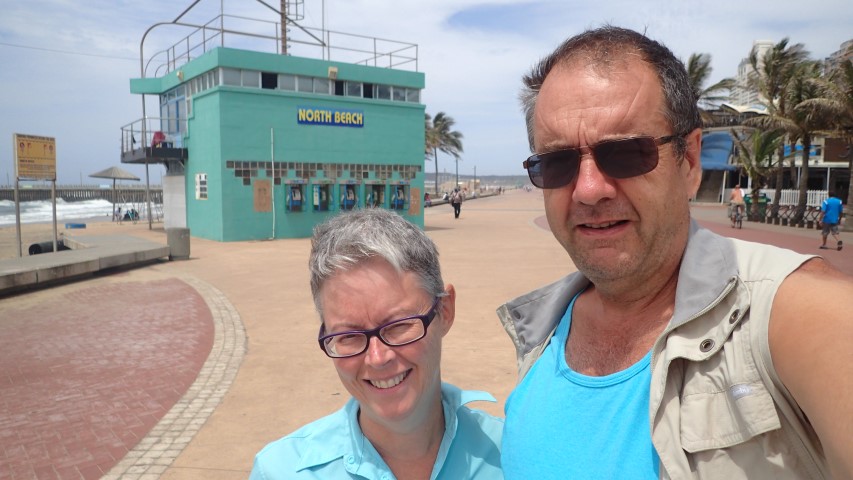
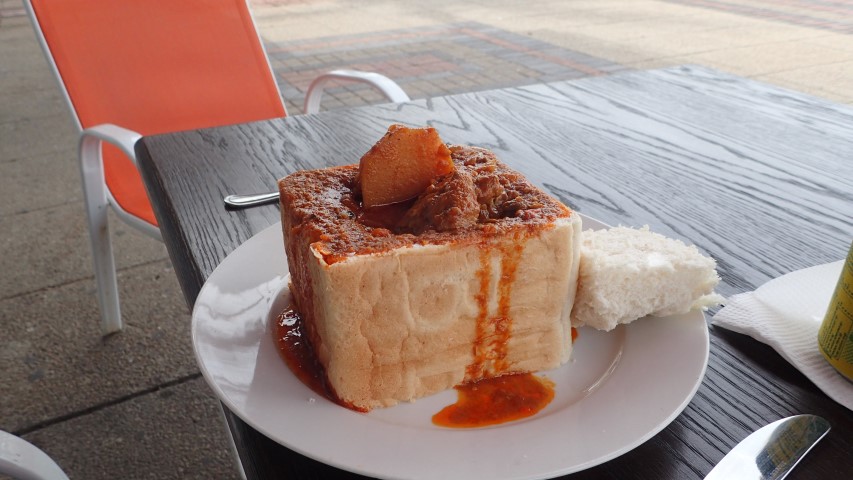
Bit of a strange day yesterday. Nothing really amazing happened …. or maybe something did.
We drove 500kms through Eastern Cape, mostly inland, from just north of East London to Port Edward, which is about 150kms south of Durban. We have a beach cottage booked in Durban for the next 2 days.
The whole day’s driving was along the winding, hilly N2 ‘Freeway’, but it was mostly just a 2-lane road with occasional passing lanes. I’ve decided that South African drivers are all like teenagers who have just got their licences – impulsive, unsafe and have absolutely no idea about anticipating anything untoward. They tailgate, speed, overtake on blind corners and on crests of hills and are generally just terrible drivers. Add in a steady stream of people walking on the side of the road, minibuses stopping to pick up and let off passengers, goats & cows on the road, potholes and thick fog in one part and that was pretty much our day. Except for when we stopped at Butterworth at lunchtime to get some groceries, ice and beer.
A white guy, possibly the only other white person in town apart from us, came up to the car and started talking to Greg. I thought he was asking for a lift somewhere, but he just wanted a chat, and something to eat. He was probably homeless and as we were making those ‘right, we’d better go and do our stuff’ kind of comments, he asked us if we could give him a piece of bread. I offered to buy him a loaf and asked if he preferred brown or white. White. Then I asked if he’d like something to put on it. Some gravy? I wasn’t sure how to get gravy, but offered to get some cheese. Okay. So he sat near the car and we went to the supermarket and got our stuff, plus a loaf of bread, some sliced cheese, a carton of orange juice and a small pack of chocolate biscuits. I’d been putting all my small change in a plastic bag so I wouldn’t have to keep sifting through it in my purse, so I added it as well. All up it cost less than a loaf of bread would cost us at home.
We planned to spend the night at one of several campgrounds in Port Edward. At the first one, we couldn’t find anyone to check us in, so we kept going for a few more kms to another one which turned out to be closed, but the woman who runs it invited us into her home and offered to find something for us. She told us that most campgrounds in the area are closed now until Easter. Seems a bit strange when the ones closer to Port Elizabeth are all full, but anyway … It took 3 phone calls to fellow-campground owners, but she found one for us at Trafalgar. It was incredibly kind of her to do that for us on a Sunday evening. I’ll regard it as karma paying us back for giving food to a homeless man.
After a couple of days at Addo Elephant National Park, we’re on the move again, heading east towards Durban, where we’re planning on spending a couple of nights.
We went for a drive in the park yesterday afternoon and saw lots of wildlife, including a meercat. We hadn’t seen any meercats before. And just as we’d decided we’d seen enough and were heading back to camp, we found the most beautiful young mother elephant and her calf, eating grass close to the road. We spent ages just watching the 2 of them eat, pulling up a few blades of grass at a time with their trunks. Their trunks are incredible instruments – capable of such fine actions, but also of smelling and detecting things. Their eyesight is very poor.
Close to the park’s office complex is a viewing deck overlooking a waterhole where elephants go to drink. It’s floodlit at night, which doesn’t seem to bother the elephants at all. We walked to it after dinner last night and there was one big fella having a drink.
We drove through Adelaide in Eastern Cape today. As far as we know, apart from our hometown, it’s the only other Adelaide in the world, so we just had to go there. Lots of ‘Welcome to Adelaide’ signs, it has a hospital, a large town square and a museum in an old stately home from the 1860s that looks like it should be on a tobcco plantation in Louisiana, USA. Unfortunately the museum was closed. Not sure what the population is, a couple of thousand perhaps. Like its South Australian namesake, there seemed to be a lot of churches!
We’re staying at a campground just east of East London and we’re the only campers here, although Greg went to try and have a look at the beach (no luck, there’s an electric fence in the way) and one cabin is also occupied. Bit of a shame as the campground has a lovely pool and other facilities, but the road here from the freeway is appalling – major road works on the access road, then a rutted unsealed track that most caravan owners probably wouldn’t like to drive on. Just up the road a bit is a nice sealed section, with brick walls and footpaths on both sides of the road. Strange thing is that behind the brick walls is just an overgrown mess. Like a developer got as far as a decent road and a bit of infrastructure, then ran out of money.
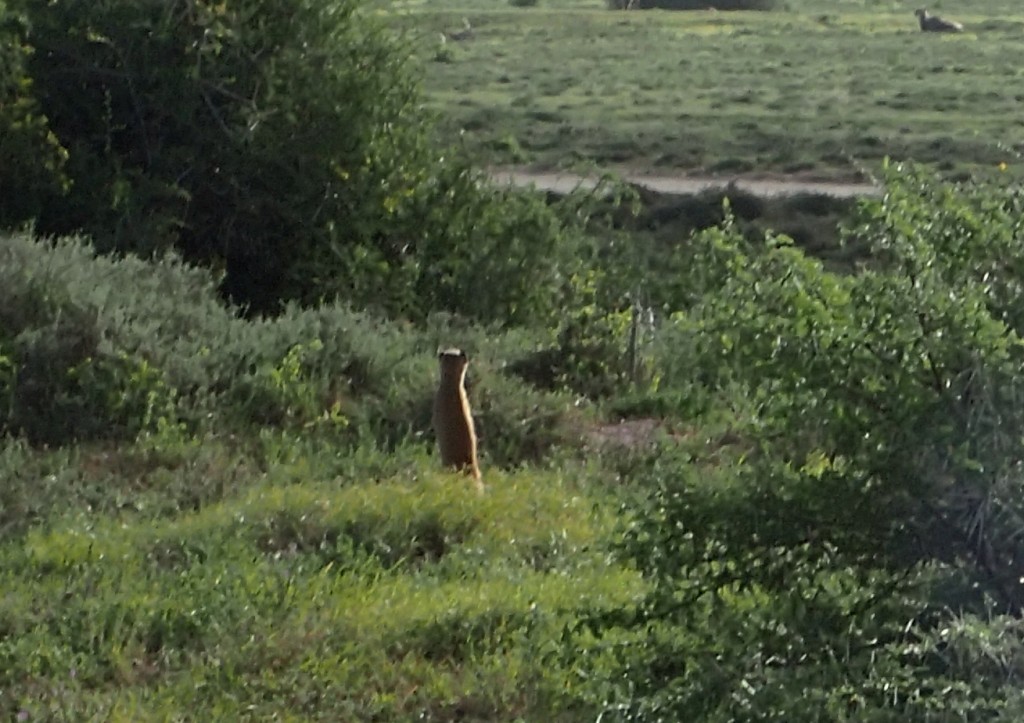
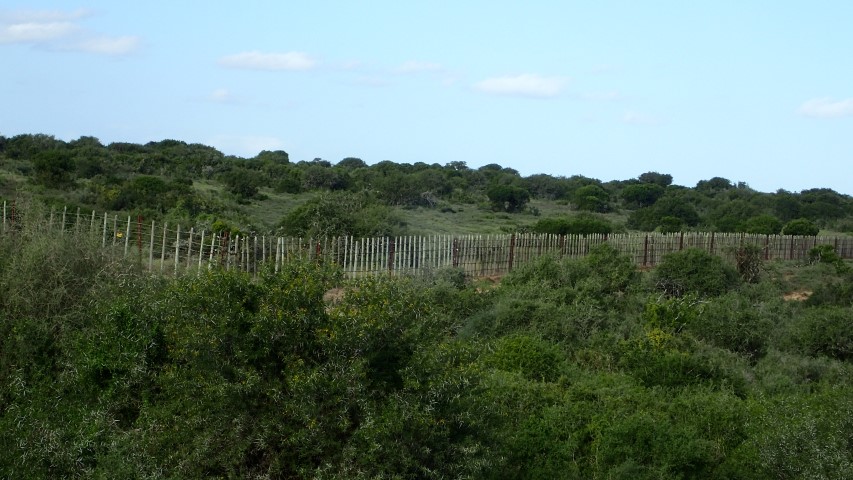
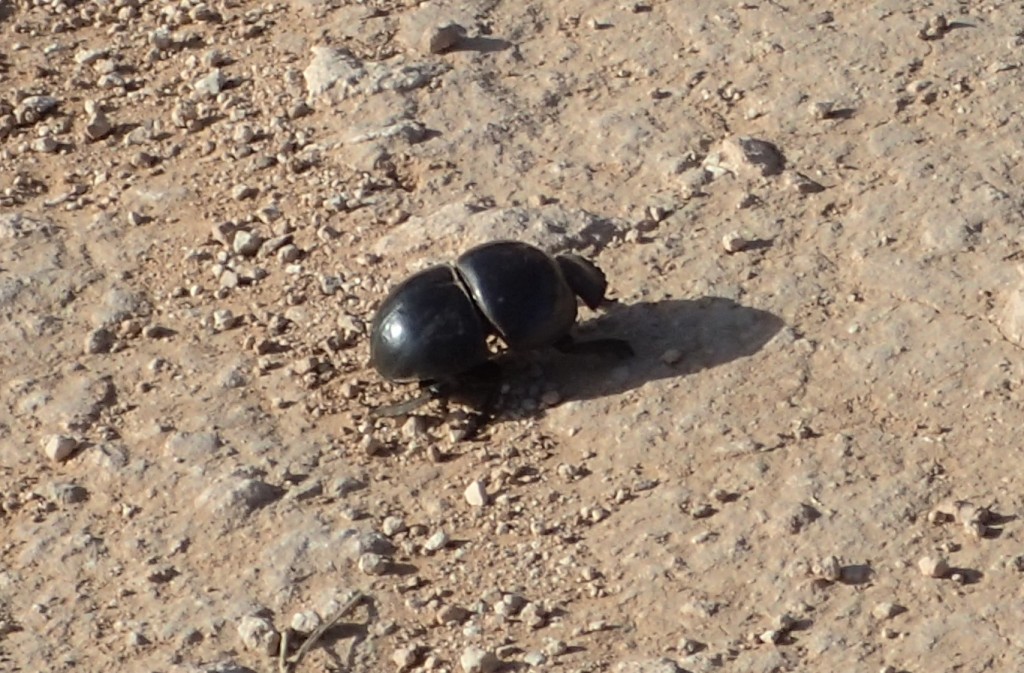
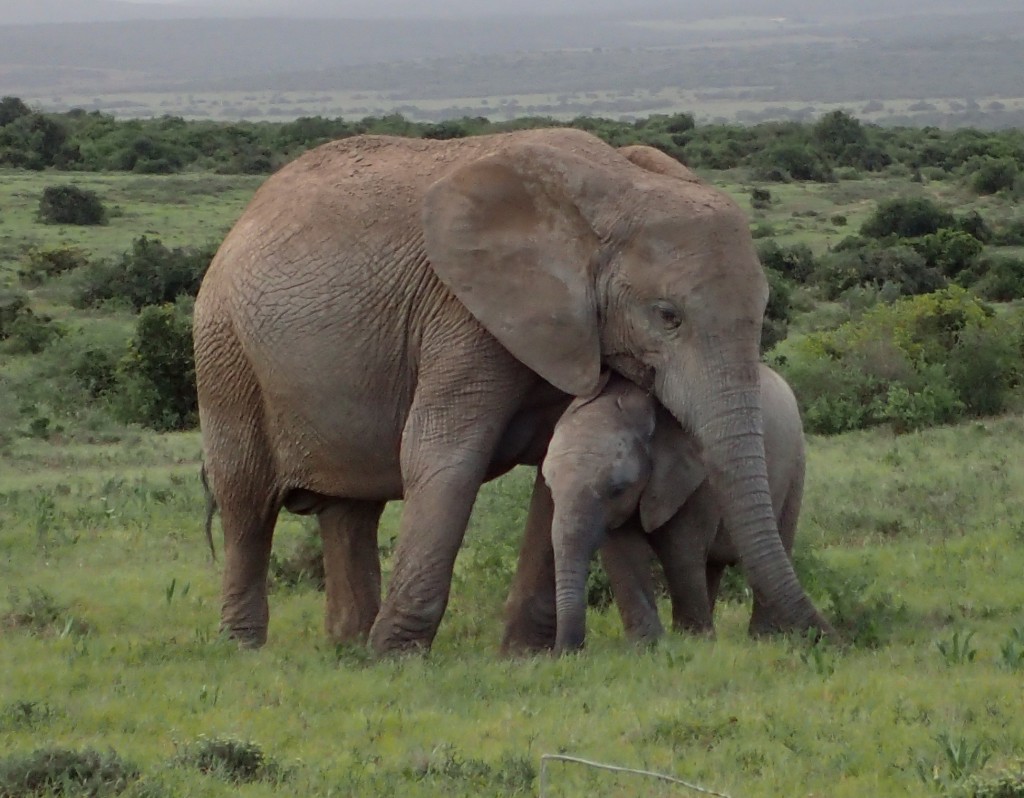
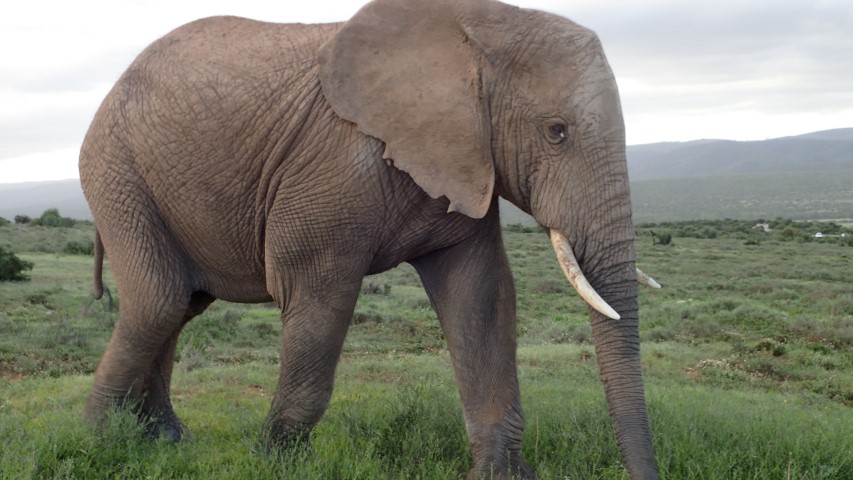
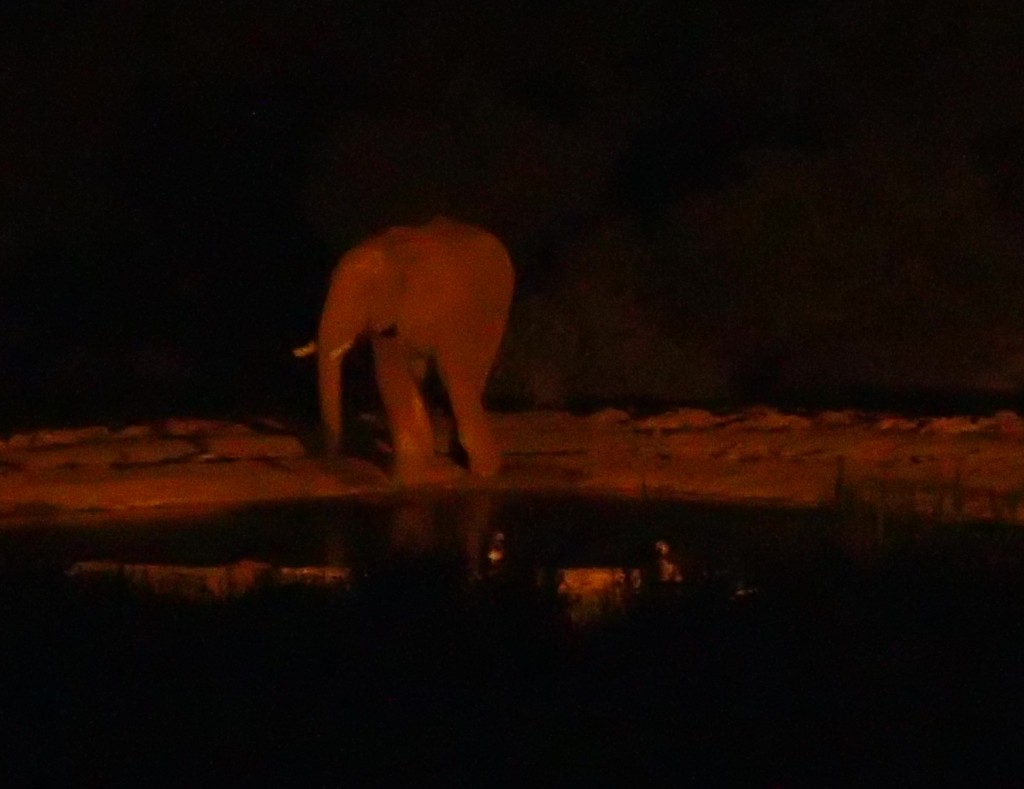
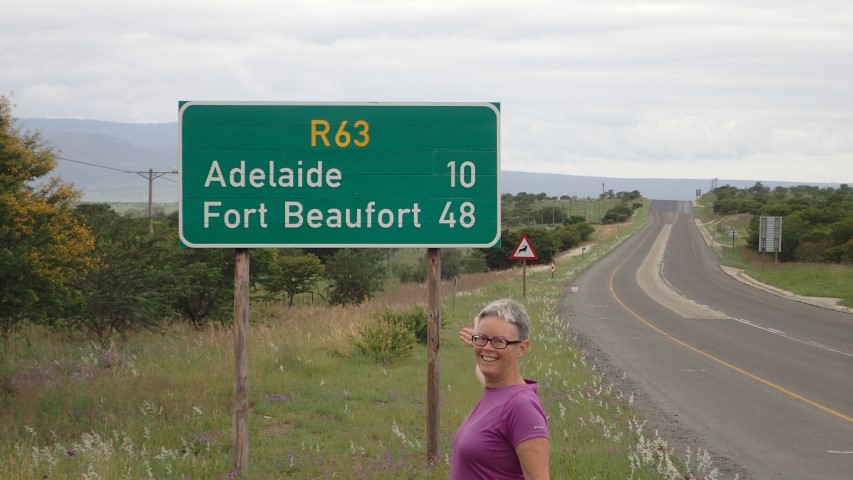
Now I see why this route along the south east coast is called The Garden Route. As we drove along yesterday morning, there were loads of proteas, plumbago and other flowers blooming at the edge of the road. It was raining and we were on the main freeway, so we couldn’t stop to take photos.
The night before last, we ‘pitched’ the tent on a timber platform suspended over forest at Diepwalle National Park in Knysna Forest. To get there, we had to drive through a township, then 15kms on an unsealed road. All but the last couple of kms were pretty good, mainly because the grader had JUST been through. We met it along the track, and then the last couple of kms that hadn’t been done were dreadful. If the whole track had been like that, we probably would have given up.
Greg had read about the Forest Timber Camping Decks in the Knysna Forest on the National Parks website, but there wasn’t a lot of info about them, and no review on Trip Advisor, so it was all a bit mysterious until we actually got there. There are 10 decks, including one with disabled access and 4 with permanent tents set up. Apart from us, only one other deck was occupied. Great for us as we don’t have a strong herding instinct, but a shame that such beautifully constructed decks with excellent facilities aren’t being utilised.
The decks were constructed in 2007, and each deck has space for a reasonable sized tent (ours is a 4-person with large vestibules front and back), plus room for chairs, table and gear. There is a high bench with shelving underneath and a couple of rustic bar stools, a braai, power and lights. As we couldn’t use tent pegs to anchor the tent, Greg got very inventive with tying guy ropes to the slats of the floor and to the railing around the deck. We lit the braai and cooked braaiwors, a long sausage curled into a circle, potatoes and zucchini. My timing was a bit off with the potatoes- I should have par-boiled them first – but we left them in the coals after we’d had dinner, then fried them for breakfast.
It still really surprises us how well-equipped most campsites in South Africa are. Just about every site is powered, with a water tap either at the site or close by. Bathrooms all have hot & cold water, showers and often a bathtub, plus facilities for washing dishes and clothes. Larger parks also have a camp kitchen, with sinks, hotplates and a boiling water dispenser. Compared with campgrounds we’ve stayed at at home, these are excellent. And cheap. The Camping Deck cost us less than $20 for the night.
We kept on driving east, stopping in at Port Elizabeth for some supplies and lunch. PE, or ‘The Bay’, is one of the largest cities in South Africa, with a population of just under 250,000, over 50% of them white. It’s a very large shipping port. East London, which is about 250kms further east, is the largest city in Eastern Cape. From those names, you can guess that the British were the ones who settled this area … in the early 1800s.
About 40kms east of PE is a little seaside village that we just HAD to visit … Colchester. Not much like its British namesake, just a service station and some houses tucked in behind a wall of high sand dunes. Greg’s dad is from the original Colchester in Essex, and Greg and his family lived there for a few years in the early 1960s. There is also a town called Adelaide in Eastern Cape, a couple of hundred kms north of where we are now. We’ll head there after we leave the Addo Elephant National Park tomorrow to see what’s there.
So we’re back in wildlife-spotting mode. Drove into Addo yesterday afternoon, through the southern gate near Colchester. We booked 2 nights at the Main Camp, which is at the northern edge of the park, a 50km drive. We took a few side-roads and saw lots of wildlife, so I’ll resurrect the Wildlife Tally again
Wildlife tally for Thursday 19 Feb
antelopey thingies – common duiker, kudu, red hartebeest. Different species to the ones we saw all the time in Kruger, which were mostly springbok and impala
zebras
elephant
ostrich
warthogs, so many warthogs!
leopard tortoise
New to the list – flightless dung beetles & black -headed herons
This park is so different to Kruger …. of course! Much milder climate, quite mountainous and it’s mostly coastal scrub with just a few tall trees. There is a waterhole near the main camp’s office/restaurant/shop complex with a viewing platform, and a large ‘grandmother group’ of elephants visited this morning.
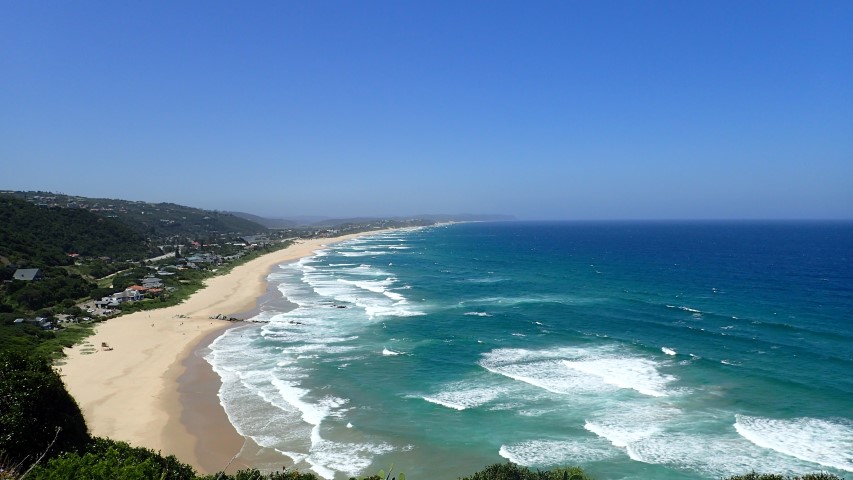
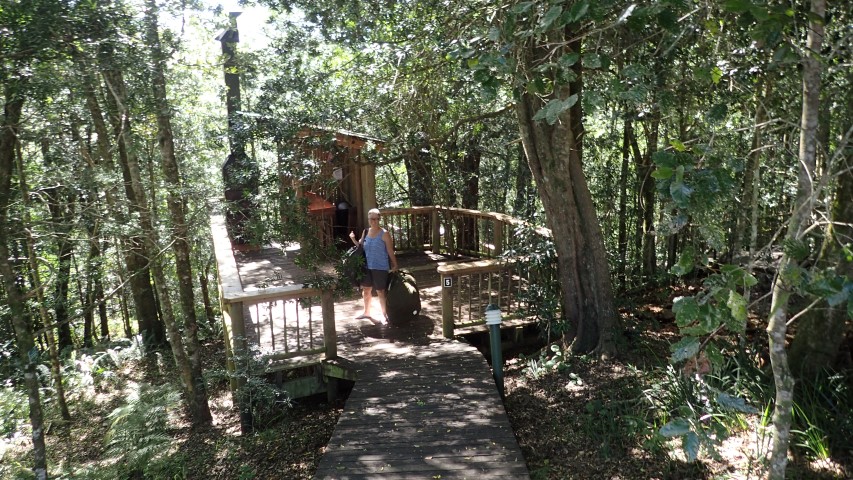
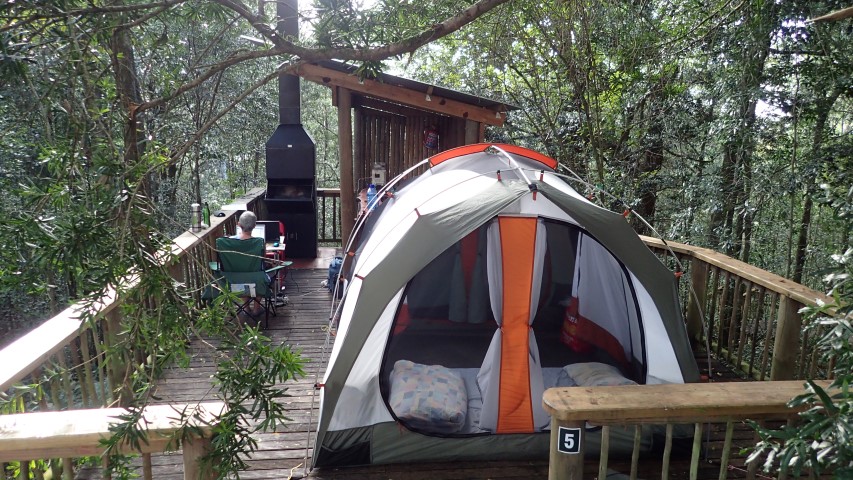
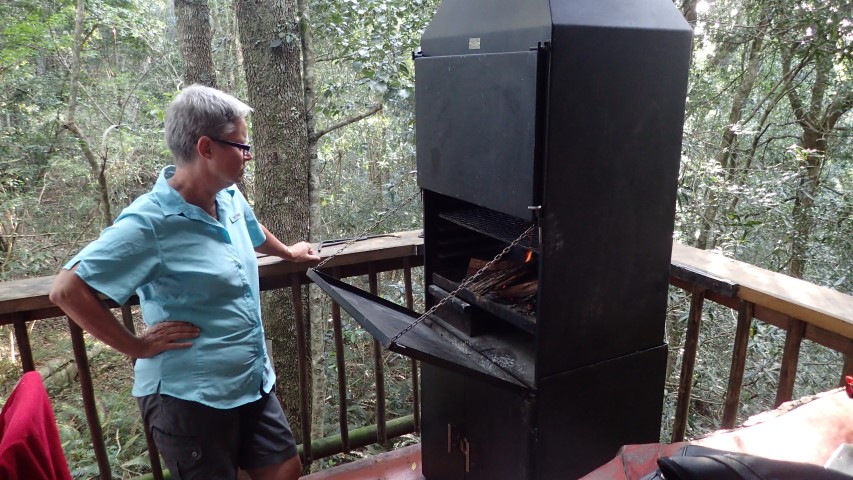
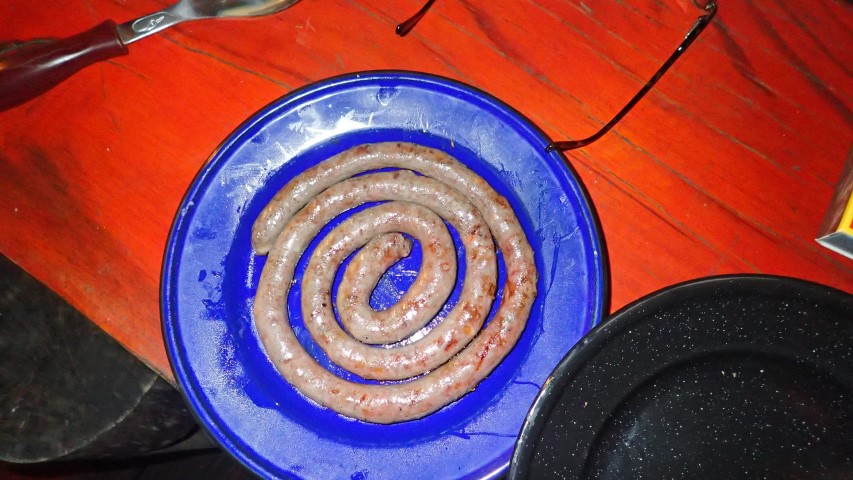
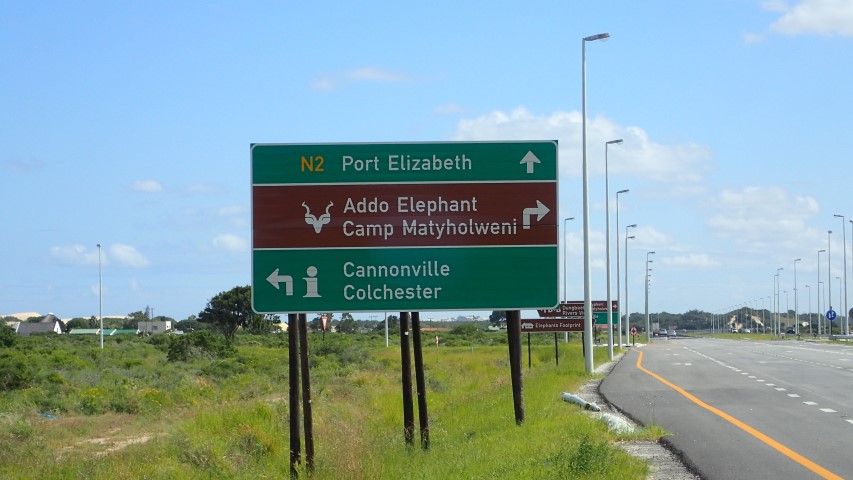
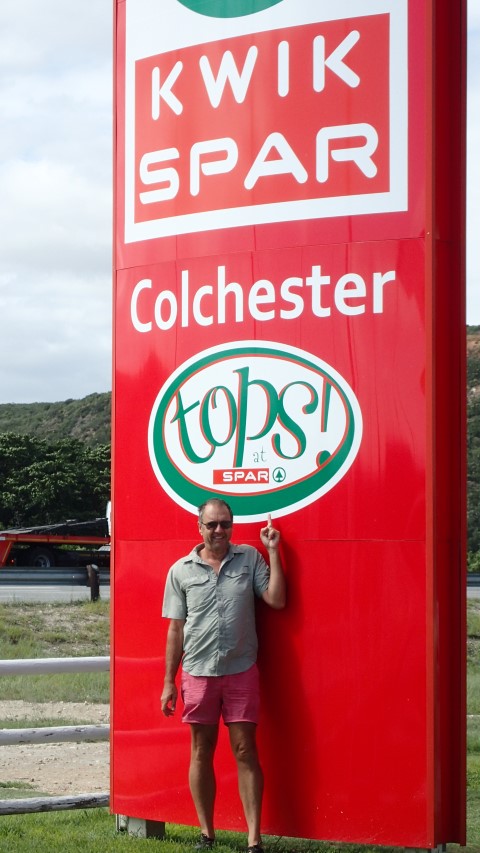
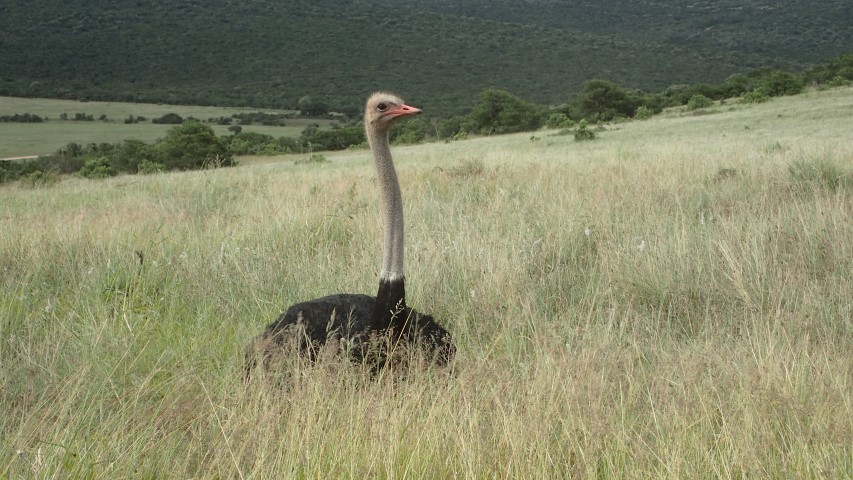

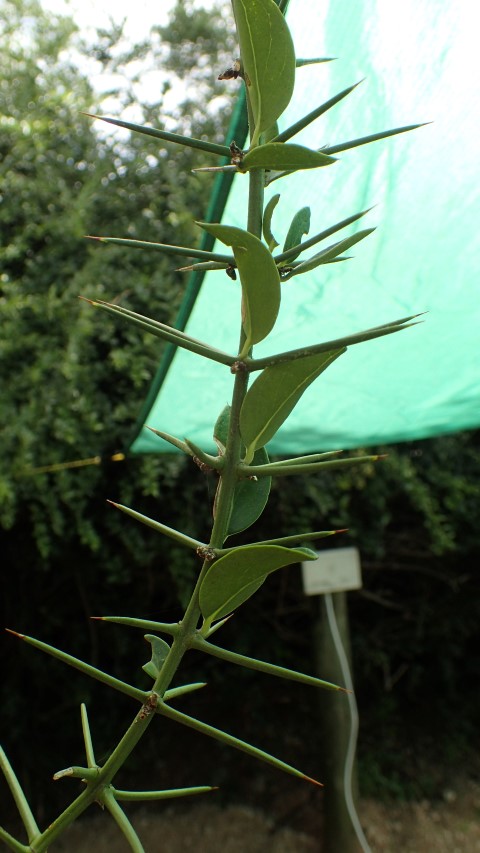
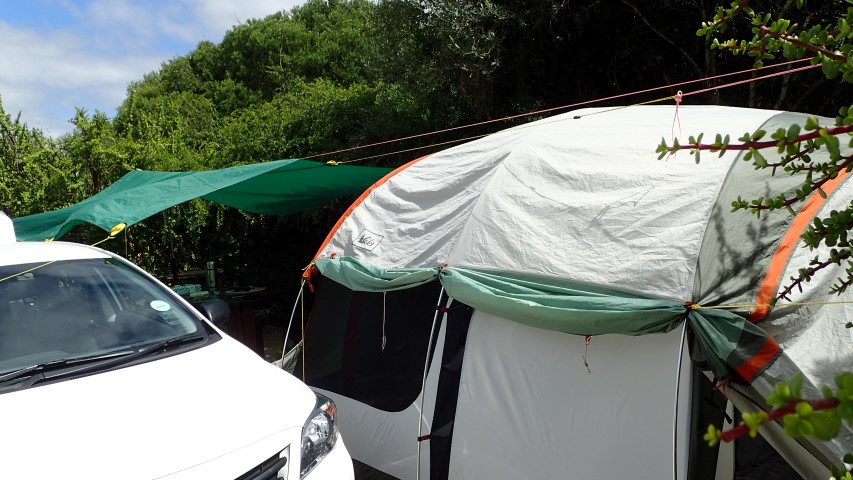
We’re heading east to Durban, and then eventually back to Jo’burg. We drove through Western Cape yesterday, and now we’re almost in Eastern Cape, spent last night camping at the Glentana Beach campground, which is set just back from the beach. There are 2-storey beach houses along the beachfront, then the campground is set just behind the houses in a secluded area, and then there are more houses behind the campground on higher ground so they have a view. So having the campground in the ‘hollow’ seems like good use of the space.
Eastern Cape is in the ‘Garden Route’ part of South Africa. Not sure if it’s just clever advertising, but the climate here is apparently one of the most temperate in the world. Mild winters, comfortable summers and plenty of rain, if the grassy campsites are anything to go by. There is a team of guys here lawmmowing and whipper-snipping the thick grass, and where they have already been looks like a bowling green.
We drove past the turn-off to Cape Agulhas, the southern-most tip of South Africa yesterday morning. It is also the official dividing point of the Atlantic and Indian Oceans. We didn’t go there – maybe next time!
Not a lot of wildlife-spotting recently, although I did see a dwarf mongoose at Table Mountain, and we saw some rock hyraxes at the Cape of Good Hope. These mammals look like giant brown guinea pigs, ranging from 2 to 4 times the size. What’s really interesting and quite amazing about them is that their closest living relatives are the elephant and sirenians ( which includes the dugong and manatees)!
We’ve booked a couple of nights at the Addo Elephant National Park, which is a couple of hundred kms further east. We couldn’t get in tonight, so we’ll try the Garden Route National Park which has incorporated several national parks and forests, with a few accommodation options.
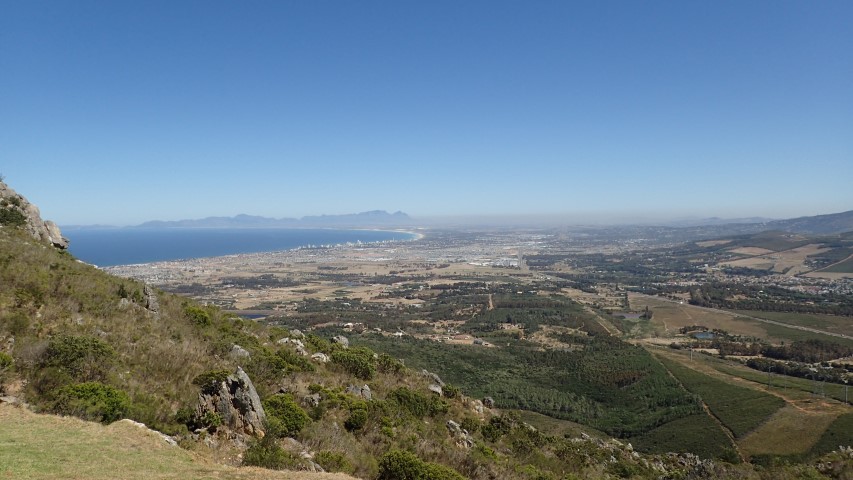

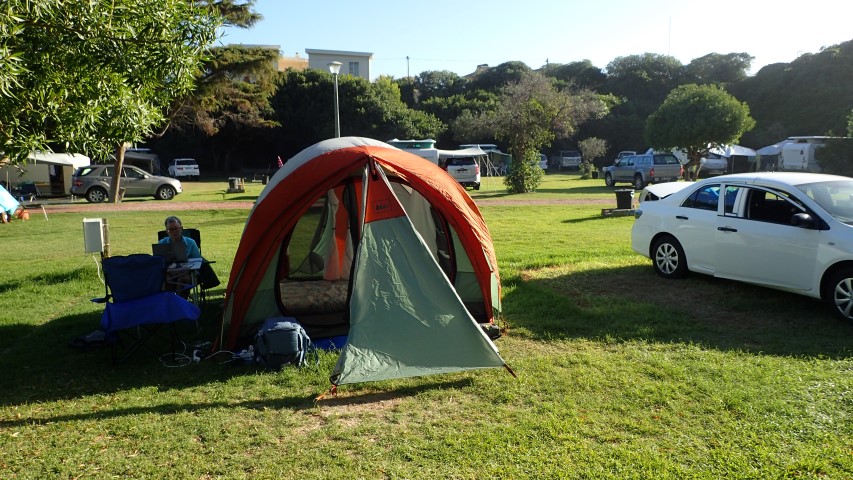

We walked up to the top of Table Mountain today. Well, to be absolutely accurate, Greg walked all the way to the top of Table Mountain and caught the cable car down, I walked part of the way up, then turned around and walked back down. We were both happy with what we did. Gorgeous weather, hardly any wind, unlike yesterday and overnight when the wind just didn’t stop, but it settled early this morning. No cloud or ‘tablecloth’ around either, just beautiful blue sky.
We were surprised at the crowd waiting to get the cable car up to the top. I thought there wouldn’t be many people as it was Monday, but there were hundreds! Some people walked up, but only a very small fraction of those who took the cable car.
The view of the city on the way up (and down!) was magnificent. Cape Town really is a lovely city. Although we didn’t think so this afternoon when we got caught in peak hour traffic. We went to the Avis office in the city this morning to ask them to replace the heap-of-rubbish VW Polo we got in Joburg, and they asked us to go back this afternoon. In addition to the car being much smaller and less sturdy than the Corolla, it had started doing strange things like not start properly in the mornings, and one parking light would somehow be on and the car would alarm, even though no lights were on. We didn’t feel confident that it will actually get us back to JHB. Pretty sad for a 6-week old car that only has 2,400kms on the clock.
So we went back this afternoon and they gave us another Corolla. Wow, so much extra space! So robust! Such a relief! Oh Happy Day!
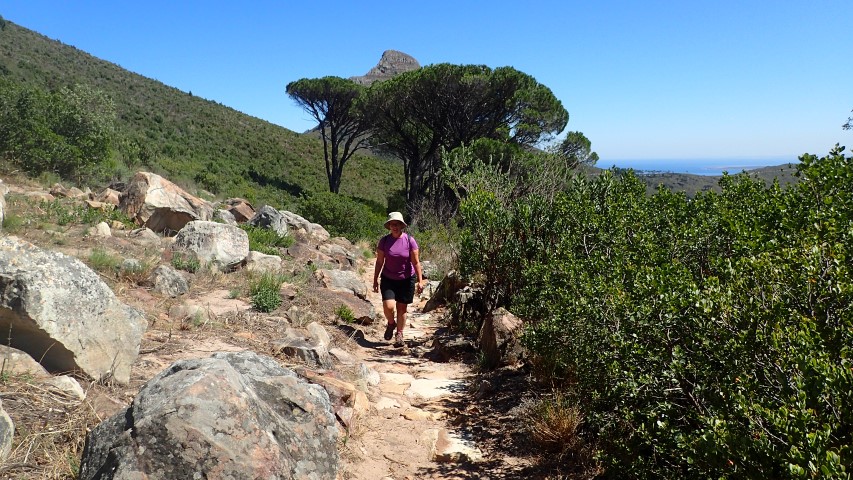
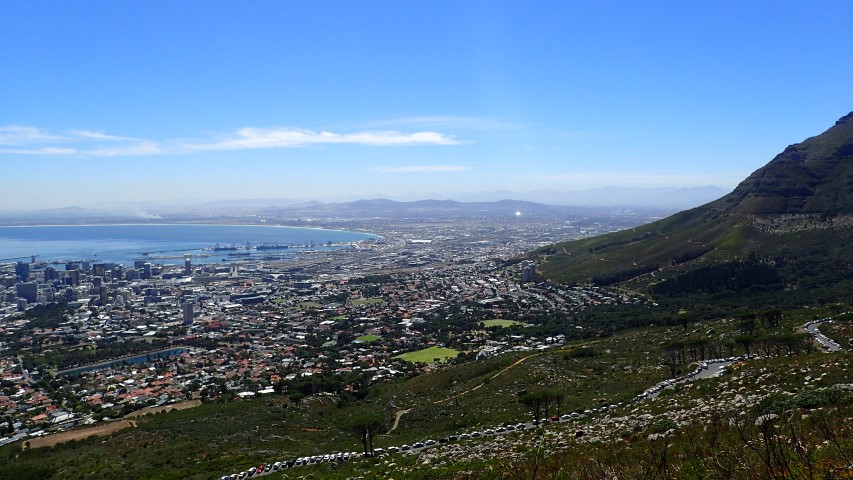
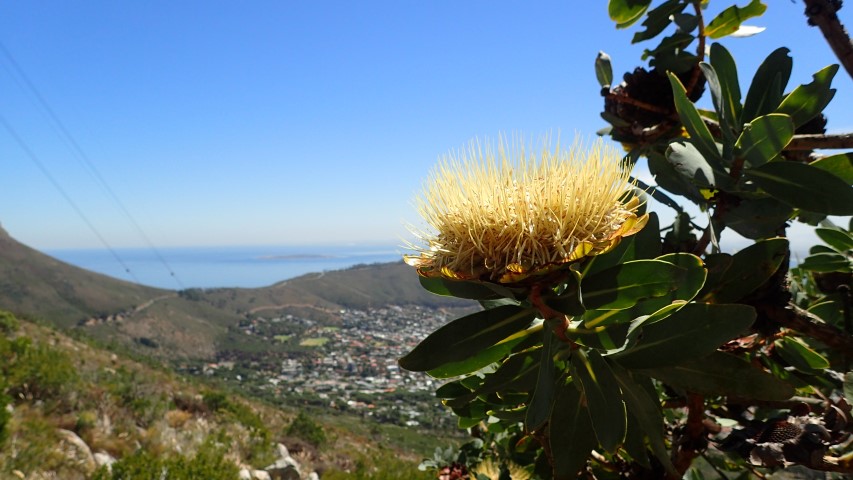
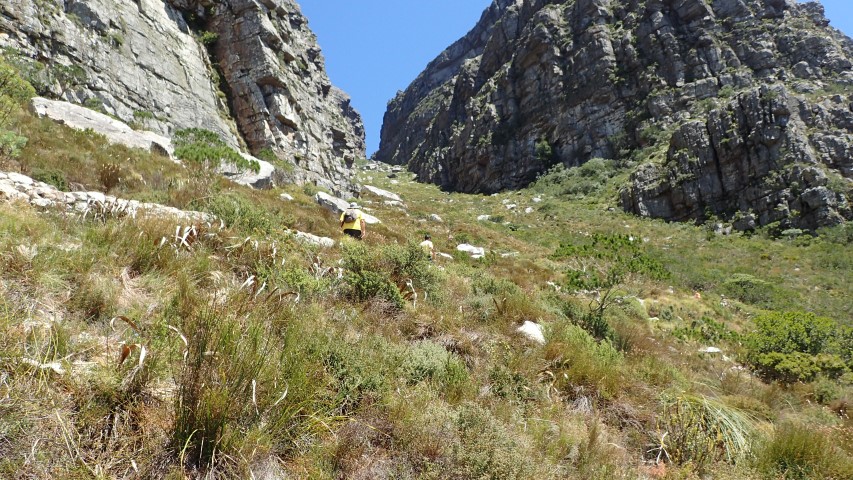
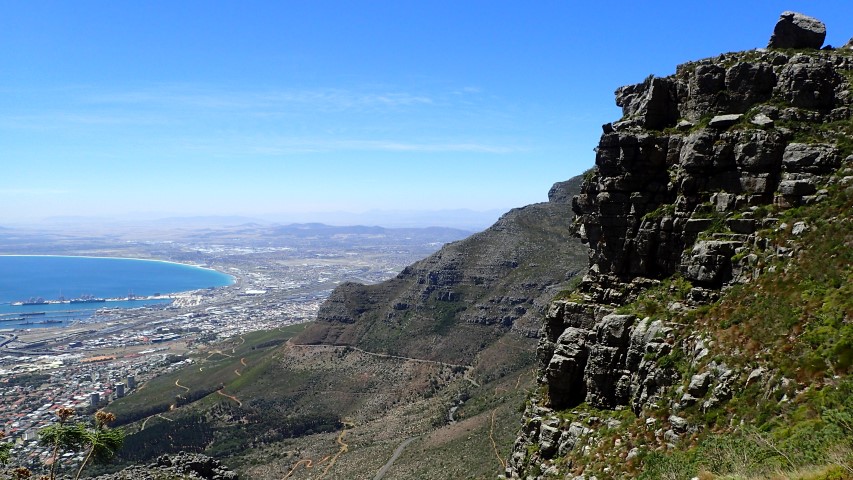
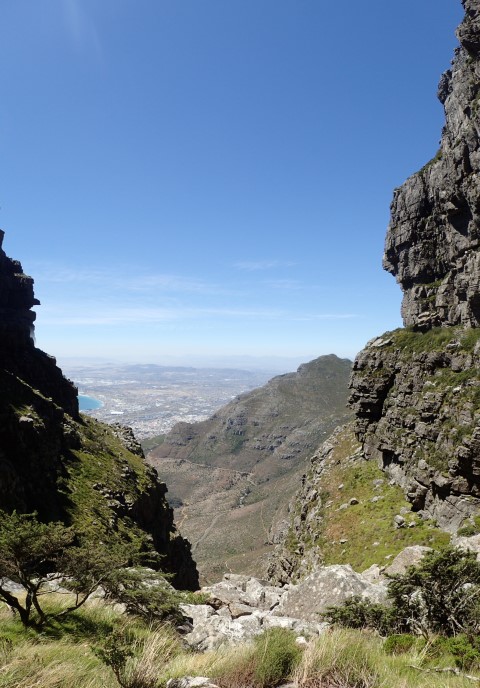
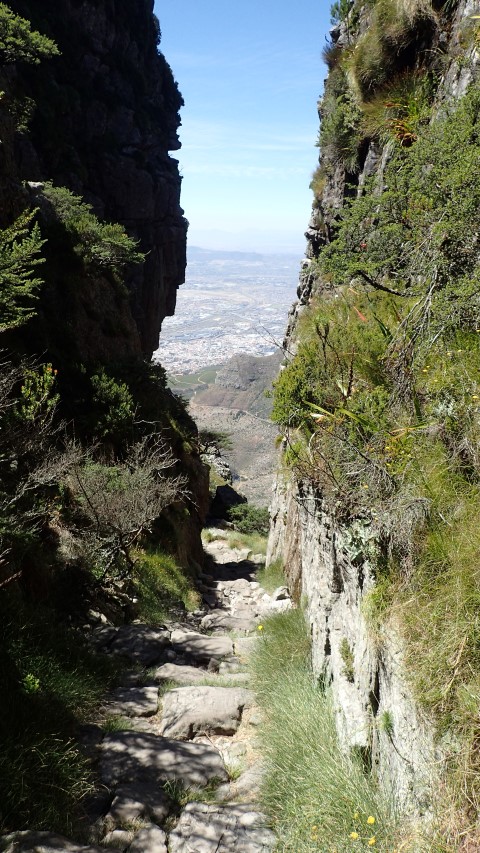
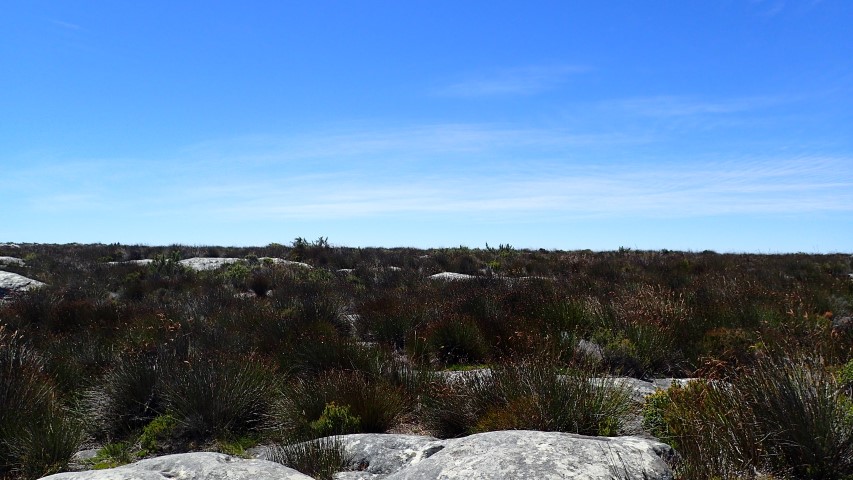
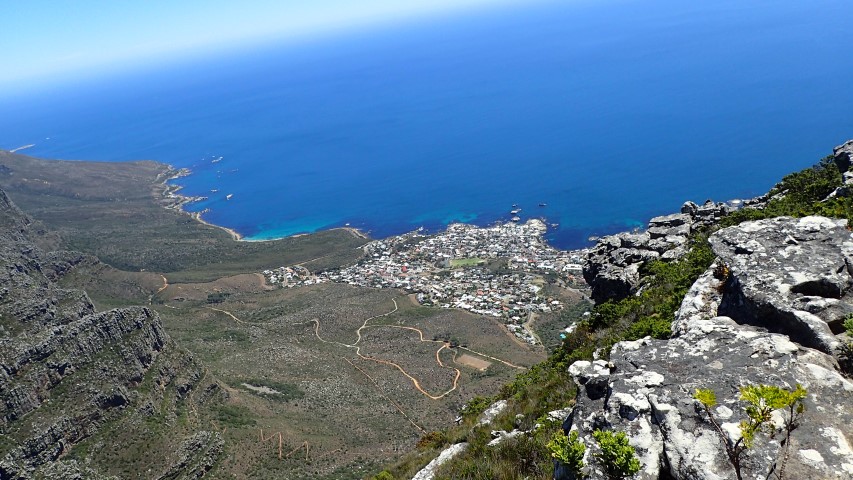
We’ve spent the last couple of days exploring the Cape Peninsula. Yesterday (Saturday, Valentines Day), we drove up to Signal Hill, which is another high point that overlooks the city and out over the Atlantic Ocean. Lots of people doing the walk up to the cable car to take them up to Table Mountain. We planned on walking up Table Mountain today, but it was too cloudy and very windy, and the cable car was closed.
After we’d been to Signal Point, we went looking for lunch at the Victoria and Albert Waterfront. Lots of shops, fast food chains, restaurants and people! We had lunch at a little Italian cafe, and dessert at another Italian cafe, then walked to Nobel Square, which has statues of the 4 South African Nobel Prize winners – Albert Luthuli, Bishop Desmond Tutu, FW de Klerk and Nelson Mandela.
We drove to the northern beaches of Cape Town, to Milnerton, parked the car and walked on the sandy beach to stand in the Atlantic Ocean. We have a tradition of dipping our feet in the ocean, whenever we are somewhere interesting. It was FREEZING, so cold that we didn’t stop long enough to take a photo. During our 2011 road trip across the US, we stood in the Atlantic Ocean in Florida, and the Pacific Ocean in California. There were hardly any swimmers, but lots of kite-surfers and wind-surfers out on the water, all wearing full wetsuits (in summer!), and the back-drop of Table Mountain behind the city was stunning – it’s one of the most beautiful cities I’ve seen.
We had plans to visit Robben Island, where Nelson Mandela and many other political prisoners were incarcerated, but have read a few not-so-complimentary reviews of it, and decided not to go. Neither of us is particularly good on a boat or ferry, and the tours of the prison seem to be a bit random, with very large groups, over-booked ferries and general dissatisfaction about the whole process, so we decided against it.
Today, our plans for visiting Table Mountain were nixed by the weather, so we drove down to the Cape of Good Hope instead. We drove down the eastern side of the Cape Peninsula, then drove back on the western side. Lots of little seaside towns along the way – we stopped at a couple to look at the beaches and to have something to eat. The Cape of Good Hope is in the Table Mountains National Park. Long queue to get through the park gates, then a drive of about 10kms to get to the Cape, the south-westernmost point of Africa. Next stop: Antarctica.
The western side of the peninsula is absolutely spectacular. There’s a section of the road called Chapman’s Peak Drive which goes for about 10kms along the coast between Noordhoek and Hout Bay, winding around the cliffs and looking over the beaches, towns and out to sea. Before we did the drive, we hadn’t realised how scenic it would be. Only cars can go along this road, because part of it is carved into rock and it’s only high enough for cars, no buses or minibuses allowed. Well worth the toll of around $4.00
Back to CT via the coast, which was a bit like Malibu in California – amazing apartments, shops, people, cars – with Table Mtn still covered in cloud, and the wind still howling. We had pan-fried free range ostrich steaks for dinner and they tasted good. Like very lean, light beef.
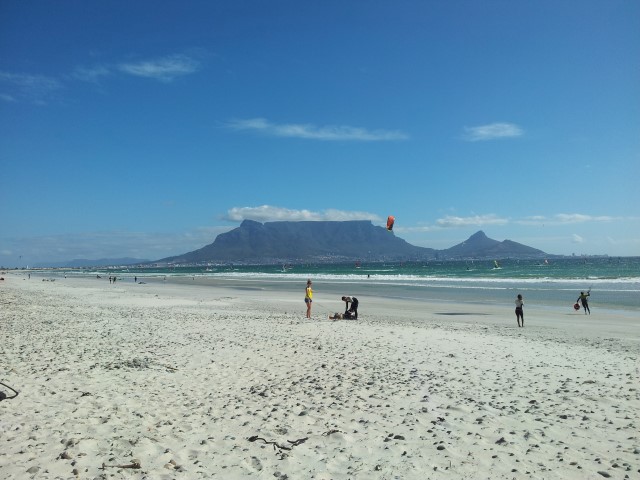
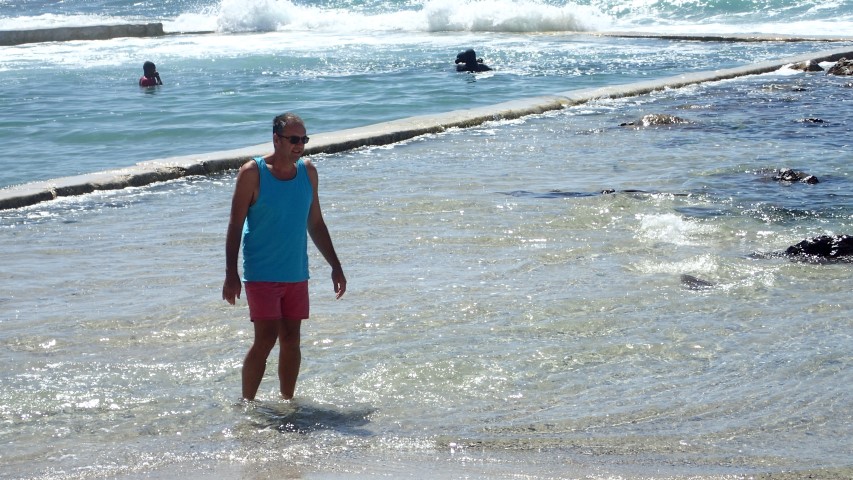
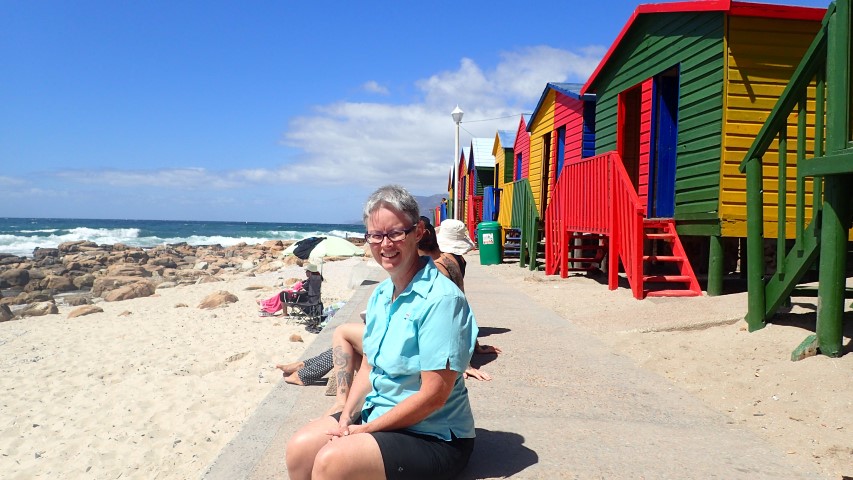
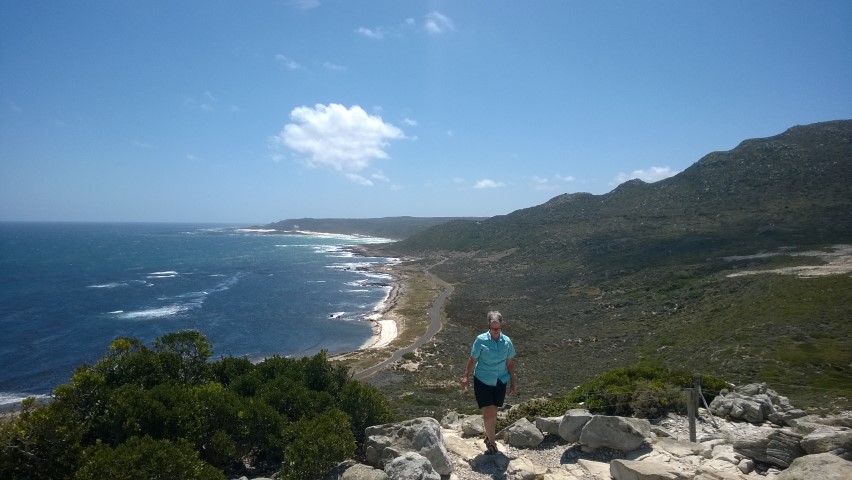
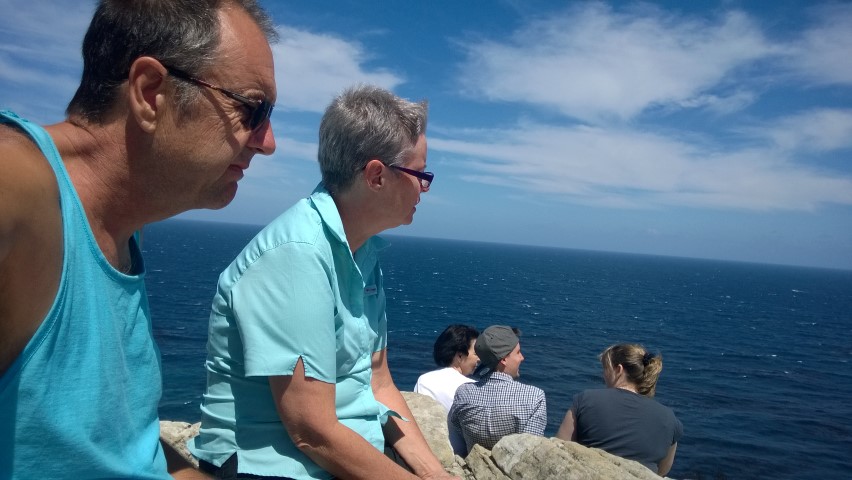
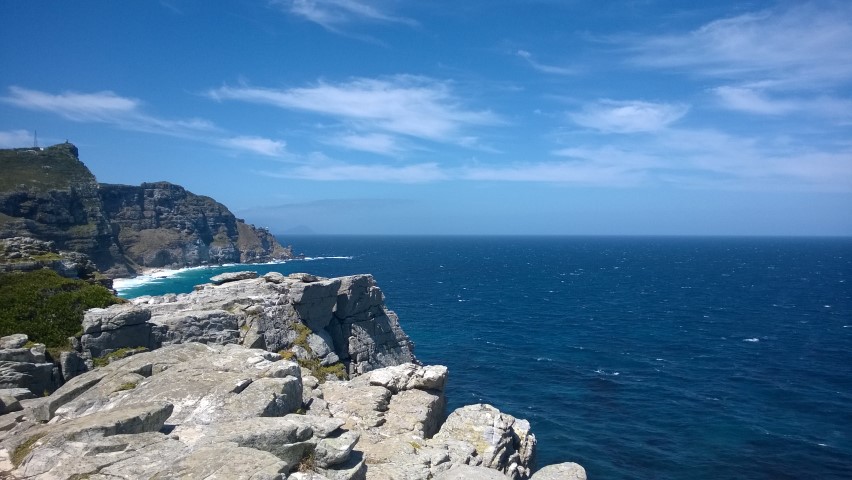
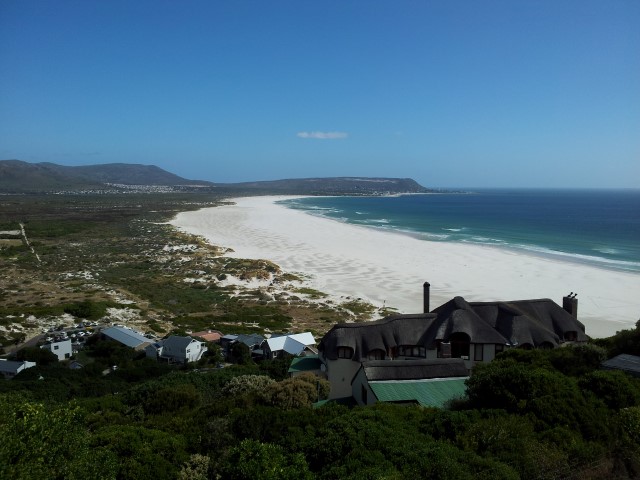
Driving down the cape Penisular towards Cape of Good Hope on the eastern side and back up on the western side via the fantastic Chapmans Peak Drive
Rainy morning yesterday, and Table Mountain was completely covered in cloud. There’s an interesting cloud that forms around the mountain that the locals call ‘The Tablecloth’, although yesterday it was really just thick rain clouds and quite a bit of rain. Not good for seeing Cape Town’s most famous landmark, so we postponed it for another day.
It fined up in the afternoon and we went out and did stuff. I walked up to the local shops and got my hair cut. Cost me a third of what I pay at home, it’s very short and I’m very happy with it. Then we drove into the city to have a look at ‘downtown’. Parked in a parking station near the main railway station and walked a couple of streets to a mall. I took more care to be aware of my surroundings and my bag when we were walking around near the station … but then, city train stations around the world are like that – busy, full of people, some of whom are out to try their luck. There is an open air market nearby and as we were walking back to the car, a young boy spoke to Greg and stuck his hand out … a second before he spotted us 2 white people, he had been playing with a balloon near his parents’ market stall. Nice try, kid, but just sticking your hand out for money doesn’t work on us.
We walked up the Mall and stumbled upon a piece of the Berlin Wall. Very exciting as it’s the only piece in Africa. I knew it was somewhere in South Africa, but kept forgetting to find out where it was, so just coming aross it was very serendipitous. A couple of women walked past while we were looking at it and photographing it, and they doubled back when they realised what we were looking at.
We walked down Long Street, which is pretty touristy, full of souvenir and clothes shops. Stopped at a bakery for afternoon tea and to have a read of the map to see what we should see. It’s always interesting to see how a city utilises public spaces.
There’s a park called the Company’s Garden, named for the Dutch East India Company – a tree-lined green space that has museums, the library, a beautiful rose garden and potager and Parliament House. It has the country’s oldest cultivated tree in it – a pear that was planted around 1652 which still bears fruit. The Garden was originally a fruit, vegetable and medicinal herb garden that gradually expanded to 18ha, then became the city’s botanical garden. It finally became a public recreational space in 1913, when the Botanic Gardens were moved to Kirstenbosch, to an estate bequeathed by Cecil Rhodes. There is a statue of Rhodes in the Company’s Garden, and 2 statues of Jan Smuts, a military man, politician and supporter of segregation. There was also a statue of George Grey, who was a soldier, explorer, Governor of South Australia, twice Governor of New Zealand, Governor of Cape Colony (South Africa), the 11th Premier of New Zealand and a writer. So our home town and Cape Town have some shared history. Greg spotted the George Gray statue and remembered that ‘our’ SA had a governor by that name. Wikipedia told us the rest.
The Castle of Good Hope is the oldest existing colonial building in South Africa, and it located just a couple of blocks away from the Company Gardens and also from the railway station. We walked through a large open car park where stallholders were packing up for the day, and just looked at the castle walls. It was built by the Dutch East India Company between 1666 and 1679, originally on the coast of Table Bay, but is now located inland because of land reclamation that was undertaken in the 1930s & 1940s.


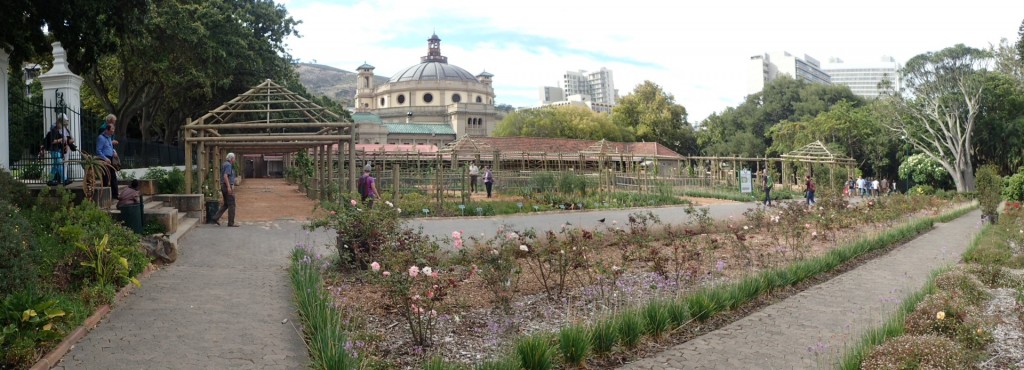
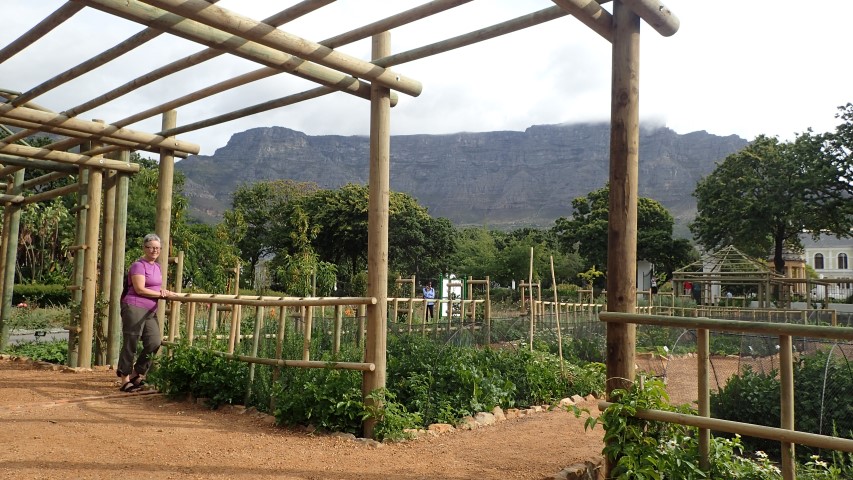
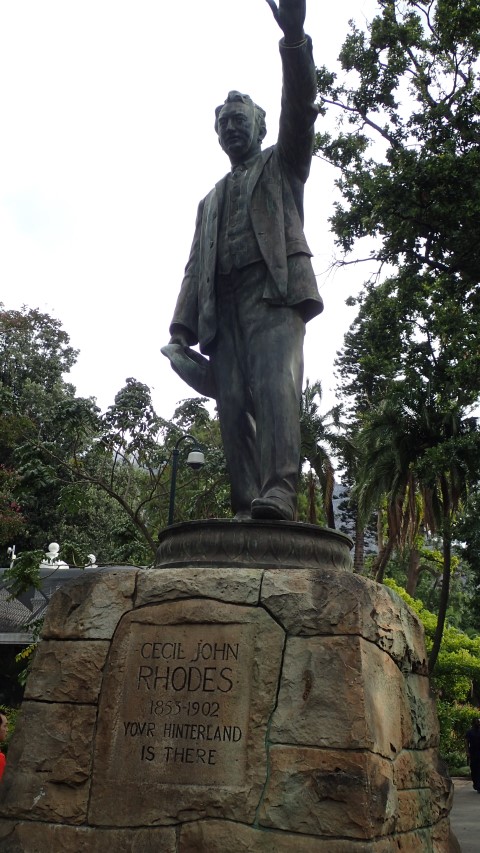
Crossing the Karoo a semi-desert area in southern South Africa on the way to Cape Town
We got to Cape Town / Kaapstad / or just CT yesterday evening. 2 days, 1400 kms from Joburg, with an overnight stop at Colesburg on the way. A lot of it was driving through the Karoo, a semi-desert region that covers much of the lower third of the country. Greg’s dad Ron commented on how green everything looked when we were traveling north … as we headed south, it looked more like home in summer. At times it felt like we were driving through the Outback, or through Utah, and at one point the mountains to the east looked exactly like the lower Flinders Rangers.
We spent the night at the only caravan park in Colesburg, but stayed in a ‘bungalow’ rather than put our tent up. The bungalow was only about $15 more than a tent site on gravel with no shade, so it took about a split second to make that decision. Colesburg is obviously THE halfway point between JHB and CT. It’s about 680kms from JHB, and has heaps of accommodation – pubs, B&Bs, guesthouses, cabins. Bit surprising that there was only one caravan park, but then, it only had a couple of caravans in it, and we didn’t see any on the road. Most of the traffic on the N1 freeway was trucks. Loads of trucks.
About 200kms from CT, we drove down into a valley into vineyards – what a spectacular view! Mountains on both sides, with a green valley full of vines. It looked absolutely beautiful until we got a bit closer and saw the ugly side – shanty towns full of tiny corrugated iron huts where the workers live, with a new section of more substantial dwellings that were the size of a double garage. We passed a sign on the freeway warning motorists to ‘beware of robbers selling stolen grapes’. About 500 metres along the road, we spotted our first ‘robber selling stolen grapes’! Beautiful looking grapes, but I can’t imagine anyone actually managing to stop on the freeway anyway, it was a very busy stretch of road.
Driving into Cape Town was pretty easy, even in afternoon peak hour traffic. Freeway for all but about the last 10kms, and we found the apartment with no trouble. We’re staying in Observatory, affectionately known as Obz, which seems to be a pretty trendy part of town, and has been described as the city’s most bohemian suburb. The apartment is a studio on the top floor of a large building that has a catering company on the ground floor and a climbing gym/camping store opposite. You can see a couple of photos here, including a glimpse of Table Mountain in a photo that was taken from the kitchen window. It was quite a thrill, seeing Table Mountain as we drove into CT. I’ve gotten used to the idea that we’re actually in Africa, but I’m really looking forward to visiting the Cape of Good Hope – it’s one of those places that I learnt about at school, but never thought I’d get to see.
We went out to find some dinner last night, just up to the local shops in Observatory. There were at least a dozen cafes and restaurants offering all kinds of cuisines, but on our host’s recommendation we went to Cafe Ganesh, which offers ‘Cape Malay’ food and African music. It started in the 1970s and attracts locals, students, artists, musicians and the occasional tourist. I had Umngqusho with Mutton Stew, Greg had an Ostrich and Lamb burger with chips. Umngqusho is a Xhosa dish made with sugar beans, samp (cracked white corn), onions & butter. Apparently it was Nelson Mandela’s favourite food, and to pronounce it properly the ‘gqu’ sound is actually a click of the tongue. I’ll have to practice a lot before I can get it right. The food was delicious, cheap and my plate was so full, I couldn’t finish it all.
We’re hearing a lot more Africaans here than we heard further north, and a lot of the street signs are in Africaans. Lots more Africaans-language newspapers and magazines.
From the northern-most point of this trip, Kasane, to Cape Town is around 2,500kms, which is about a quarter of the length of Africa. Greg is sitting here researching 4WD hire for our next visit here. As other friends have said, this place gets under your skin.
And now, a whinge about the second rental car we’ve got. You really only need to read it if you’re keen, or if you’re thinking of purchasing or renting a VW Polo.
In a word, don’t!
Greg ordered a Corolla sedan or equivalent from Avis, and they gave him this Polo instead. Surprising as usually rental car companies do an automatic upgrade rather than a downgrade, but maybe the Avis rep thought she was being nice by giving him an almost-new car. 760kms on the odometer. But what a pile of plastic rubbish! It’s much smaller than the Corolla we had when we started the trip, heaps less space in the boot and on the back seat.
Is there a law of physics that states that the amount of stuff you have expands or contracts to fit the available space? If it hasn’t already been claimed, let’s name it “Judy & Greg’s law”.
We had everything fitted into the Corolla very nicely, but in this rubbishy Polo, it’s all just crammed in wherever we can squeeze it. There are 3 narrow slots around the front passenger seat – one in the door, one under the glovebox and one at the side of the seat, and I have no idea why they are there – too thin to put anything in, they’re really just a waste of plastic. Whenever we lock or unlock the car, it beeps. To unlock the passenger doors, you have to press the unlock button 3 times, so that’s 6 annoying beeps. The only way to unlock the boot is via the clicker-thingy, no button to open the boot in the car, and it beeps too! Greg had trouble starting it this morning, so we’re not even all that confident that we’re going to get it all the way back to JHB. It really is a cheap heap of crap.
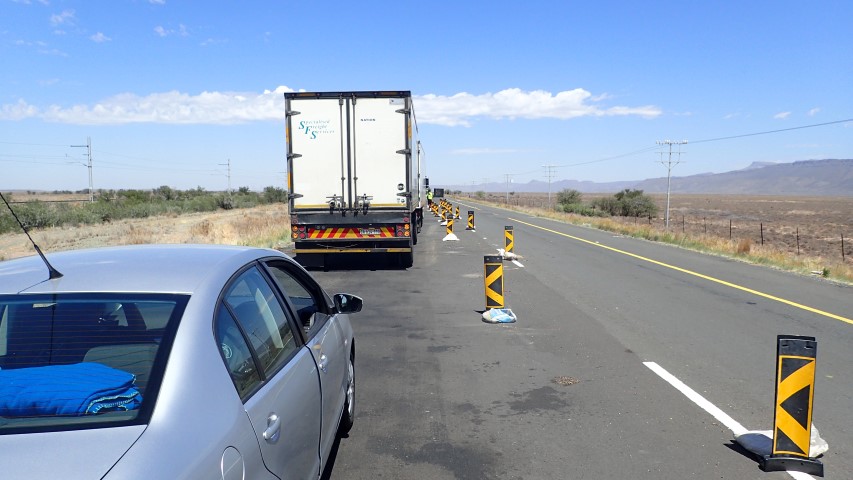

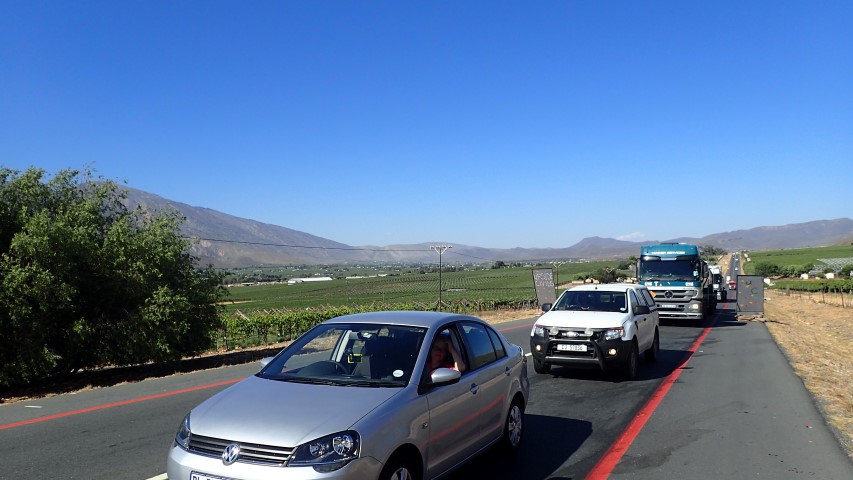
We bumped into our host this afternoon and filled him in on what we’ve been up to since we saw him on Sunday morning. He was gobsmacked when we told him that we had travelled on a suburban train – none of his other guests has ever done that … in fact, he has never caught a train in his own city. He’ll probably dine out on his ‘crazy, stupid Australians’ story for months. But we were completely safe in that train, no one gave us a second glance. Wouldn’t do it late at night or in the early hours of the morning, but then I wouldn’t do it at home either. And now I think about it, I’ve never actually caught a train in Adelaide.
The Hop On, Hop Off bus worked well for us today. We really only wanted to use it to get to the Apartheid Museum, but they had a commentary running that could be accessed via headphones and we learnt a lot about the city and its history as we drove along, and we got to see a lot more of the city, without Greg having to deal with the crazy busy traffic, pedestrians and non-working traffic lights.
Jozi was originally founded because it had the world’s largest gold deposit running beneath it. It’s world’s largest city not situated on a river, lake or coastline. Just having heaps of gold was apparently enough of a reason, although the orginal founders (several guy called Johannes, plus a few others) didn’t expect the settlement to last. Cheap, black labour was brought in to mine the gold … and that indirecly lead to segregation and to the Apartheid policy being implemented in the late 1940s. I don’t need to write any more about apartheid – there are already millions of words written about it, but I’ll tell you about what we saw, and how the museum made me feel.
When we bought our tickets, we were allocated to be ‘white’ or ‘non-white’ and entered the museum through separate doors depending on the colour of our skin. All of the museum is very well done, it traces the history of South Africa and features biographies of early prominent citizens, including Mohondas ‘Mahatma’ Ghandi who lived in South Africa for 21 years, from 1893–1914. His experiences of discrimination, racism & injustice in this country influenced the rest of his life.
The tour through the museum took us through the timeline of segregation to apartheid, life under apartheid in the 1960s, political executions, uprisings, the fight for freedom, Mandela’s release on this day 25 years ago, February 11th, 1990, the violence of the early 1990s, the transition to democracy, the 1994 election and beyond. Lots of photos, videos, mementos and other items on display.
I spent most of my time there with tears in my eyes and a lump in my throat. It is incomprehensible that people could be cruel to other people because of the colour of their skin AND that there were laws allowing such cruelty to occur, for decades. 2 images from the museum are imprinted in my memory – the nooses hanging from the ceiling in the Political executions room, which listed the names of hundreds of people detained without trial and subsequently killed, although officially many of them ‘committed suicide by hanging’.
The other image is an aerial shot of a long, long line of people queuing to vote in the 1994 election. I couldn’t find that photo, but there are plenty more on the internet, the one below is from the Australian Electoral Commission website. The ballot papers listed the political parties, with a photo of the party’s candidate rather than their name, beside each party.
The museum was confronting, heartbreaking, optimistic for the future and definitely well worth visiting. I’m glad we got there on our third attempt.
While we were waiting for the bus this morning, we chatted with the tour guide, a young man who was born at the Chris Hani-Baragwanath Hospital in Soweto and lives in one of the townships, Orlando, which is where Nelson Mandela and Desmond Tutu also lived. His family is from near Louis Trichard in the Limpopo province in the north-east of the country, and he was excited to hear that we had been there. He speaks 8 languages! He was aghast when we told thim that a house in our street had recently sold for almost $1 million. Housing here is much cheaper, but then, housing in most places in the world is much cheaper than in Australia.
It’s my birthday today, so let’s celebrate with a song that will get your toes tapping. Its origins are South African township music.
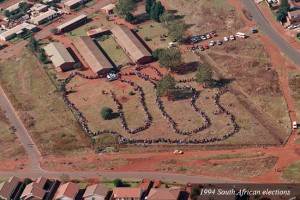
Cost of train ticket to travel less than 2kms on fancy, almost-empty airport train – $15.00
Cost of train ticket to travel 10 stations on very crowded suburban Joburg train – 80c
Time it took us to get the 14kms from the airport back to Maboneng – 2+ hours
The experience of being the only 2 white people in a 12 carriage train packed full of people – priceless!
We had to return the rental car yesterday morning. For complicated reasons, we couldn’t just hire one car for the 6 weeks we’re here, so Greg will pick up another car this afternoon, then we’ll head to Capetown tomorrow. The first car got bits of tar on it when we were in Botswana – we drove on a section of roadworks near Francistown and ended up behind a tar truck. Ick! First stop yesterday morning was a car wash we spotted from the freeway on the way to the airport. It took them a while, but they did a fantastic job, got all the tar off and we returned the sparkling clean car to the Avis desk at the airport. Then the fun began.
There is an airport train that goes part of the way into the city, but not where we wanted to go, or it is possible to change to a suburban line and get closer to where we’re staying. The nearest station to Maboneng is Jeppe. The first train trip all went smoothly and lasted about 3 minutes, then we walked around the corner to the Rhodesfield suburban line, past lots of empty bus stops. There was a sign up at the airport warning that there was an ‘illegal strike’ and that buses would not be running. Um, what other kind of strike is there?
So, to the new Rhodesfield Station. 4 people sitting at the security gates to check that everyone had a valid ticket, but no one actually selling tickets at either of the 2 ticket windows, and no automatic ticket machines. 4 platforms, but absolutely no information about which platform our train left from. The woman mopping the steps told us to go to platform 1 and asked us to take the lift so we wouldn’t mess up her clean floor. Fair enough.
And then we waited. And waited. And waited. The fancy digital signs on each platform stayed blank the whole time we waited, no clue there about where any of the trains were going. When the first train heading in the direction we wanted to go pulled in, we asked a fellow passenger and he told us it wasn’t the one we wanted. It turned out that he was waiting for the same train as we were.
The other stations had sellers offering various items for sale – fruit, lollies, newspapers, but Rhodesfield had nothing interesting, unfortunately. We watched 4 workers pick up rubbish off the tracks … well 2 picked up the rubbish along the tracks, 2 walked on the platforms beside them waving white flags. No idea why, it’s not like a train would be able stop because of a couple of people picking up rubbish. Absolutely no rubbish bins anywhere along the platforms, hence the rubbish on the tracks.
We waited over an hour for the train, and so did other people around us. No one got impatient, everyone just waited. Greg went and checked the timetable at the top of the stairs and learnt that there is meant to be a train every 30 minutes. We had probably just missed one when we got there, the next one just never showed up, and the one we finally caught was about 10 minutes late. The best way to make sure you’re on the right train is to match the train number on the timetable with the number on the front of the train’s engine.
It was quite full when we got on, and got much, much fuller as we headed into the city. However there were sellers on the train, battling their way through the crowded carriages, selling ice blocks in plastic bags, newspapers, chocolates, shoe polish, coloured plastic document folders, biscuits. When the train emptied out a bit and we got a seat, we bought a newspaper. It cost 30c.
Only a few blocks from Jeppe Station to the apartment, but all that waiting had made us hungry, so we called in to Soul Souvlaki for lunch. There’s a photo of their ‘shop’, made from parts of a shipping container, in the Soweto post. The souvlaki were delicious.
Later in the afternoon we walked up to the Carlton Centre. 50 storeys high, the tallest building in Africa, and apparently it used to be the tallest building in the Southern Hemisphere. Part of it was formerly a posh hotel, the lower storeys are now a shopping centre with a large supermarket. We got more internet access at Vodacom and food to cook for dinner at the supermarket – chicken breasts and vegetables that I cooked in an oven bag. My first ever attempt at using an oven bag, it was all delicious and I realised that oven bags are perfect for cooking in an oven that you don’t want to dirty … but you all probably knew that anyway. We also bought a 1 liter carton of white wine, for $3. Yep, we’re classy when it comes to our wine choices.
We’ve found out that there is a ‘Hop on, Hop off’ bus that goes to the Apartheid Museum, so we’ll have a third try at getting there today.
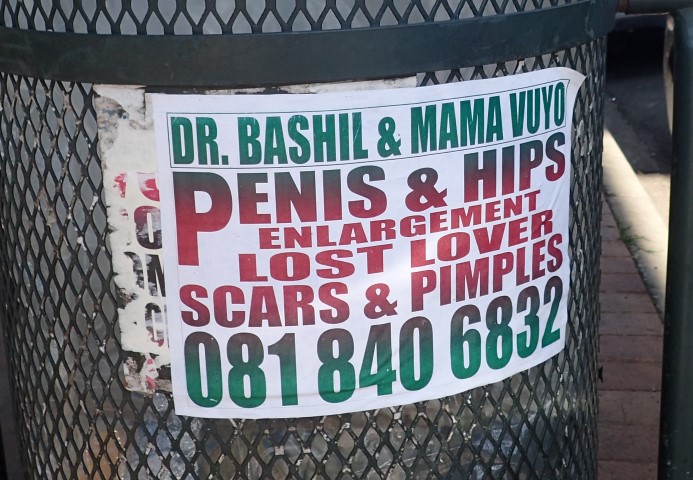
The short version: went to Soweto, got lost few times, lived to tell the tale.
The longer version:
Yesterday morning (Sunday) we went to a market near where we’re staying in Maboneng – lots of great food including stalls set up by the cafes and restaurants around here, probably a good way for them to showcase what they sell and attract customers to their real places of business. Design and fashion stalls on the first floor, but we didn’t get up there, we were so busy looking at all the food. We had morning tea – Persian minted lemonade and 2 flavours of homemade marshmallow between chocolate biscuits for me, a jam & cheese roosterkoek (bread roll) for Greg.
And then we had other things to do while we still had the car, which we returned to the airport this morning. The hardest things to get to without a car are Soweto and the Apartheid Museum. Although after it has just taken us 2 hours to travel the 17kms from the airport back to the apartment by train, I think everything in Johannesburg is hard to get to without a car.
We tried to visit the Apartheid Museum. Twice.
This country suffers from insufficient power, and a lot of Jozi was affected by ‘load-shedding’ yesterday for 5 or 6 hours. The lifts in the building we’re staying in weren’t working, neither was a lot of the emergency lighting in the stair wells and the emergency exit signs just stopped at the ground floor without pointing us to an exit. I’m glad we weren’t trying to find our way out in a real emergency. We have learnt to take torches when we go out anywhere now, and we’ve checked out fire exits, just in case.
Throughout Jo’burg there were no traffic lights, some places had their own generators, the rest were in darkness. I’ve gotta say though, motorists here are much better at coping without working traffic lights than Australian drivers. They treat each intersection with blacked-out lights as a 4-way stop sign, and everyone takes their turn. Very sensible.
The Apartheid Museum is next door to a casino and they share an entrance, but the boom gate wasn’t working and the security guy warned us that the museum was closed.
So we went to have a look around Soweto instead. People and minibuses everywhere, we got lost a few times and ended up in suburban back streets, but it didn’t feel unsafe – people were just getting on with their Sundays, mowing the lawn, kids playing, the usual stuff. We drove past the Regina Mundi church, the largest Roman Catholic Church in South Africa, where Archbishop Desmond Tutu presided over several meetings of the Truth and Reconciliation Commission after the end of Apartheid in the second half of the 1990sMore recently Michelle Obama visited the church on the South Africa leg of her tour of the continent and she addressed the Young African Women Leaders Forum there.
We drove through several of the townships that make up Soweto (South Western Townships) and tried to find Vilakazi street, where both Nelson Mandela and Desmond Tutu lived – probably one of the very few streets in the world where 2 Nobel Prize winners have lived. We didn’t find it, possibly because we were distracted by the tour bus full of white people who were standing on the corner and we didn’t see the street’s name. We drove around a bit more, passing a large group of people dressed in white and singing something religious. Beautiful harmonies. Then past 2 beautifully painted cooling towers from a decommissioned power station, a large new shopping centre, the Chris Hani-Baragwanath Hospital (reputedly the 3rd largest hospital in the world) with Africa’s largest taxi rank opposite. Approximately one third of Joburg’s population of nearly 4 million people live in Soweto, and over 98.5% are black.
On our way back to Maboneng, we tried the Apartheid Museum again, but the power was still out. So we took the car to a ‘secure parking lot’ near the apartment and went back to the Arts Market for lunch. Greg went back to the roosterkoek lady for a pork rib one, the only kind left by 2.30pm. I had an Ethiopian platter that cost all of about $9 and would have fed 2 people easily. The platter was lined with injera (Ethiopian flat bread), then had spoonfuls of different curries and sides on top of it, including a chicken drumstick, lamb, beef, pumpkin, spinach, potatos, lentils, cabbage, beetroot and probably a couple more that I’ve forgotten. To eat, you break off pieces of the injera and use it to scoop up small portions of the food. I’m sure the Ethiopians are much better at it than me, but it was all delicious and fun to eat. We were interested to note that the first time we visited the market, most of the patrons were whities, and then when we went back later in the day, it was mostly blacks.
The Johannesburg Culinary and Pastry School were selling a range of delicious pastries and cakes, and I bought a lime cheesecake and a chocolate-drizzled churro which ended up being dinner for me and himself respectively.
I’ll write about today’s experience travelling by train later. That’s a whole post by itself!
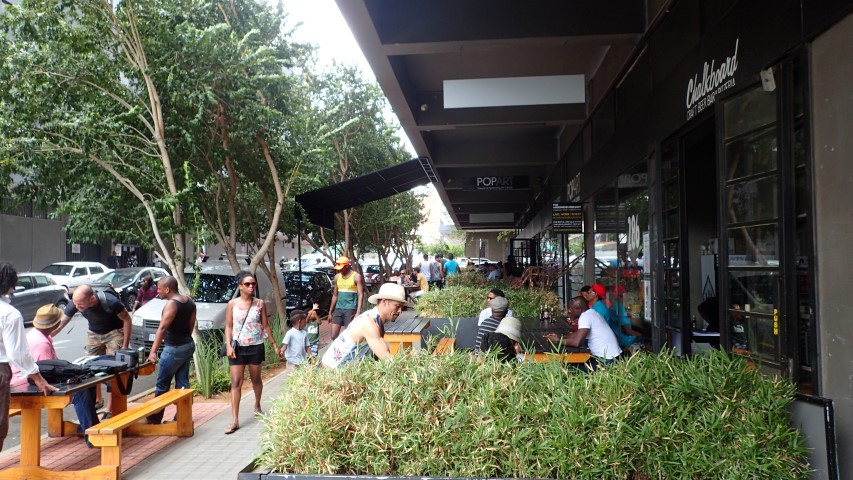

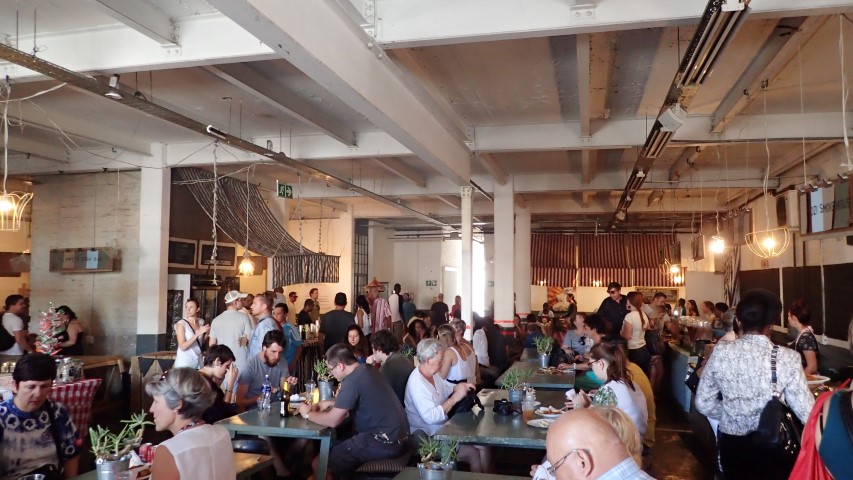
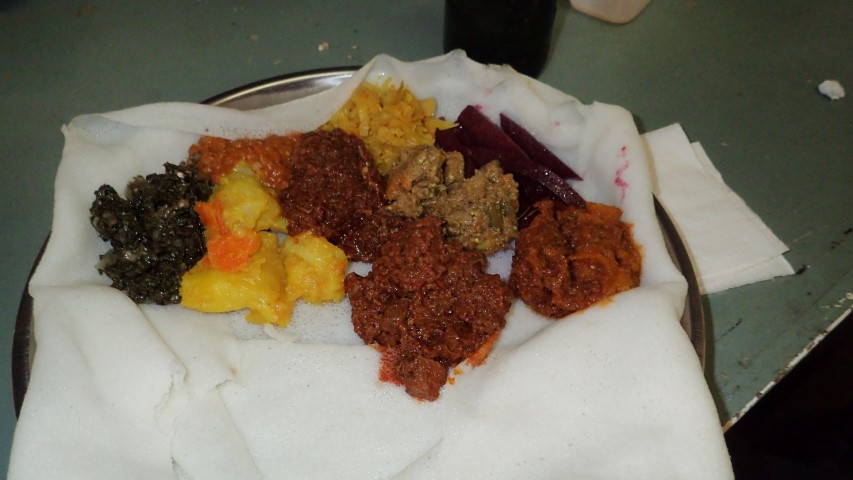
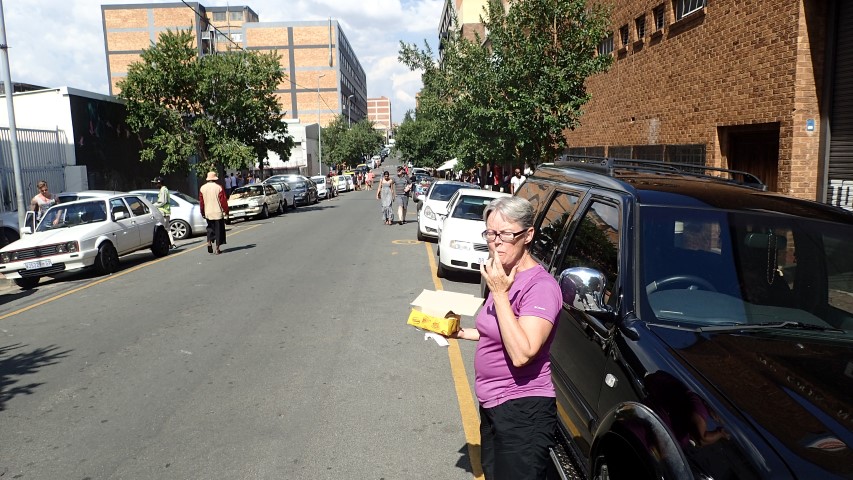

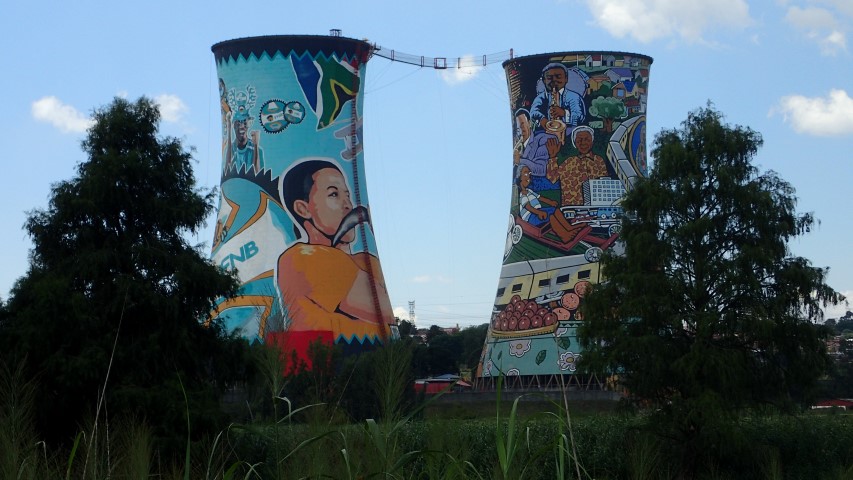
Driving through Soweto. Sellers at every intersection selling ice blocks, papers, beads, sunglasses and more:
Because we have had poor internet we have not been able to upload videos until now. Here are a few:
Driving through Botswana near the South African border. We thought the potholes were bad, but they got much , much worse on the South African side
Wildlife tally for Friday & Saturday Feb 6 & 7
antelopey thingies – impala, springbok, nyala and a new one that we hadn’t seen before
buffalo
hippo
zebras
crocodile
warthogs
New to the list – a bontebok that was beside the path as we drove out of Malolotja Nature Reserve yesterday morning.
The day started off cool and misty, but once the mist had lifted, it warmed up. We had planned to have a drive around a couple of the places of interest in the nature reserve, but the first track we took was so bad, we gave up and left the reserve. The previous afternoon the receptionist had marked a map to show us the ‘roads’ we could take, and the 4WD-only tracks, but they all seemed more like 4WD tracks!
I’m feeling even more relieved that we spent the night in the log cabin rather than the tent – a Swazi newspaper headline this morning reported that ‘2 students were struck by lightning, 1 died’ after the Thursday afternoon and evening thunderstorms.
We drove to Mbabane, the capital to find some internet access and lunch. We tried an internet cafe, paid for 30 minutes each, but it was so slow we gave up after 15 minutes, having achieved absolutely nothing for the $5 we spent. The steakhouse chain we had lunch at offered free wifi, so we were able to get a few things done while we had lunch.
Then on to Manzini, the largest city in Swaziland, just for a look. We wandered around the local market, but by this stage our nerves were so frazzled by the appalling driving that we really just wanted to get off the road and stop for the day.
We got an unpowered tent site at the Mlilwane Wildlife Santuary – all the powered sites were reserved by a large contingent of campervans, the most we’ve seen in Southern Africa. We could have stayed in ‘beehive hut’, a round, domed structure made of woven grass arranged in 3 circular ‘villages’, but we were both happy to get back to our tent. We were visited by the local wildife – zebras, warthogs, impala – and a couple of other families arrived later and set up their tents.
Today we have driven back to Jo’burg, where we’ll spend the next 4 days staying in a loft apartment in Maboneng, a newly trendy part of town. Formerly an industrial area, the developers have bought up a lot of factories and warehouses and turned them into housing, restaurants, arts spaces and shops. The apartment we’re staying in belongs to a young man who works for the developer. You can see photos of it and the surrounding area here.
It’s all happening down on the street, 2 floors below us, and we’re heading out to find some dinner. The Maboneng Precinct website lists over 20 local restaurants & cafes offering a variety of cuisines, so I’m sure we’ll find something interesting down there.
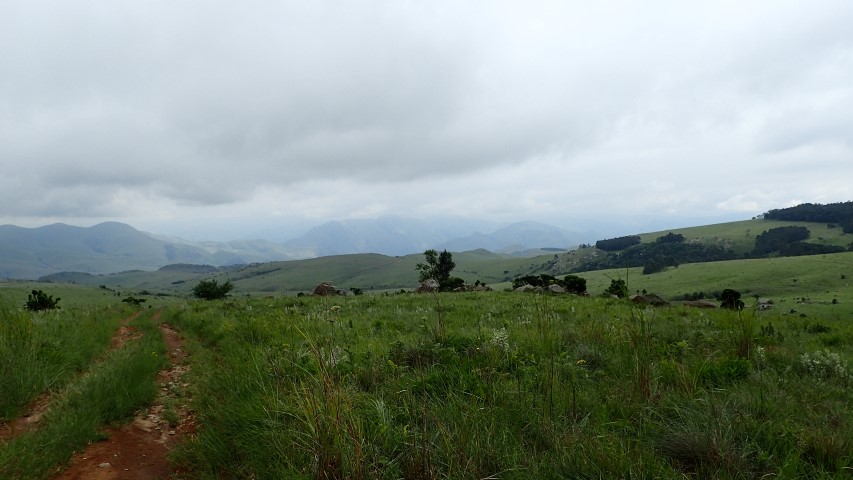

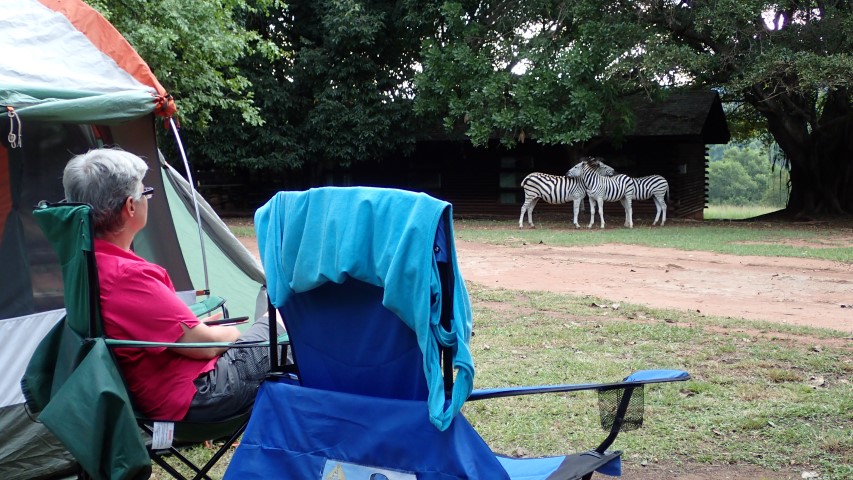
Wildlife tally for Thursday Feb 5
elephants
antelopey thingies – impala & springbok
buffalo
hippo
zebras
white rhinos
lions – we drove up to a ‘wildlife jam’ and someone stopped to tell us that there were lions with cubs. We saw 2 lionesses, but didn’t manage to see the cubs.
Now that we’re out of Kruger, we have to retrain our eyes to stop looking for wildlife. A car stopped by the side of the road isn’t looking at something interesting that we might also want to look at, it’s just stopped by the side of the road. A tall vertical tree trunk probably isn’t a giraffe; a large greyish rock isn’t an elephant, rhino or hippo and that branch of dead brown leaves on a low-growing shrub isn’t a lion. We’ve had a lot of fun and success looking and finding wildlife, though.
We’re in Swaziland. I don’t think I’ll ever get past the thrill of entering another country just by driving across a border. Something to do with living on a very large island and having to travel for HOURS to just leave the country, plus the time it takes to get to another country from Australia. We’re getting the hang of negotiating immigration and customs now that we’re in our 4th African country, but we need to get better at answering the inevitable question: ‘Where are you going?’ Our vague ‘oh we’ll camp somewhere near something’ isn’t acceptable, and nearly every time we go through a border check we have to drag out our maps to point to where we’re headed, because we can’t quite remember or pronounce the complicated African names.
It’s so different here, even though it’s only about 50kms south of where we were. We left Kruger mid-morning with the temperature in the low 30s, and by the time we got to Malolotja Nature Reserve at around 4.30, we had driven through a thunderstorm and it was a chilly 17C. We’re in the north-western part of the country, just 35kms from capital Mbabane, but we’re overlooking rolling green hills on all sides, with mountains to the west. We don’t have internet access here so I can’t check, but I guess the mountains form the border with South Africa. This part of Swaziland is very mountainous, very green, very scenic and very poor. We drove through eucalypt and pine forests and were alarmed to see a couple of fires in the eucalypt forests. They were in cleared areas, burning the tree stumps and debris. Greg thought that was pretty brave, and not something that would ever happen in plantations at home. But then, if it rains often and as torrentially as it did yesterday, it’s probably more of an issue to keep the fires alight than worry about them getting out of control.
On our way here we stopped at a supermarket in a shopping complex at Piggs Peak, a former gold mining area. Today forestry and tourism are the main industries. Heaps of people everywhere, but only a small carpark that was only half full. Not many people own cars, most either catch minibuses if they can afford them … or walk. The supermarket was well-stocked, but a closer look showed a whole display section with 6 shelves full of the same brand of baked beans. Meat is expensive for the locals, and it seems that they eat a lot of TVP if the range on the shelves was anything to go by – lots of different flavours (beef, oxtail, chicken) packaged lots of different ways – with pasta, rice, curry, vegetables. I bought a packet of ‘chicken flavour with pasta’, which looks rather a lot like beige flour. Cost $1.10, feeds 4 people.
We stayed in a log cabin last night. It cost us $60. I thought that if we camped, we might have to make a few dashes to the car to get away from lightning, and even though Mr Adventure is reluctant to concede, I was right. It hailed a couple of hours after we’d got ourselves settled in, and the storms continued into the night. We had no power until the early hours of this morning, which didn’t really worry us – we cooked on our gas stove and used our headlight torches for light. There was plenty of hot water and we put our refrigerator stuff in the freezer, then moved it to the fridge when the power came back on so it wouldn’t freeze.
Today’s plan is to visit Mbabane and Manzini, the largest city in Swaziland. Manzini (then called Bremersdorp) was the capital until the end of the Boer War, when the British moved it to Mbabane (which probably got its name from a small and bitter high-veld plant), probably because Bremesrdorp had been looted and burned to the ground. The name Manzini, meaning ‘at the water’ was officially adopted in the 1960s. We’re planning on staying at the Mlilwane Wildlife Sanctuary, Swaziland’s oldest nature reserve. It celebrated its 50th anniversary in 2014.
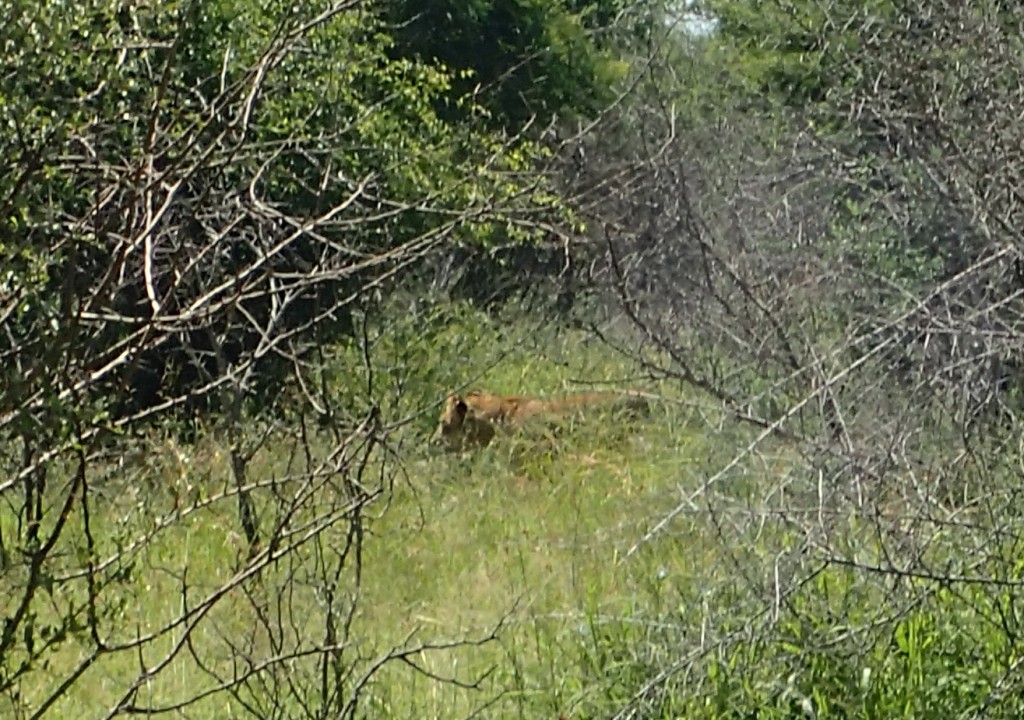

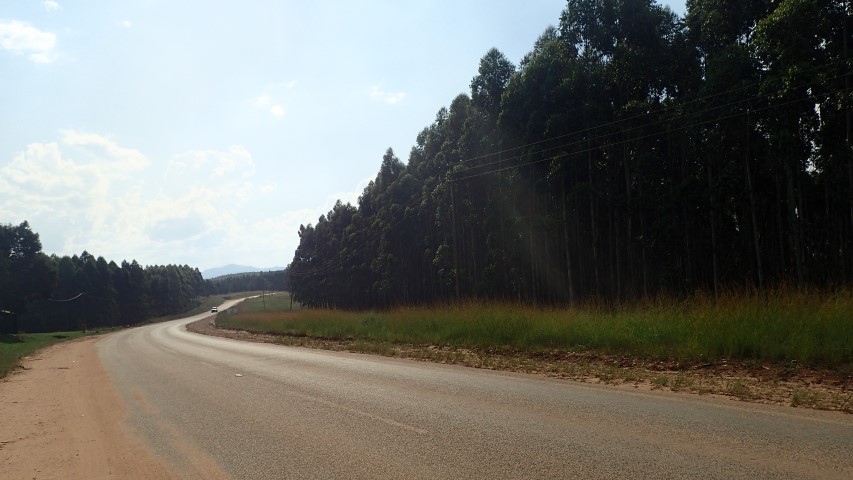
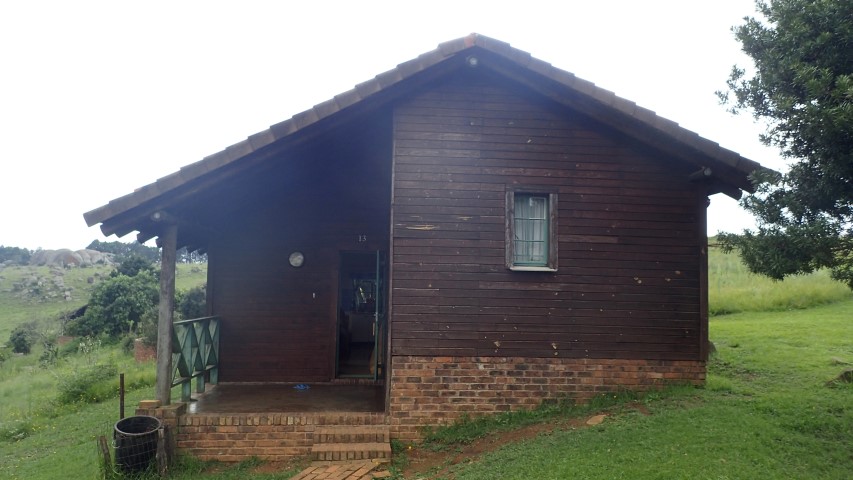
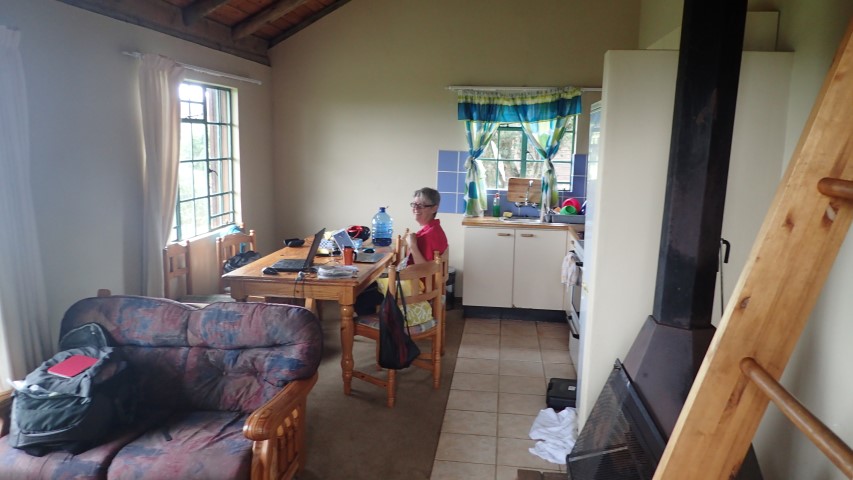
Wildlife tally for Wednesday Feb 4
elephants
giraffes
antelopey thingies – impala
buffalo
hippo
warthogs
zebras
white rhinos
blue wildebeest
tortoise
storks
vultures
New to our list today – a rock monitor who lives around our campsite. A very good reason to take a torch and wear thongs or sandals when venturing away from the tent in the dark.
We took a short drive out to Mlondozi, a popular picnic spot a bit north of Lower Sabie. Up on a hill, it overlooks a river and the Lebombo Mountains, which mark the border with Mozambique. So that’s probably as close as we’ll get to Moz. The picnic area was busy, and I guess in the busy periods it would be impossible to get into … or out of. Not much wildlife around at that time of the day, and it was hot – 37C
We headed back to camp for a swim, then went for a drive later in the afternoon, south towards Crcodile Bridge. We saw 4 more rhinos, including a group of 3. Plus a big group … oops, tower … of giraffes. 8, the most we have seen together. And on the flora side of things, we found sausage trees! Lovely large leafy trees that have red flowers in spring, which become sausage-shaped seed pods that drop in autumn. They are heavy so it’s best not to stand under one of these trees at that time of the year. The only animal that likes to eat the ‘sausages’ is the baboon. The seed pods are very fibrous.
Last night’s dinner was blue wildebeest schnitzel steaks, cooked on a braai! The wildebeest smelt a bit ‘gamey’ when it was cooking, but they tasted very much like beef. 500g cost less than $6, and as Greg pointed out, they were probably as low in food miles and carbon footprint as we could get.
We had a HUGE thunderstorm last night. Clear sky when we went to bed, 2 hours later the lightning and thunder woke us up and we took shelter in the car for a while. This morning … clear sky again, and very high humidity.
We’re leaving Kruger today. Its been an amazing week here, but now it’s time to move on and find more adventures. We’re going to Swaziland for a couple of days and may not have internet access there. In which case, see you on Saturday when we get to Joburg
Everything Greg knows about lions, he learnt from The Lion King movie
A group of lions is called a ‘pride’, but only if they are standing on Pride Rock. We haven’t found Pride Rock yet, so that might be why we haven’t seen many lions.
He keeps looking for meerkats, but hasn’t found any yet. But they must be here somewhere ‘cos we’ve seen heaps of warthogs, and Timon and Pumbaa were best buddies.
Warthogs are much, much uglier in real life than Pumbaa was in the movie. They must have Photoshopped him.
Zazu the bossy bird in the movie (Rowan Atkinson was his voice) was a red-billed hornbill, like the one that fell in love with our car when we camped at Satara Rest Camp. We didn’t realise it at the time or we would have made sure we got a photo. We have seen a few since, but never close enough to get a decent photo.

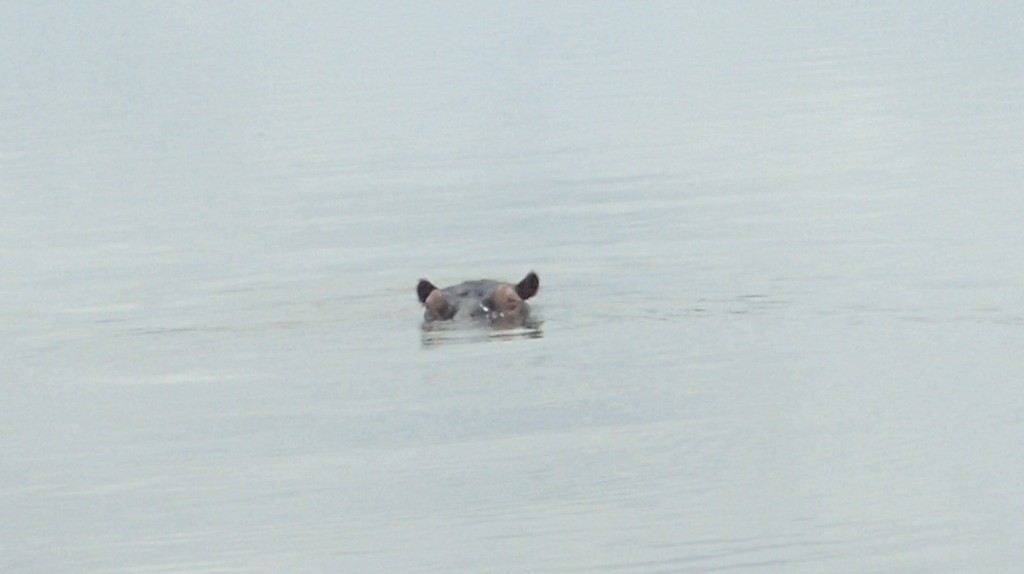
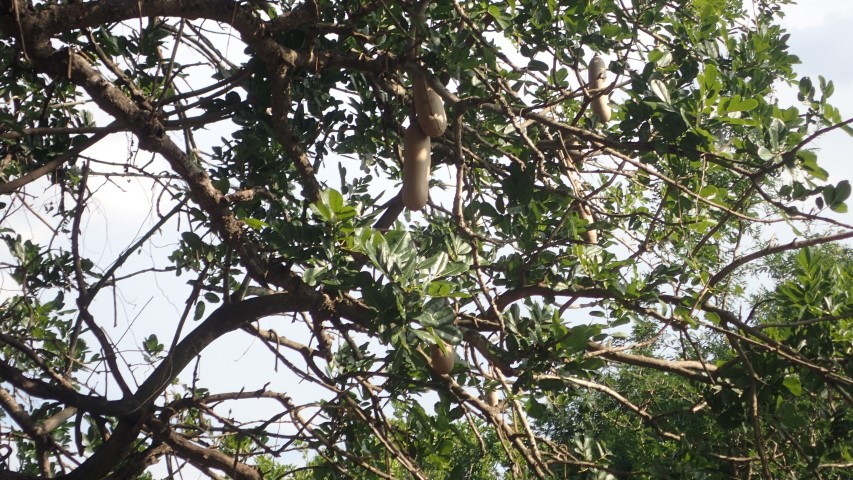
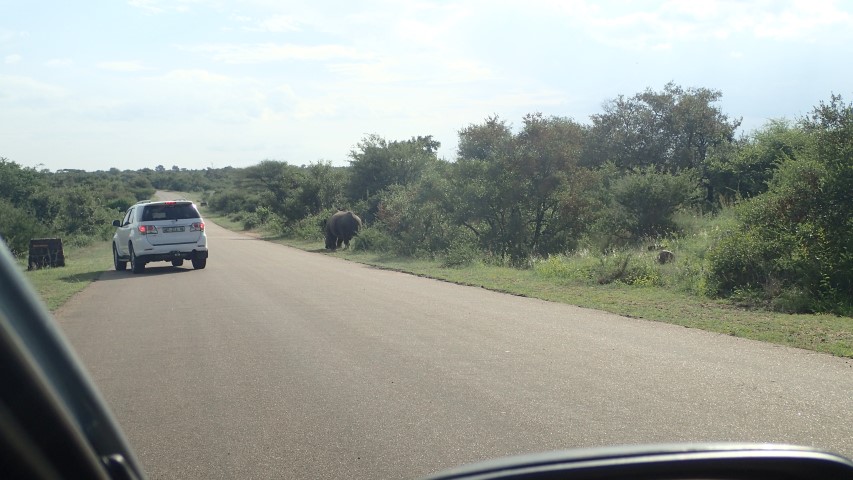

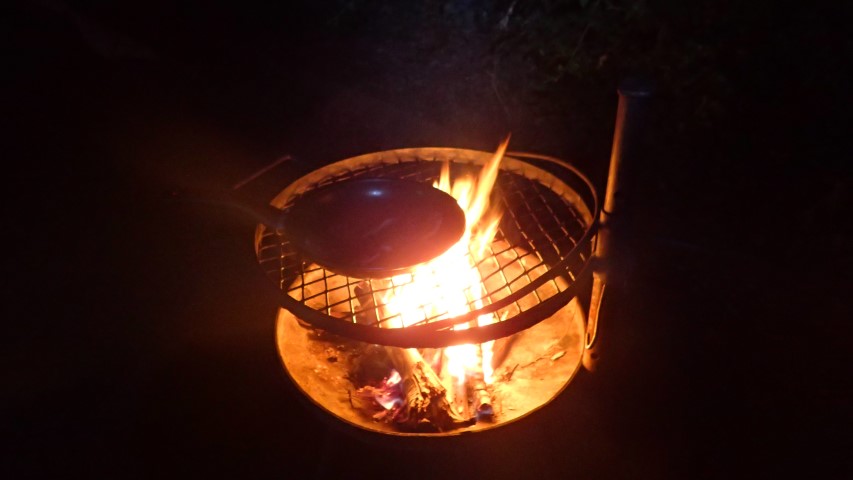
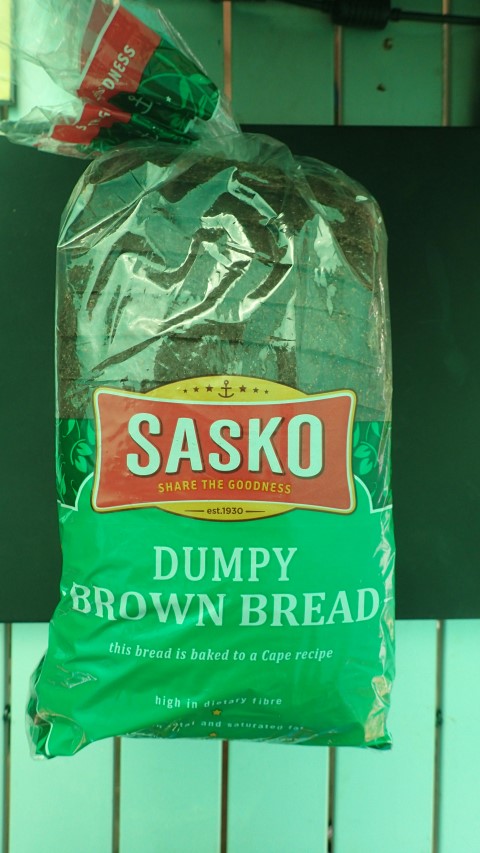
Wildlife tally for Tuesday Feb 3
elephants
giraffes
antelopey thingies – impala and waterbuck, plus a couple of new additions to the list below
blue wildebeest
buffalo
mongoose
baboons
New to our list today
guinea fowl
duiker – a little antelope with very delicate features and tiny horns
springbok – we realise that we’ve probably seen lots of these before and thought they were impala. Springbok have straight antlers that curve at the end. Impala have antlers that twist. In case you were wondering.
vultures – we think a group of vultures should be called a ‘death-watch’. According to wikipedia, it’s a wake, committee, venue, kettle, or volt. ‘Wake’ is pretty good, but I still like our ‘death-watch’ the best.
African wild dogs. We saw a pair of them at a waterhole and got pretty excited. They are rare here, according to wikipedia, in 2009 there were only about 150 in the whole of Kruger.
Number 1 spot must go to the pair of rhinos we saw on our way to Lower Sabie campground yesterday afternoon. I hadn’t really thought we’d be lucky enough to see any here, but this mother and son pair just wandered onto the road we were driving along. They stood there for a couple of minutes while we got all excited and took photos and a video, then they wandered off into the scrub. If we had been just a couple of minutes later, we would never have known they had been there. Rhinos are HUGE! Much larger than I thought they would be.
We’re now in the southern part of Kruger, staying at Lower Sabie campground. Lots more people in this part of the park – campers, tourists, tour buses, sightseers. We drove from the park’s main campground & administration centre Skukuza yesterday afternoon and that was when we saw most of the animals on the list above. We’ve decided that late afternoon drives are the most worthwhile as that’s when the wildlife is out and about. On that same stretch of road, we saw some elephant dung on the road, with lots of whole, unripe marula in it, and a bit further down the road we found the elephant! Wandering all over the road, picking at bits of shrub then dropping then, a bit unsure of where he was going next. We just sat and waited until it was safe to pass him. In the comments section of the Satara Rest Camp post, our friend Hazel warned us about marula-eating elephants, and we’ve seen a youtube video of an elephant destroying a car in Kruger, and didn’t want a repeat of that.
Dinner last night was springbok burgers that we bought from the well-stocked shop at Skukuza. 4 burger patties cost us less than $5. We could also have had warthog fillet, various antelopey-thingie sausages and a variety of other game meat choices, in addition to beef, chicken, lamb and pork. Tonight we’re thinking of cooking some kind of boerwors (long sausage that’s curled into a circle) on a braai, as long as we can get some firewood. We’ll share photos, of course.
The rental car company, Avis, has given us permission to take the car into Swaziland, so we’re heading there tomorrow for a couple of days. We have used Avis for our last few trips and they have alway been very helpful, and even replaced the car when we (and they) couldn’t get a tyre to replace the one that got wrecked while we were driving in Oslo.
I know almost nothing about Swaziland, apart from what I read in Richard E Grant’s book The Wah Wah Diaries, about making his autobiographical movie, Wah Wah. There are a couple of national parks and we’ll camp somewhere. The capital, Mbabane, has a population of 60,000, Swaziland is a landlocked country, sharing borders with Mozambique and South Africa. They have their own currency, but the South African rand is accepted there, which we’re happy about as we won’t have to exchange any money. I went into a bank yesterday clutching a wad of Botswana pula, hoping to exchange them into rand. The teller almost shooed me out, so we’re going to try at Joburg airport. I now know that the rand is accepted in Namibia, Botswana, Lesotho, Swaziland and of course South Africa. Various travel sites also claim that it’s accepted in Zimbabwe, which may be true outside of Victoria Falls, but at Vic Falls it’s USD all the way. Which seems odd when the US has trade sanctions against Zim.
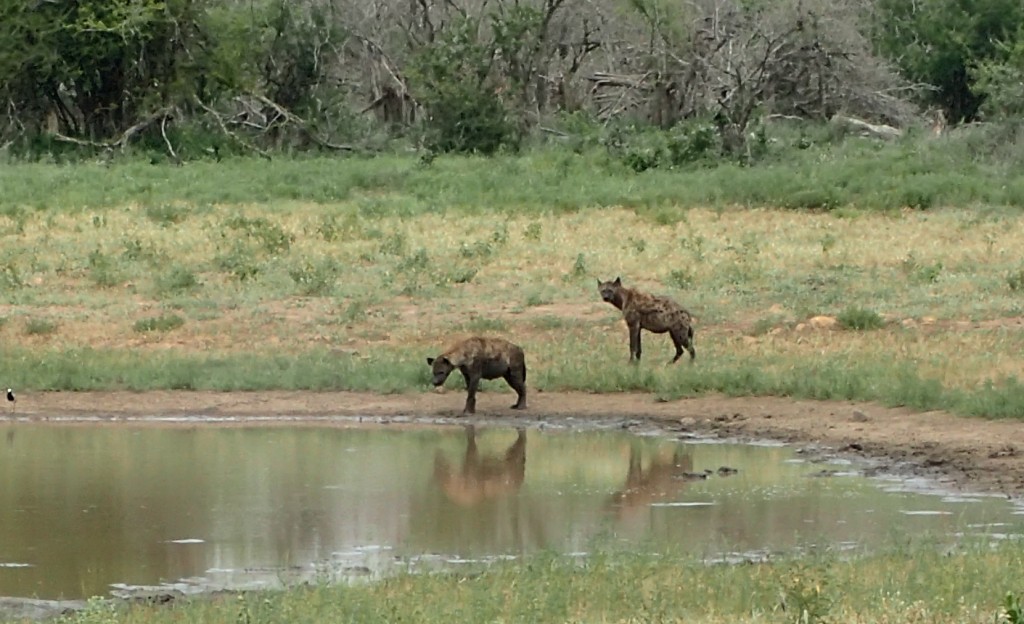

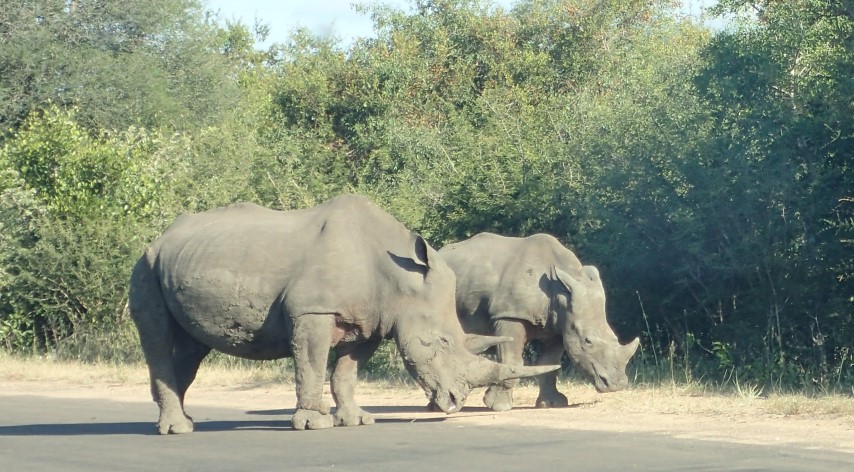
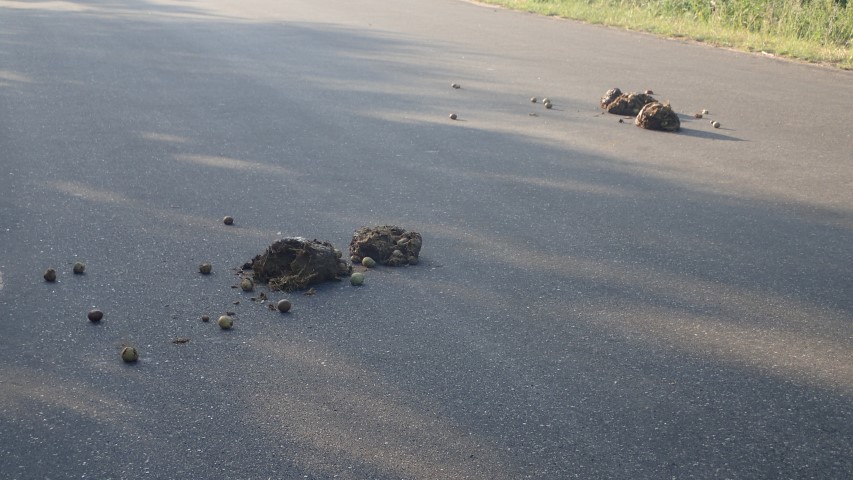
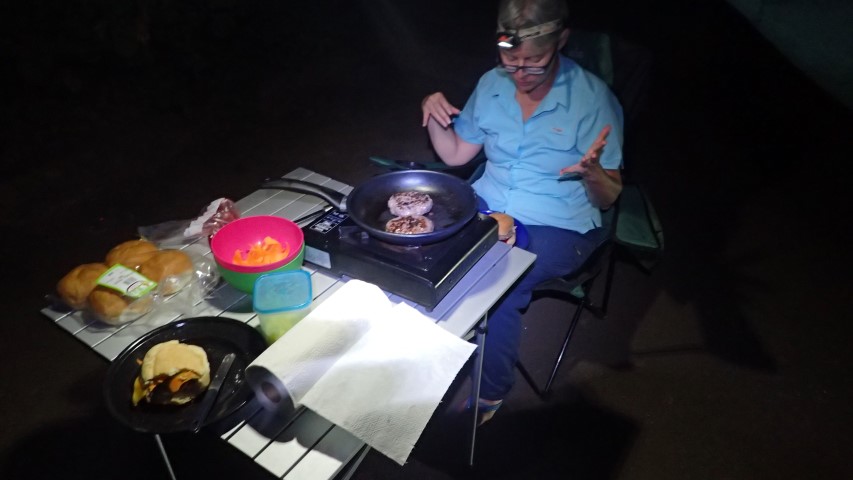
Wildlife tally for Monday Feb 2
zebras
elephants
giraffes
antelopey thingies – impala and waterbuck. We see so many of them that now we just call them all ‘antelopey thingies’. If we find something different that we haven’t seen before, I’ll add it to the list
blue wildebeest
baboons
New to our list today – lions! 2 lionesses actually. They were about 100 metres away from us, sitting in grass near a bush and we could really only see them when they raised their heads. If someone hadn’t stopped to tell us they were there, we wouldn’t have known. Still, it was exciting for us to finally see them. Greg marked the spot on the GPS and we stopped again on the way back – they had moved into the sun as it was late afternoon and ther previous spot in the shade would have been getting cool. Then last night there was one roaring and growling somewhere nearby … on the other side of the campground fence, I hope!
Despite the title of this blog post, we’re not going to Mozambique. We thought about it as Kruger National Park continues across the border into Mozambique to become the Limpopo Transfrontier Park, and visiting the capital, Mabuto, would be interesting. But we can’t take the car, a day visa costs $80 each and we heard a horror story about corrupt Moz immigration officials from a South African woman when we did the tour to Vic Falls. I’ll re-tell it here in the hope that it warns other people to be vigilant at borders.
This woman had been to Moz at least half a dozen times before and travels around Southern Africa a lot, so she isn’t a novice, but the last time she and her adult daughter went to Moz, their passports weren’t stamped and they didn’t realise it. She remembers hearing the thump of the stamp, but it didn’t go on the passport. They only realised when they were trying to leave the country and got hit with a 2,500 rand fine each (around $300). They didn’t have that kind of cash with them, so the officials held the daughter while the woman went try and get the money from an ATM across the border. While she was there, her car was robbed and she lost phones and other valuables. The daughter eventually got away and the woman got in touch with Moz officials much higher up the chain and got it sorted out. But tourists wouldn’t have the time or connections to be able to do that.
So …. anyone travelling to Mozambique needs to be vigilant about making sure their passports are stamped properly.
We’re heading south today, but still staying in Kruger. We’re planning on camping at the Crocodile Bridge campground as it’s good for seeing lions and rhinos. Fingers crossed! On the way, we’re calling in to Szkuza, which is the main camping and admin area in Kruger. There is an Avis office there and we want to get written permission to take the car into Swaziland. If we get permission, we’ll spend a couple of days there before we head back to Joburg on Saturday.

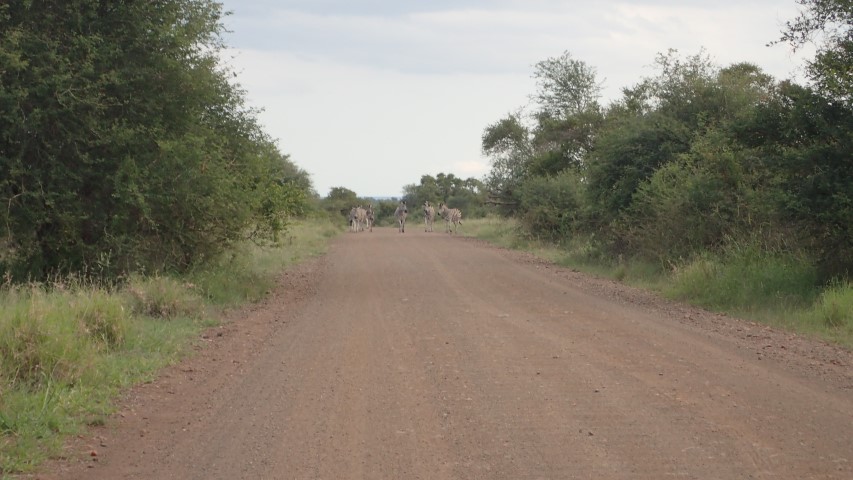
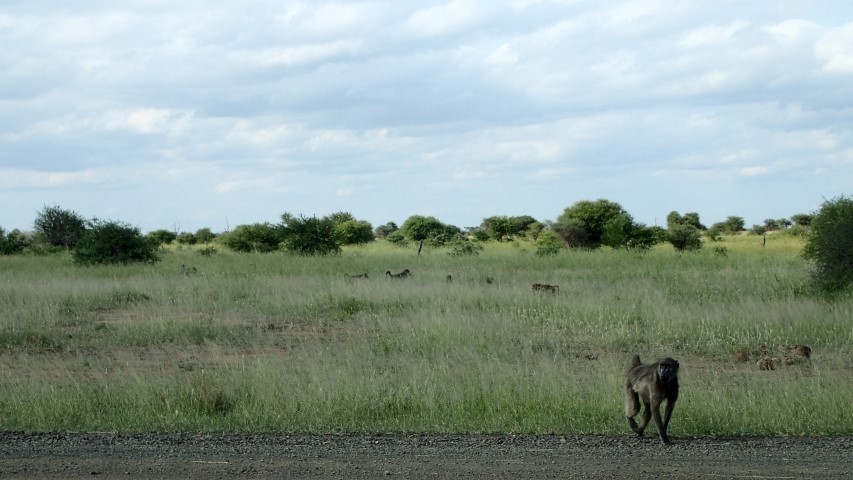
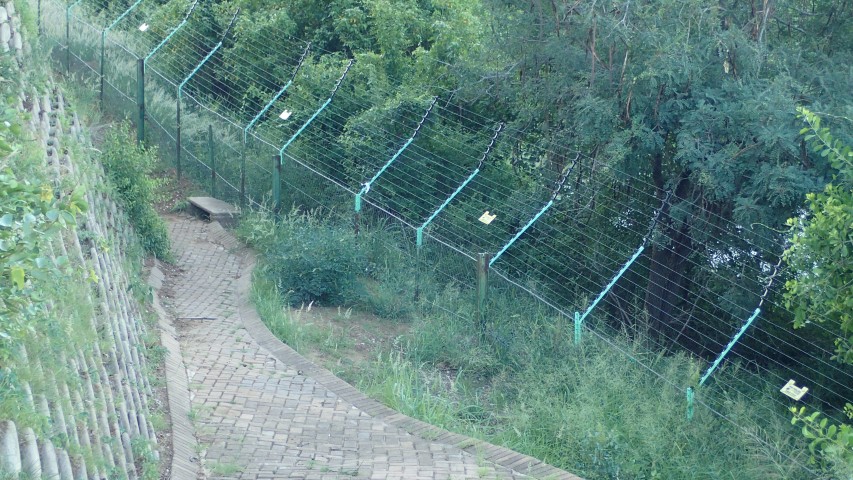
Wildlife tally for Sunday Feb 1
We’ve learnt some new words for describing groups of animals, and couldn’t wait to show off our improved vocabulary. There’s a good list here
Here’s what we saw yesterday.
dazzles of zebras
a couple of herds or parades of elephants
a bloat of hippopotamus
a tower of giraffes
impala
bushbuck
waterbuck
common reedbuck
a leopard tortoise
New to our list today – lots of banded mongoose including many babies and an implausibility of blue wildebeest.
My favourite group description is a ‘dazzle of zebras’, Greg’s is ‘an implausibility of wildebeest’. I’m really hoping to see a crash of rhinos while we’re here. Greg has added more photos to our last post, Out & about in Northern Kruger National Park, including a better pic of the crocs with the dead hippo, so you can play ‘Spot the Crocs’.
We have been befriended by a Southern red-billed hornbill. He has fallen in love with our car, or rather, his reflection of himself in the car’s windscreen. He’s quite tame, very persistent, quite vocal and I reckon if Greg spent enough time with him, he’d be able to teach him how to count to 10 by the time we leave.
Our friend Margaret commented that she hadn’t realised that Kruger National Park was so popular. Here’s a bit more info about it:
Around 19,500 square kms, covering 350km north-south and 60km east-west. The entire eastern boundary forms the border with Mozambique, and with Zimbabwe along the Limpopo River to the north. Along the western edge are several large privately owned game reserves, most (if not all) of which offer upmarket accommodation and wildlife experiences. We’re not upmarket enough with our tent, so we’ll stick to staying in some of the 26 (!!!) campgrounds in Kruger, which are able to provide accommodation for over 4000 people per night. We moved to the Satara Rest Camp this afternoon, which is in the Central part of Kruger. There are 3 guesthouses here, 180 self-contained units and a 600-site campground. And there are a couple of even larger campgrounds further south!
It hasn’t been busy anywhere we’ve stayed or driven, but during the summer and other school holidays, I’m sure it would be packed. It’s only a few hundred kms from Joburg and Pretoria and South Africans do love the outdoors. I think they are even keener barbecuers than Australians, if that’s possible. They call a barbecue a ‘braai’ – rhymes with ‘dry’ – and have all sorts of braai utensils and equipment that we’ve never seen before. We bought a beautiful cast-iron bread tin with lid (like this one here) that I’m looking forward to using when we go outback camping at home. A braai is standard in all campsites – it might be a half 44-gallon drum on its side, some kind of large dish to hold coals with a grill above it or even just a concrete area to light a fire on. There is always something so that people can cook outside … and they do!
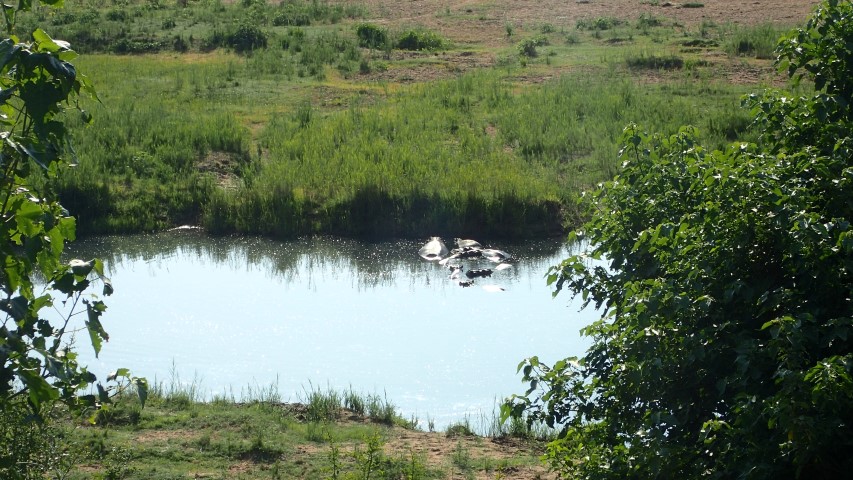
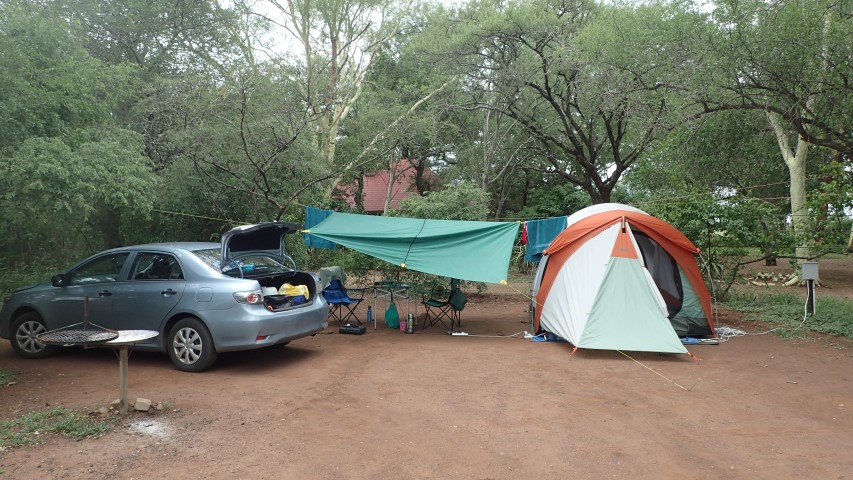
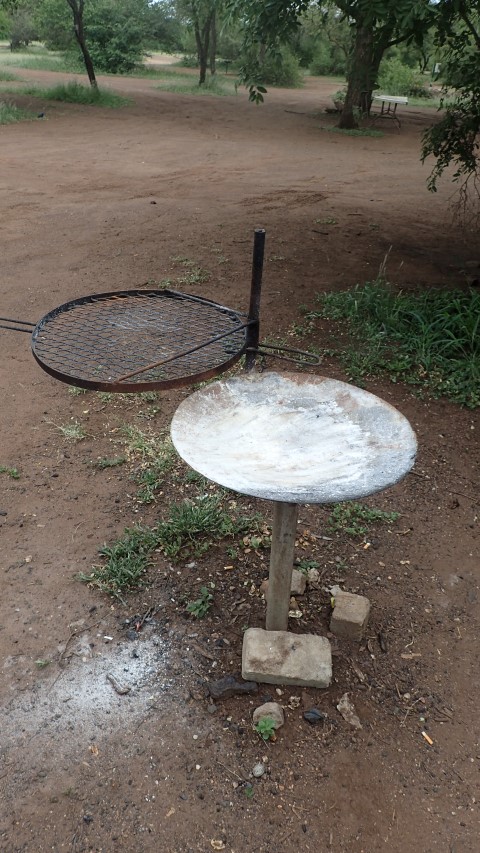
We’ve spent the last couple of nights at the Letaba Campground complex, and done a couple of drives around this northern part of Kruger – one during the day yesterday to Olifants Camp , and an early morning drive to Englehard Dam this morning. We’re not usually ‘morning people’, but the combination of birdsong and cars driving past to do their own early morning drives had us up and out the entrance gate of Letaba by 5.50am.
Yesterday’s drive during the heat of the day took us along the Letaba River. We saw a group of zebras just across the track we were driving on, a couple of groups of buffalo (we’re a bit scared of them as apparently they charge without warning and are the most aggressive of the ‘Big 5′ animals), and lots of antelopes. There are many different antelope species, I’ve managed to identify 3 or 4 so far, thanks to our guide book which lists 20 or so. Nyala, impala, bushbuck and this morning we saw some waterbuck.
But the most interesting thing we saw yesterday was at Oliphant River, which has among the highest densities of crocodile in Africa. It took us a few minutes to work out what we were seeing in the water … a dead hippo with about a dozen crocs around it. We counted 8 or 9 at the time, then looked at enlarged images of the photos Greg took when we got back to camp and realised there were more than that, including one lying on a nearby rock that we hadn’t even noticed at the time, we were so busy looking at the crocs around the hippo. Poor hippo had been there for a while, if the smell was anything to go by. No carrion birds – maybe they get their turn after the crocs have finished.
Just after we set out this morning, we saw some fresh piles of elephant dung on the road, but only saw one elephant a few kms further along. He just walked about 5 metres in front of the car, straight across the track towards the river. He was a man with a mission, took absolutely no notice of us, although if we had been any closer, it could have been awkward. The track led to a great view of Englehard Dam, and on the way back we saw hippos lolling in the water, waterbuck and birds.

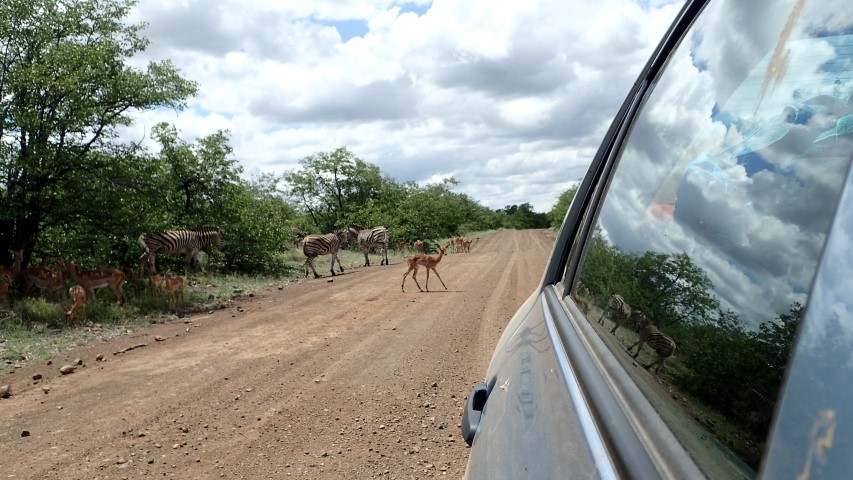
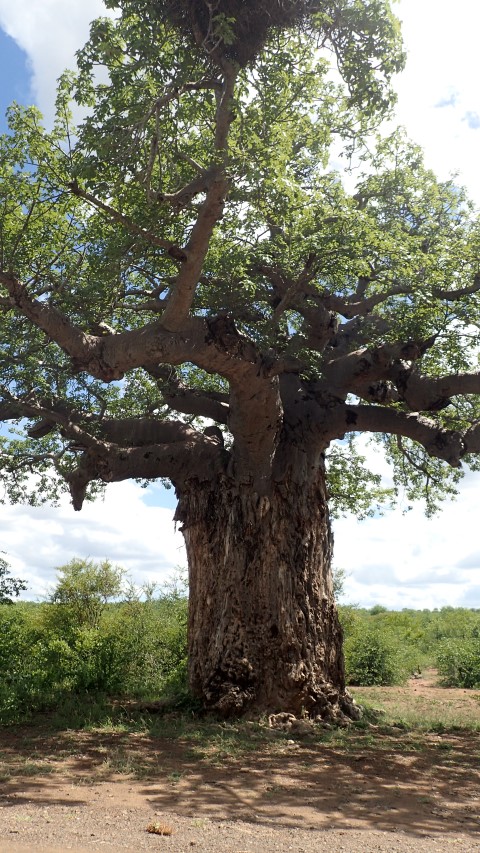
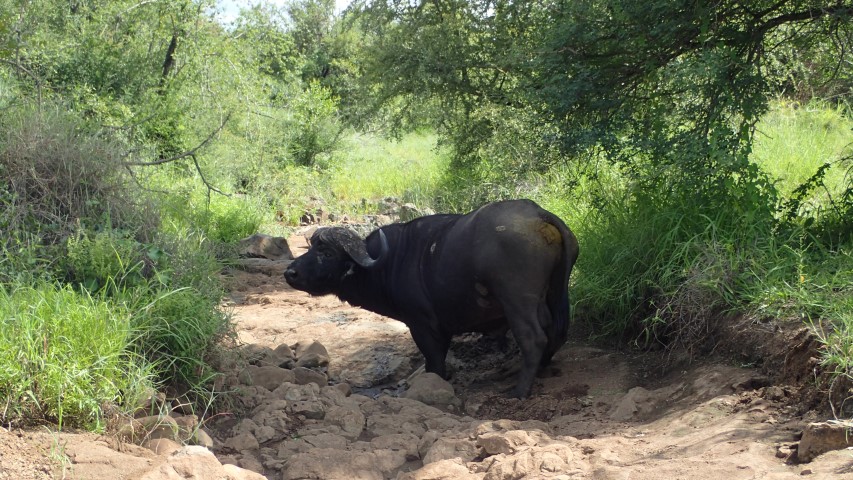
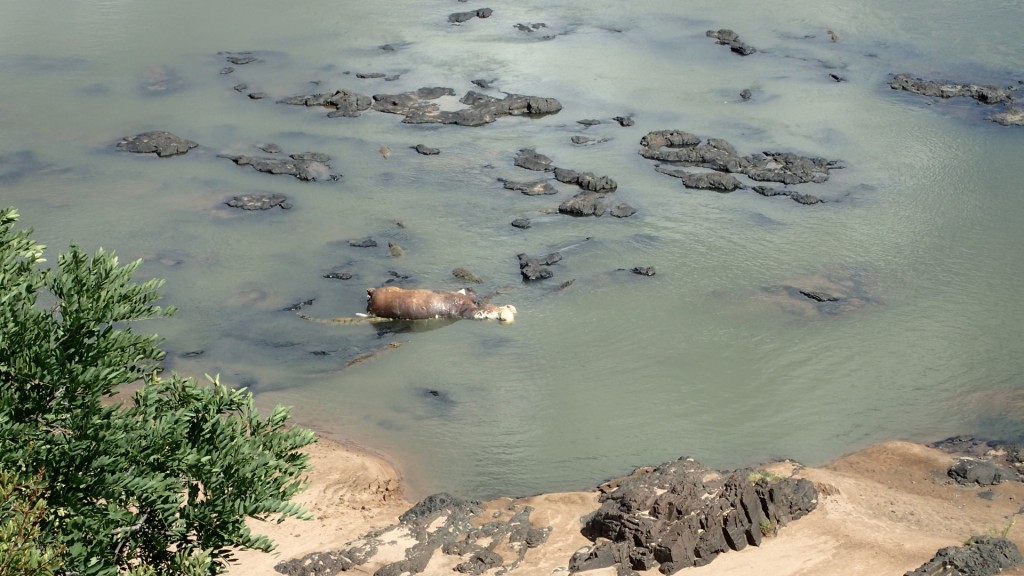


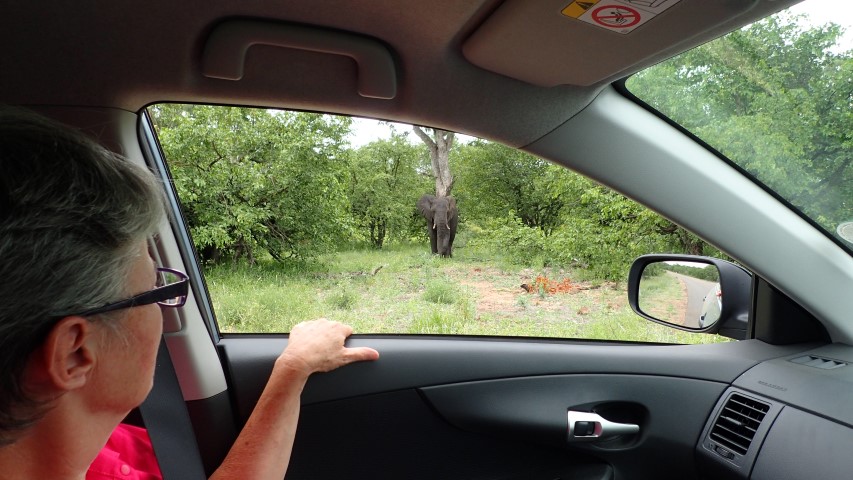
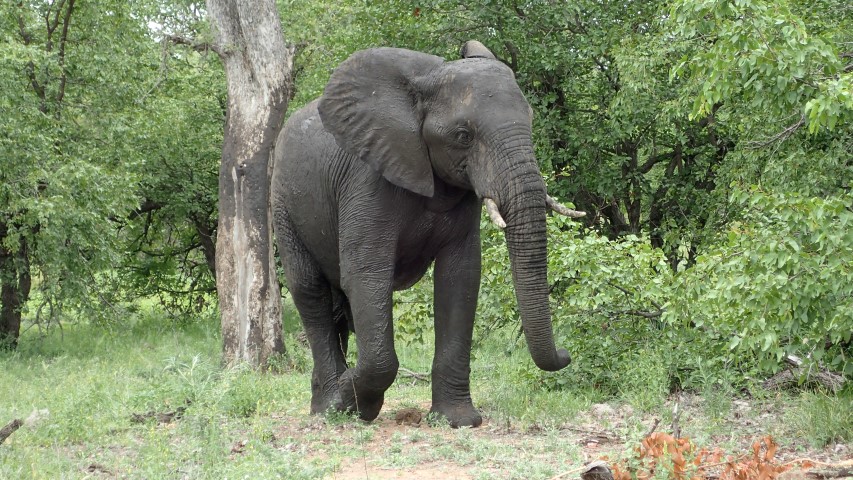
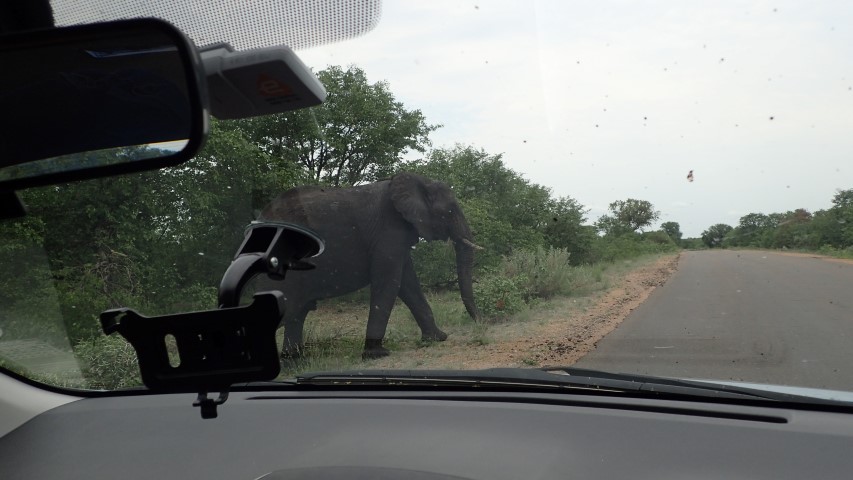
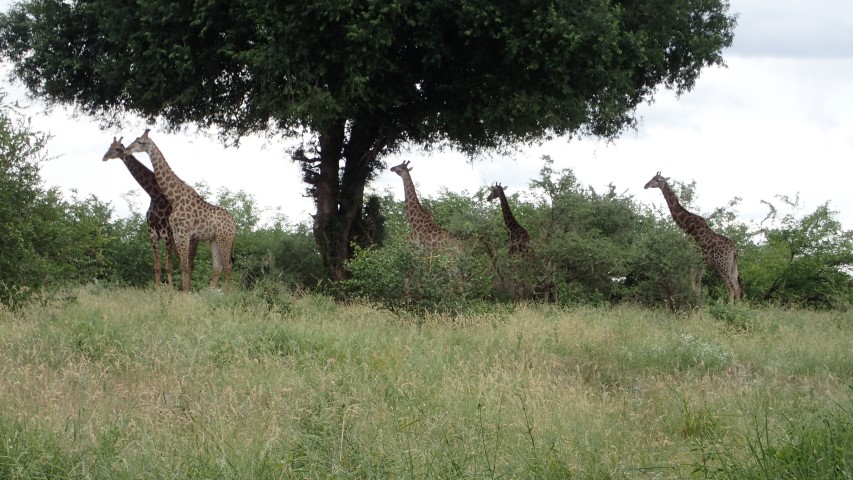
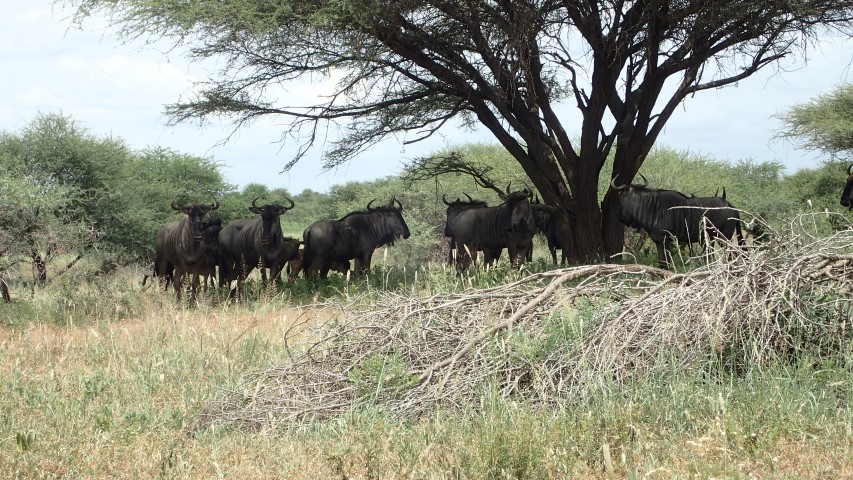
Our friends Kelly and Mark spent their honeymoon in Botswana in the mid-1990s. Several years later, in 2000, they travelled to Africa again and did a safari through Kenya. While they were there, they went to Mitubiri to visit John, his family and his village. They had been sponsoring John for 5 years through Childfund, and here’s Kelly’s blog post about that memorable day – A Not-So-Typical Day. Read it, but make sure you have a couple of tissues handy, it’s a very powerful read.
Kelly and Mark are from Melbourne, but have lived in Singapore for the last 4 years with their 2 young daughters. Kelly writes a blog, Our Big Expat Adventure, about living in Singapore, travelling, coming ‘home’ to Australia and life in general. It’s a great blog and I love reading about her everyday life and travels – you can read more here, and sign up to get notified of new posts, about halfway down on the right-hand side.
PS See you in March, Kel!
We’ve made it! If it hadn’t taken us so much longer than we intended, arriving at Kruger wouldn’t really be a big deal. As the country’s most popular and best-known tourist destination, people visit this park in droves – as day visitors, on bus tours, to stay overnight or longer, to see wildlife and to generally just chill out.
Still, our travels to get here have been interesting and thankfully we’ve had no major mishaps along the way. We somehow just seem to choose the ‘road less travelled’, don’t we?
We have been driving through orange groves, banana and mango plantations and past farms growing tomatoes, peppers, pumpkins and maize. Always maize, planted wherever there are a few spare metres of vacant land. On our way here, we drove past the area where the liqueur Amarula is made. It’s a creamy liqueur made from marula fruit, known as ‘elephant fruit’ because apparently elephants will walk for miles to eat them, they are so delicious. We saw people picking the fruit from trees by the side of the road. I guess if there is one commercial manufacturer of Amarula, there are lots of backyard operations and ‘home-brewers’ of it as well.
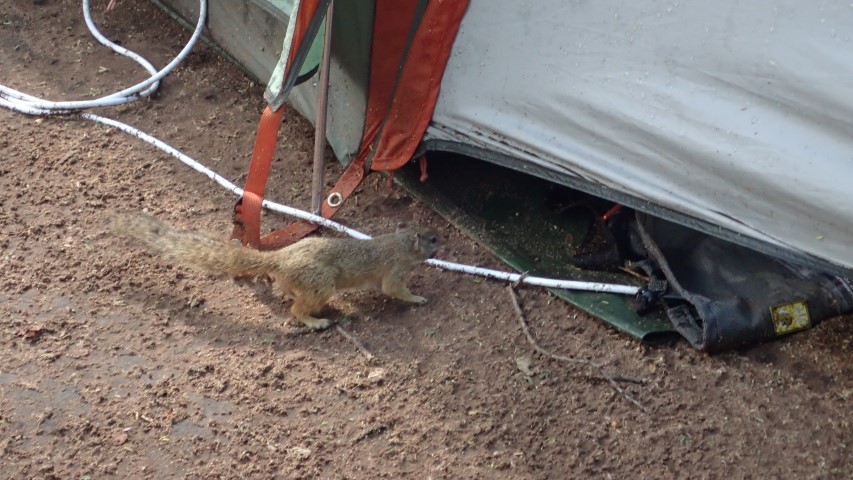
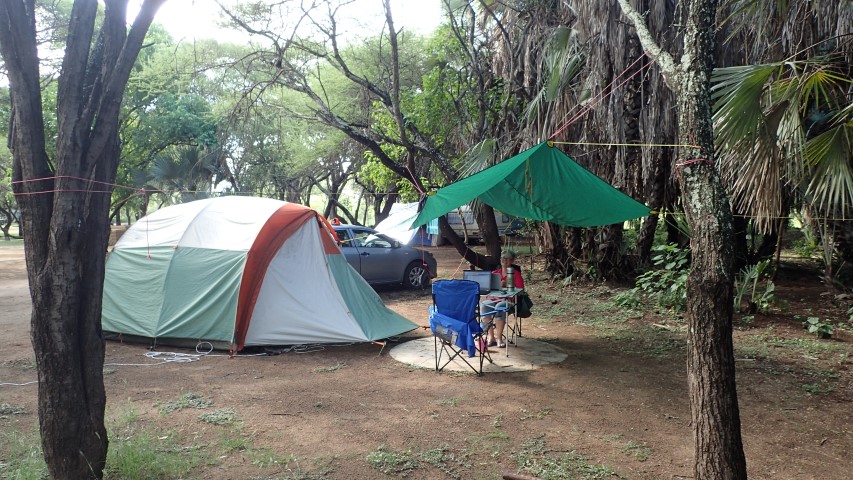
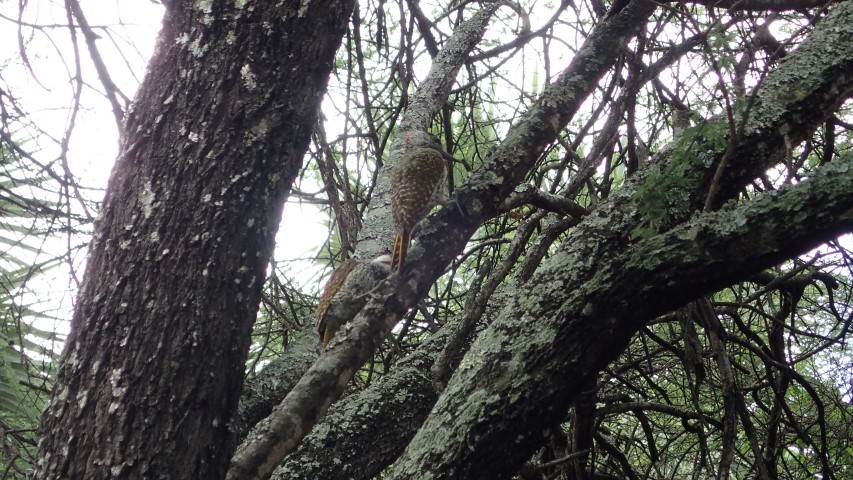
Seems like it’s taken us days to get to Kruger … probably because it HAS taken us days to get there. We’re at Tzaneen having fish & chips for lunch and taking shelter from the rain. A reminder that we’re still in the tropics.
Our day of obstacles improved yesterday afternoon – decent roads, a visit to a shopping centre in Louis Trichard for essential supplies (bananas for Greg) and to replace the crappy folding chairs we bought barely a week ago and which have already broken. While we were in the checkout queue I spotted 2 copies of Simon Bryant’s first cookbook, Vegies. Simon is my favourite Adelaide chef. He used to be the Executive Chef at the Adelaide International Hilton, but now has his own food business, doing things ranging from cooking his version of Asian street food around Adelaide & at Fork on the Road food truck events, to spending this week cooking in San Francisco for the G’day USA/Australia Week. He also has an excellent range of lentils and legumes, sourced from around South Australia which is marketed under the ‘dirt(y) inc’ brand. Seems like he and his ‘people’ hasn’t realised that his book was available in South Africa – I’m going to watch out for it and give a tally at the end of the trip.
We found another nature reserve to camp in last night – the Ben Lavin Nature Reserve, a few kms south of Louis Trichard. Not many people there, but thankfully not as deserted as the ‘Marie Celeste Campground’ as we are now calling the Nwanedi Game Reserve. Nice camping area and what they call on-site tents, but which are actually solid constructions with thatch/canvas roofs. The reserve was originally farmland, but was donated to the Wildlife Society by Ben Lavin’s widow in the 1970s. More info here, with some great photos. We didn’t see any wildlife while we were there, but then, we didn’t really go looking for it.
And so we get ever closer to Kruger. Should get there this afternoon, hopefully.
I’ve got the pox! No, not really, but one side of my face is all red and blotchy. An allergic reaction to either to insect repellent I put on a couple of nights ago, or the thorny tree I walked into the same night. So many African plants have thorns, which is their best way of surviving here, I guess.
We’re planning our return to Joburg next weekend and hope to spend a few days there in a loft apartment. We’re just waiting to get confirmation from the owner. There are a few places available, at reasonable prices.
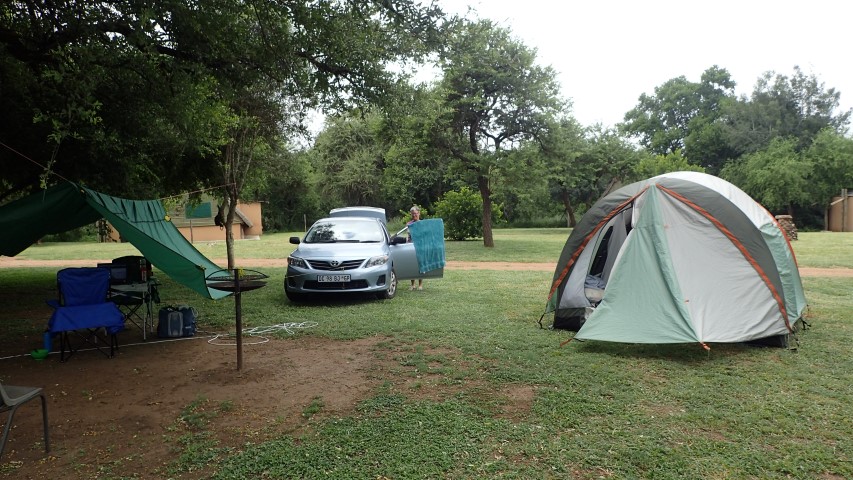
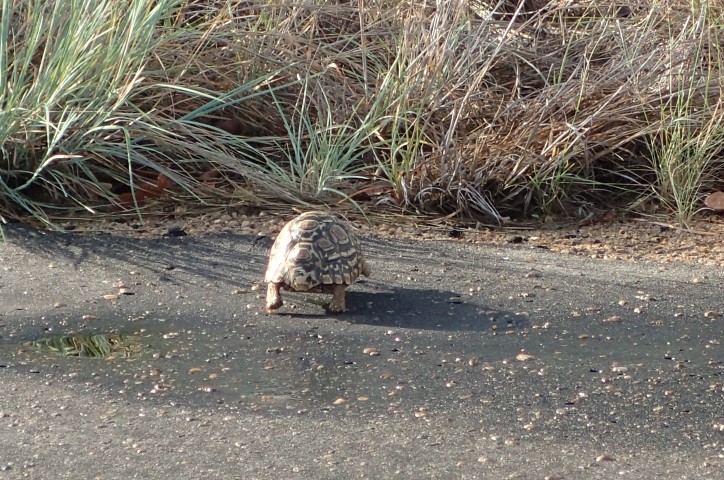

So, we’re heading to Kruger National Park, but keep hitting obstacles. We called in at the Mapungubwe National Park for a few hours yesterday and saw what we were able to see in a 2WD car: a tree-top walk which took us close to the Limpopo River, and then a short walk on a paved path to see the confluence of the Shashe and Limpopo Rivers, where the borders of South Africa, Botswana and Zimbabwe meet. We didn’t see many animals as we were there in the heat of the day and the temp was around 37C. Getting to the Treetop walk was interesting – we had to drive over an electrified cattle grid. The park is trying hard to keep elephants out, but part of the tree-top walk near the river was demolished … by elephants. There was a dead monkey on the walk …. very sad to see, although that’s really just part of the great Circle of Life, as Elton John would say or, more likely, sing. (Note: Char, I’d try to find the Youtube clip, but our internet access is so bad, I’d probably just lose access to the interwebz forever!)
We were aiming for the northern-most gate of Kruger, but realised we would have to stay somewhere along the way. Not heaps of options – a very expensive campground that looked totally deserted, no surprises given the prices they were charging. We found another wildlife reserve, the Nwanedi Game Reserve, down the road and decided to stay there last night. 13kms down a dirt road to the front gate, then another 7 kms once we were inside the reserve. We asked the gatekeeper if the road was suitable for our car and he said it was, but we discovered it was a bit tricky in places, and almost impassable in one spot where a couple of concrete road slabs have lifted up. As we drove out this morning, we noticed the gatekeeper’s motorbike and wondered how long it had been since he had actually driven down that road himself.
I think the best way of describing the campground is, in Greg’s words … the Marie Celeste of camping. And the song ‘Hotel California’ also comes to mind. It was … eerie. We were the only guests there, although we saw plenty of staff around the place. They have a full set-up – conference facilities, self-contained cabins, huge campground, restaurant … but no guests apart from us. The receptionist asked if we would be dining in the restaurant. I’m very glad we declined, I can’t even imagine how old the food there would have been! The ‘protector’ (gatekeeper/security guard) took us across to the campground and turned on the power for us, but between him and Greg they couldn’t get it to work. Not a big deal, we only use it to run our fridge and can hook it up to the car battery.
The ablutions block was amazing. 12 toilets, half of which were closed with faded ‘Out of Order’ signs on them. 5 bathtubs, 3 showers. The showers were all tucked away in dark corners and I chose the one with the most light … but it didn’t have a shower rose. The force of the water was very invigorating!
The tax invoice is a classic. The complex is part of the Limpopo Eco Tourism chain, but the invoice has space for various categories including ‘Sale of Live Animals’ and ‘Sale of Carcasses’. Er, not so ‘eco’ after all? We heard baboons this morning but didn’t see any wildlife in the reserve.
And so we get to today’s adventures so far. It’s only lunchtime, so there may be more yet. We headed east to the Pafuri Gate at the far north of Kruger, but 50kms down the road, and just 18kms from Pafuri, at a little village called Masisi, the road was completely closed because a bridge had been washed away and not been replaced. We had had that experience before, just past Mapungubwe National Park , but the road had been diverted along the river bed. Impossible when it rained, but we were able to get past without any trouble.
Not this time, though. There was a dirt road south but it wasn’t really where we wanted to go … or we had the option of turning around and going back the way we’d come. Which we did. A bit more dirt track driving, including one very interesting bit along the edge of some huge puddles. We were just about to turn around and retrace our steps again when Greg noticed a car coming from the opposite direction, so we just sat and watched how they tackled the puddles and copied them in reverse.
And then we got to a road block in a small town where a traffic cop stopped us and asked us where we were going. Greg told him that we’re heading for the Punda Maria Gate, the second northern-most gate into Kruger. The cop told us that we couldn’t get there as there is a strike in a town somewhere along the way and it’s not safe for us to drive that way. We’re currently sitting in a Wimpy cafe in Thohoyandou … exploring our options. Trying to work out what to do. It’s looking like the best option is to head down the highway and go via the main entrance, but it’s a huge detour and we had planned to do stuff in the northern part of Kruger.
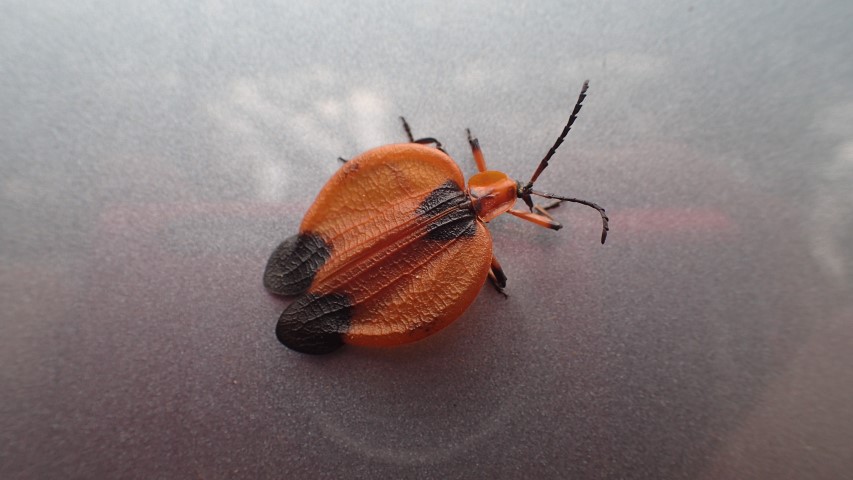
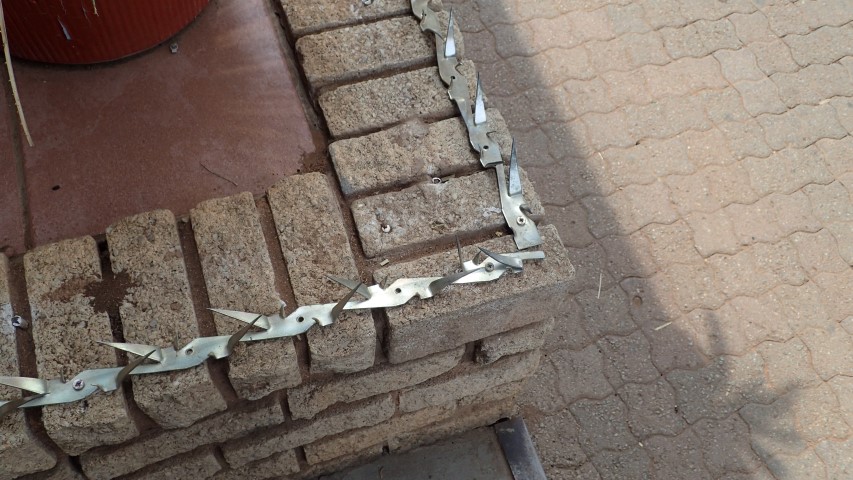

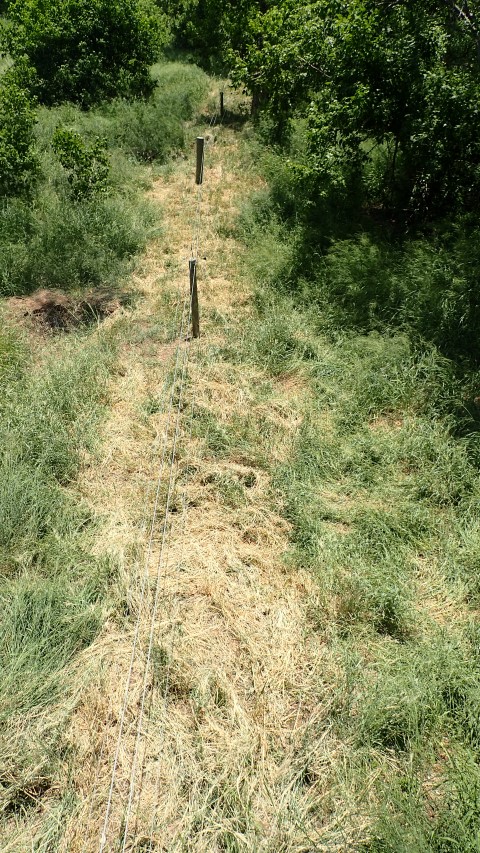
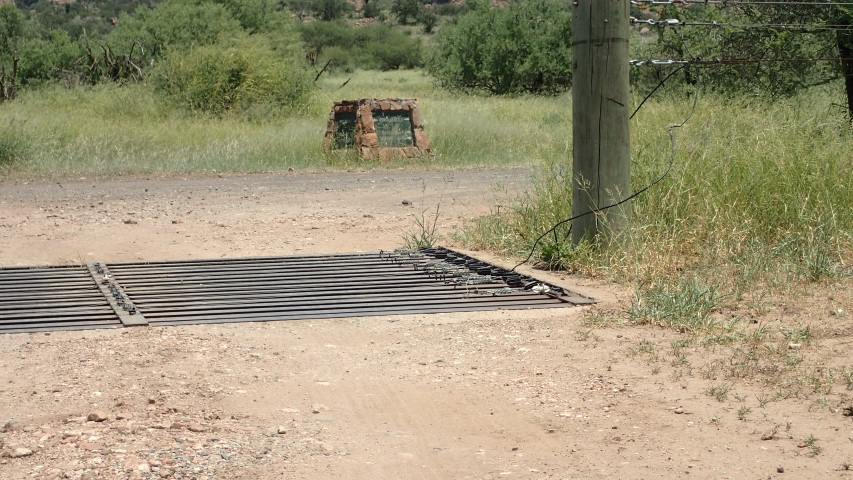
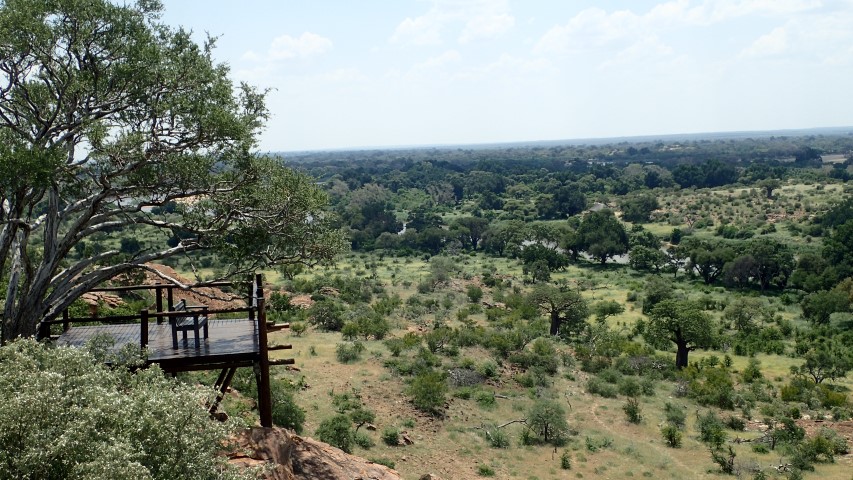
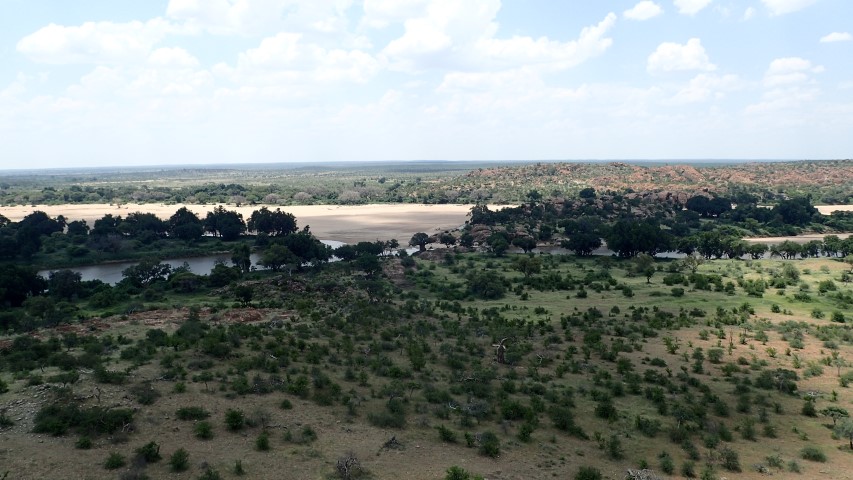
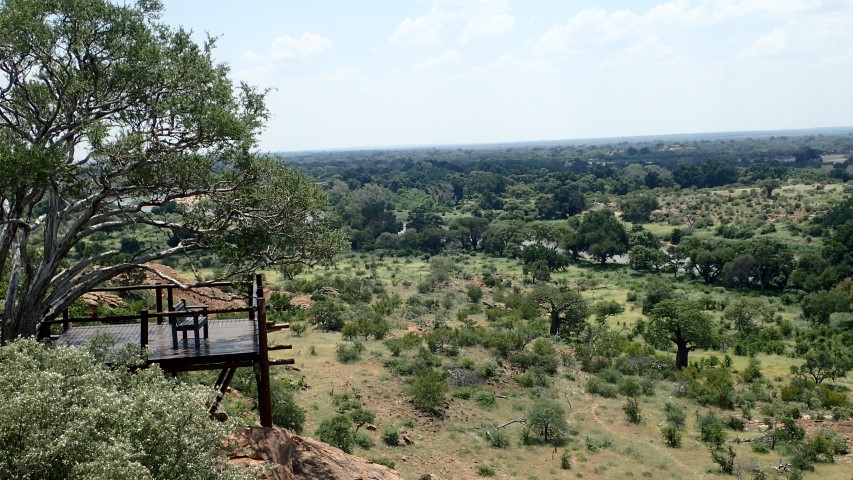
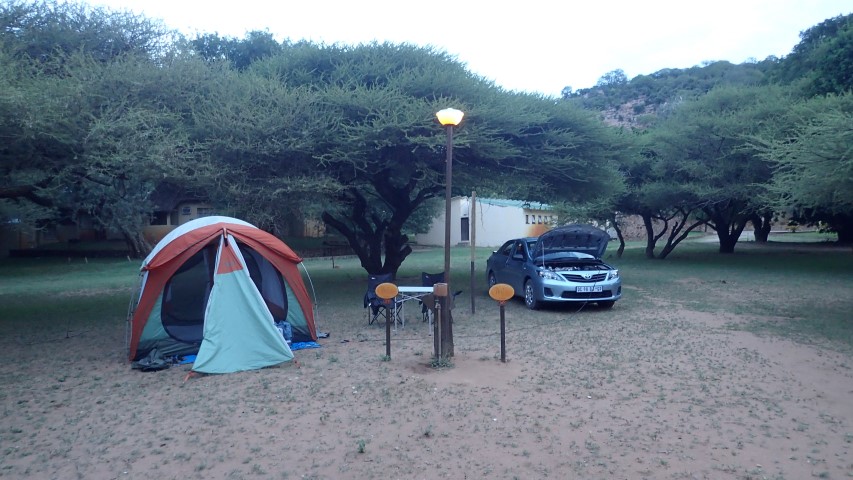
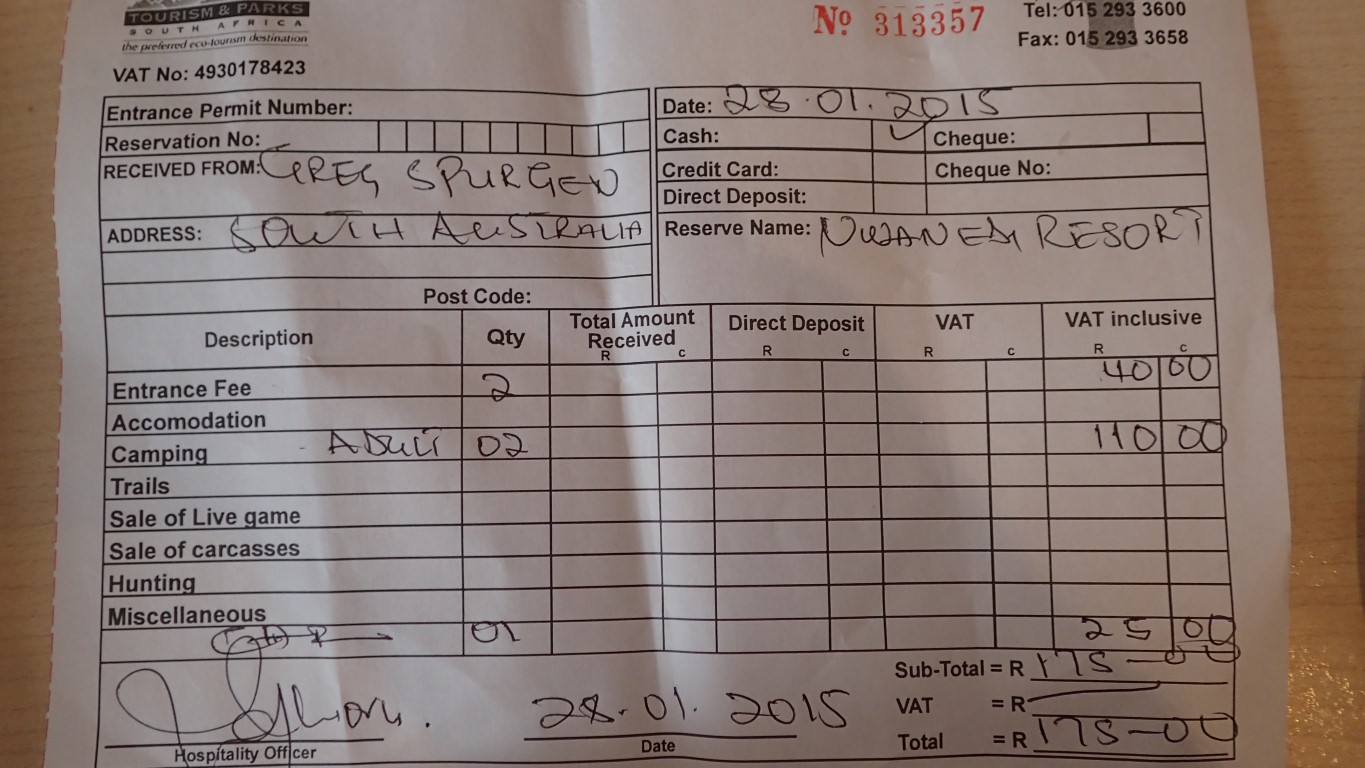
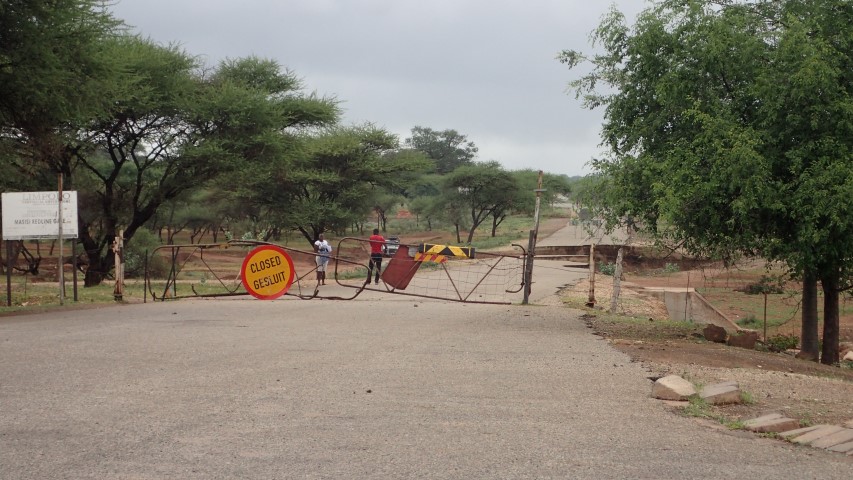
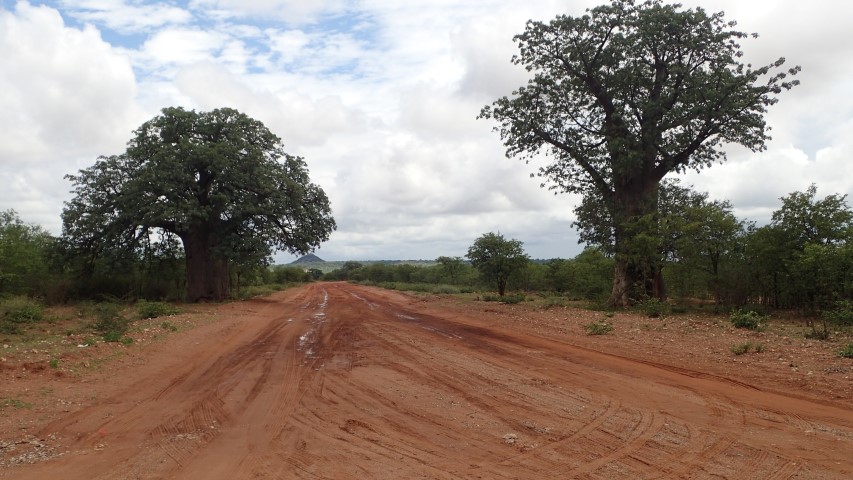
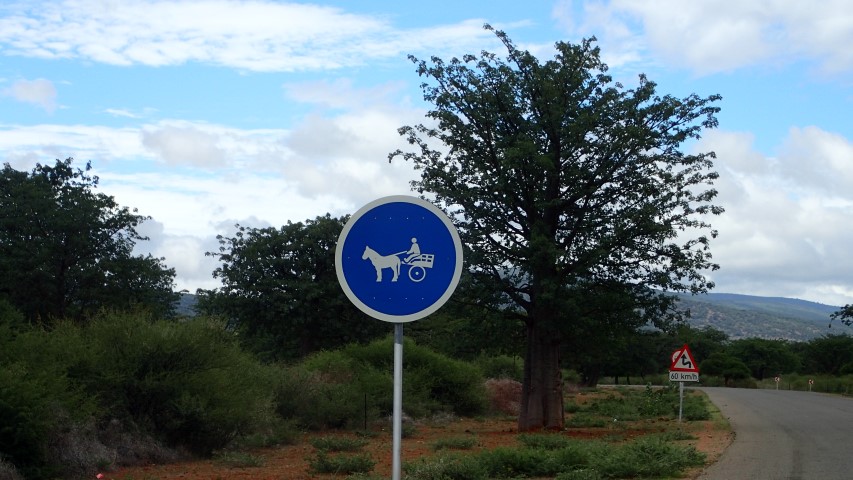
We left the Beautiful Country of Botswana yesterday and drove back into South Africa. Border crossings here are a bit confusing – no road signs, very limited signage on the Customs and Immigration buildings and usually long queues of people at the only open desk, with at least 6 other officials sitting around watching proceedings, but not actually doing anything much. The other people queuing have usually been much more helpful in telling us how to do things than the officials behind the desks.
Anyway, after a wrong turn at the Botswana border … 3 roads, 2 dead ends and one that actually crossed into South Africa, we filled in some forms and got on our way. We were heading to the Mapungubwe National Park, on the Limpopo River right at the northern border of Sth Africa with Zimabwe, but the road was absolutely dreadful, the worst I’ve ever been on. Potholes everywhere, edges of the road crumbling away … so bad that Greg got car sick and he was driving! And we drove through a thunderstorm, which slowed us down a bit more. There was no way we’d get to the National Park before dark, so we tried to get a campsite at a private game reserve which advertised camping on their billboard, but after we’d driven through the enormous security gate and found the host … no camping. It wasn’t a completely wasted trip though, we were greeted just inside the gate by a giraffe and 6 zebras!
We headed down the road to Alldays and found Munala Game Lodge, a campground complex with restaurant, bar, swimming pool, cabins and tent sites. Yay! Pieter, the host, drove us around and showed us possible places to pitch our tent. He apologised that the actual caravan park was full …. of miners who work at the local diamond mine, which happens to be the largest in the country. Venetia Diamond Mine is owned by De Beers and you can read about it here. There is no acccommodation on-site, so I guess the locals are doing well out of providing services for the miners. Before we got here, I noticed a group of 3 long tin sheds that looked like workers’ quarters, but now realise it was probably more miners’ accommodation.
Pieter is an aquaculturist, and he assured us that mosquitoes and other insects wouldn’t be a problem here. He visited us this morning and asked if we’d heard the lion during the night – er, no, thank goodness. And he’d just killed a python over on the lawn.
Now we’re heading east to Kruger National Park, with a stop-over at Mapungubwe National Park on the way, to see what’s there.
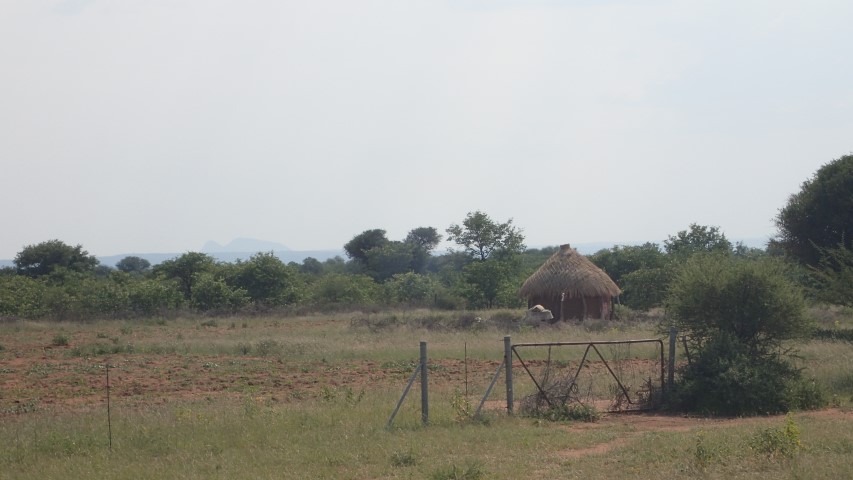
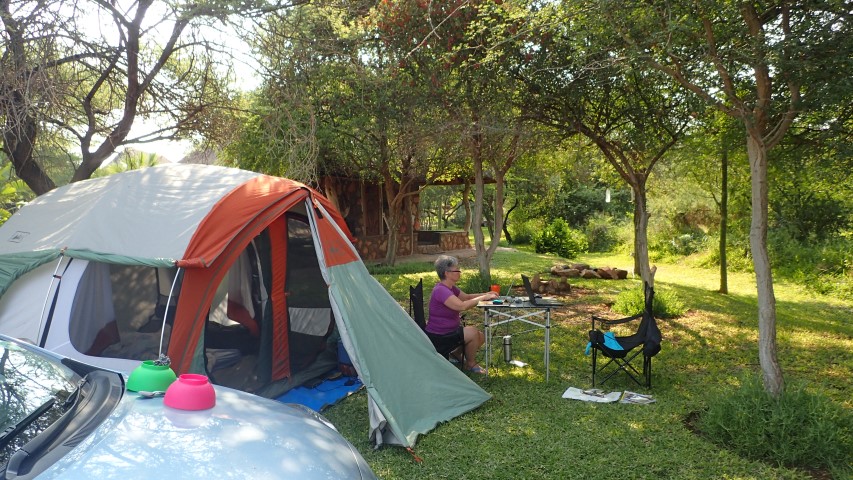
We headed south from Kasane to the Woodlands Rest Camp yesterday, just a few kms north of Francistown.
As we drove out of Kazungula, where the borders of Zim and Zam meet Botswana, we saw giraffe grazing by the side of the road! We stopped and got out of the car, but they were a bit wary of us. We got back in the car and turned around to get a closer look and they weren’t at all bothered – more used to vehicles than people, I think. There were 3 of them.
I decided that giraffes were my favourite African animal because of their purple tongue, but then a few hundred kms further south, we saw a group of 5 zebras! Again, we hopped out of the car and walked a short distance off the road to get a better look and spent quite a while watching them watching us. I think we got to see as much wildlife on the A33 as we would have if we’d done a game safari tour thing in Chobe National Park.
Our night at the Woodlands Rest Camp was very nice – a little oasis in the desert, with beautiful grassy campsites, a swimming pool and good amenities block. There were several groups of campers, and they all seemed to be staying there for a while, unlike us who were just using it overnight. We had a very interesting chat with the owner this morning. Originally from Zim, her 4 siblings now all live in Australia, but her daughter still lives with her young family in Zim, in Harare and it’s …. difficult.
We’re heading back to South Africa today. I’ll be sorry to leave Botswana, it’s been an absolute pleasure travelling here.
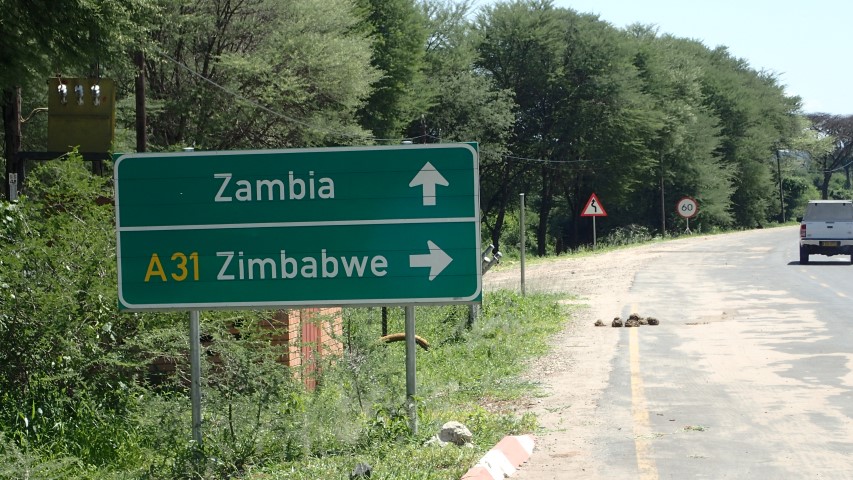
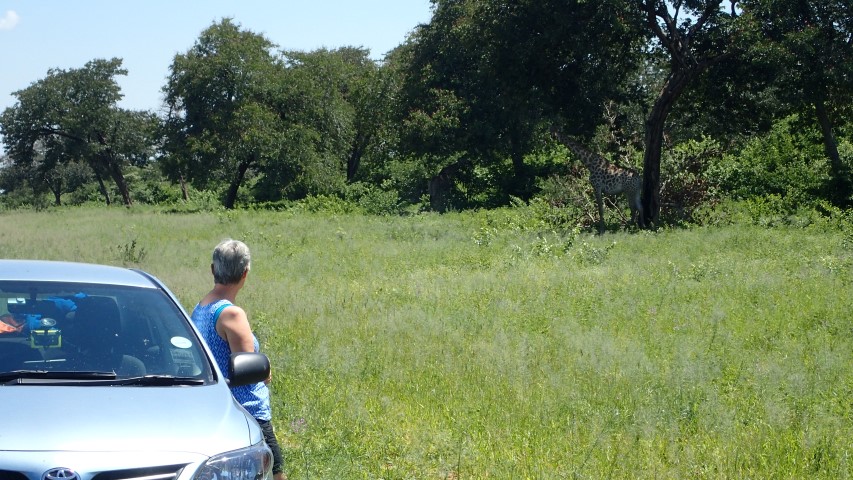
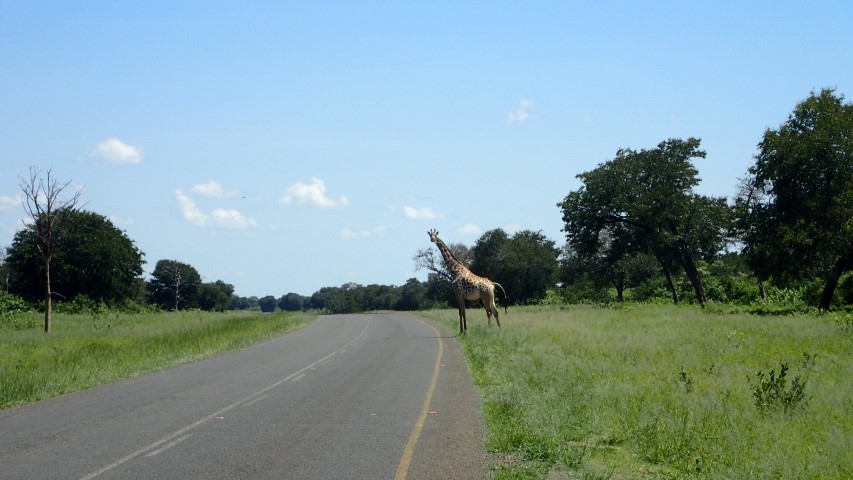

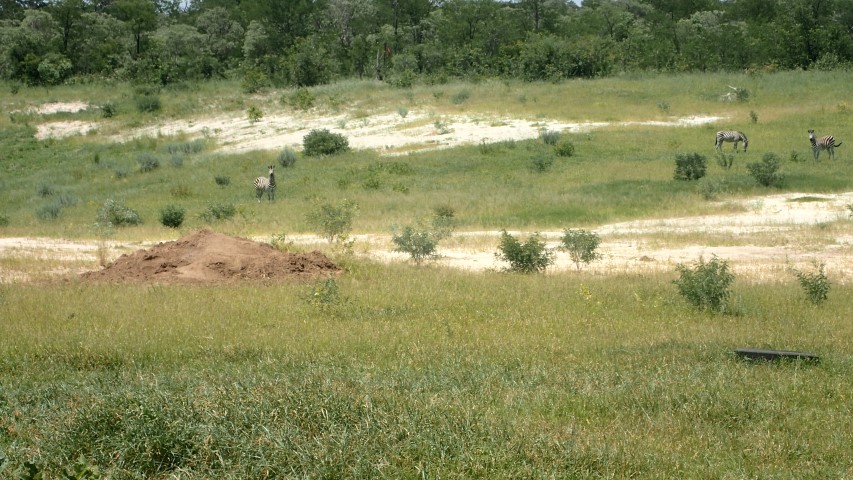
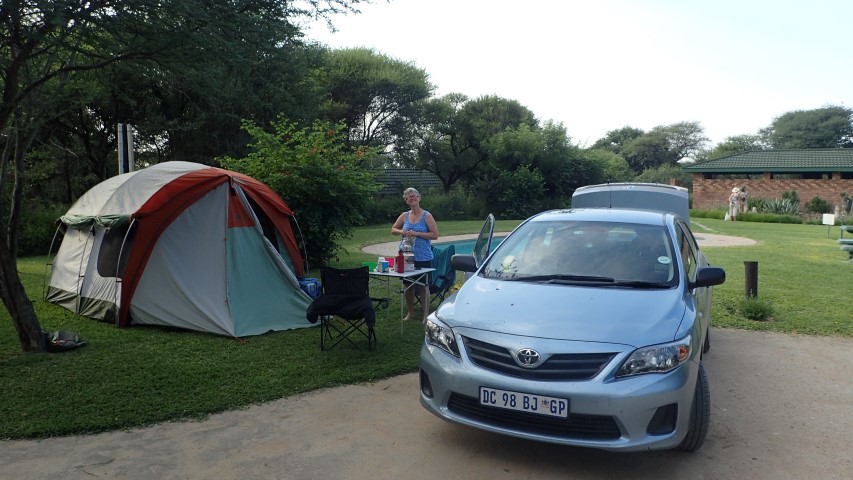
We’ve spent the last few days staying in the campground at the Chobe Safari Lodge. We’re in the very far north of Botswana, where it meets the borders of Namibia,Zambia and Zimbabwe. From our campsite, we can look across the Chobe River and see Namibia. Pinned to a post nearby is a ‘Beware of crocs’ sign. Just a hundred or so metres along a path is a ‘Beware of hippos’sign. Yep, we’re in Africa. We’ve been here a week so far, and have seen and done so much already.
Yesterday, Sunday, we planned to drive into the Chobe National Park just for a look, then do a boat cruise on the Chobe River in the afternoon as our Victoria Falls travelling companions had done it and strongly recommended it. The morning visit to Chobe failed because we weren’t allowed to drive in with just a 2-wheel drive car. Which is fair enough – the park rangers were probably sick of rescuing silly tourists. So we visited the local shops, bought more bananas because cheeky vervet monkey had stolen (stolen!) Greg’s last ‘nana out of the boot of the car. We also bought some fine Botswana steaks to have for dinner after our boat cruise. They cost $1 each and they were delicious!
The cruise was excellent. We saw hundreds of elephants, dozens of hippos, a couple of groups of antelopes, a few crocs and a couple of buffalo. Plus lots of birds. I read somewhere that the Chobe National Park area has the highest concentration of elephants in Africa. We watched them feeding, playing in the water and just generally doing the things elephants do. One group had a tiny (by elephant standards) baby, probably just a few days old, but he kept up with his mother, siblings, aunts and grandmother. The males get kicked out of the group by the matriarch when they are teenagers, to stop inbreeding.
We saw groups of hippos eating, always with at least one companion bird by their side, plus groups swimming and loll
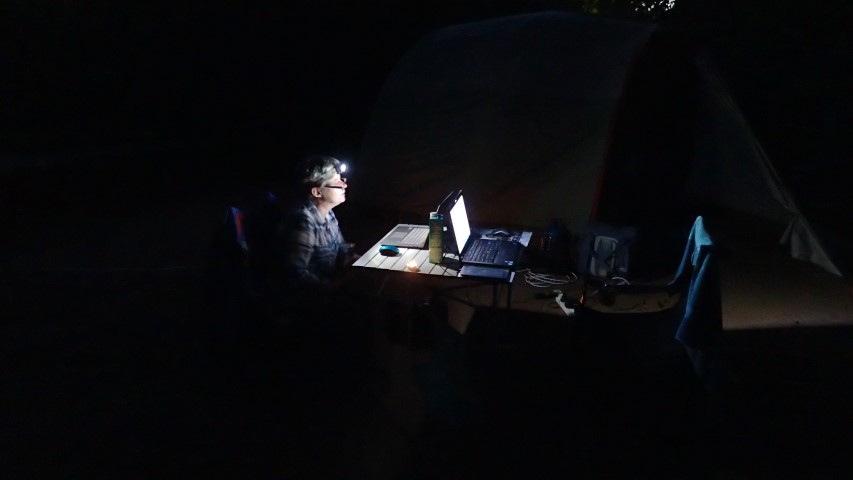
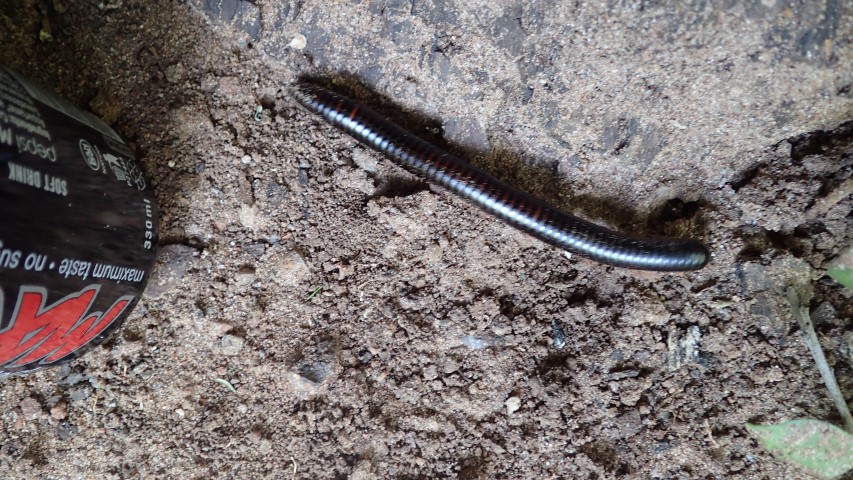
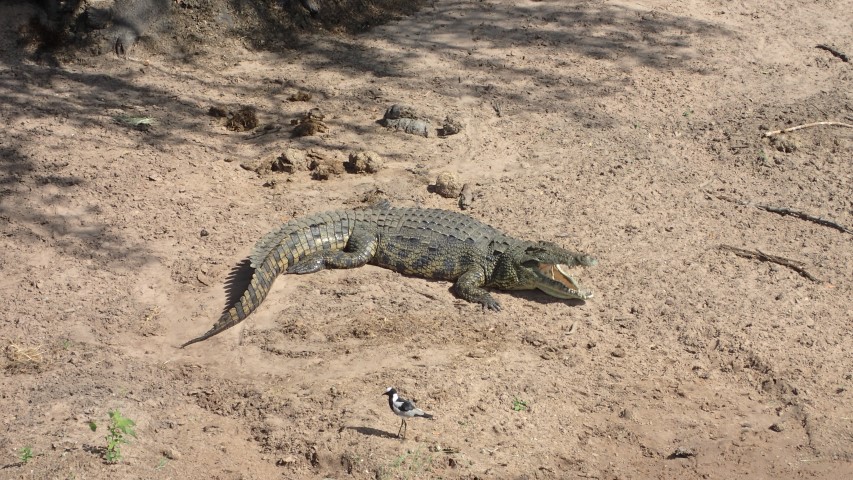
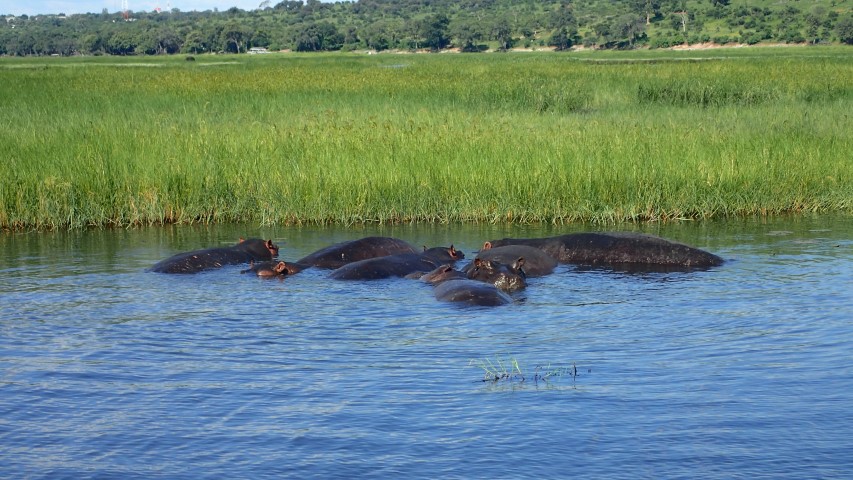
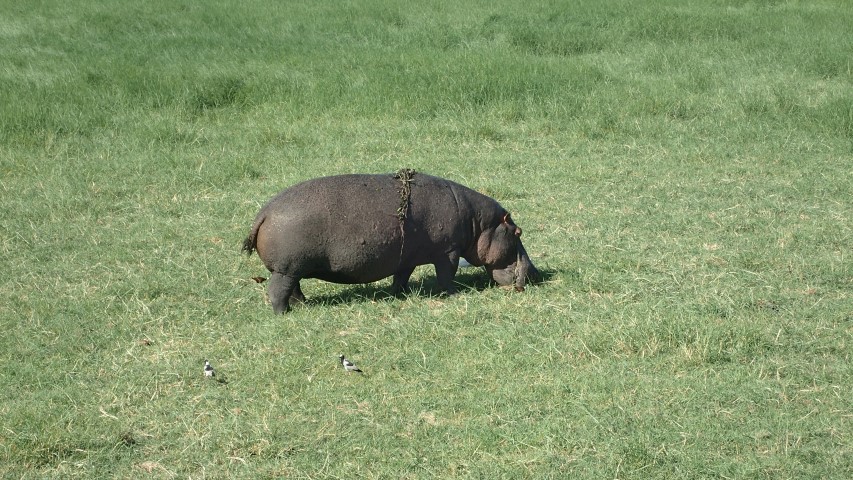
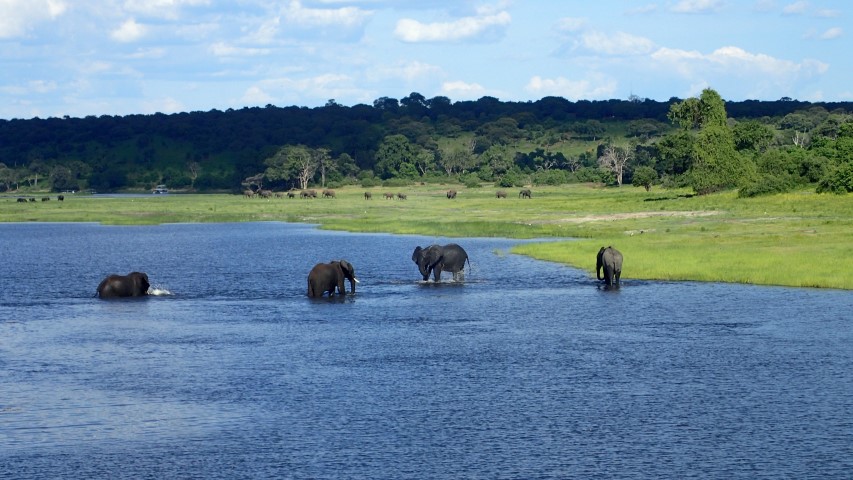
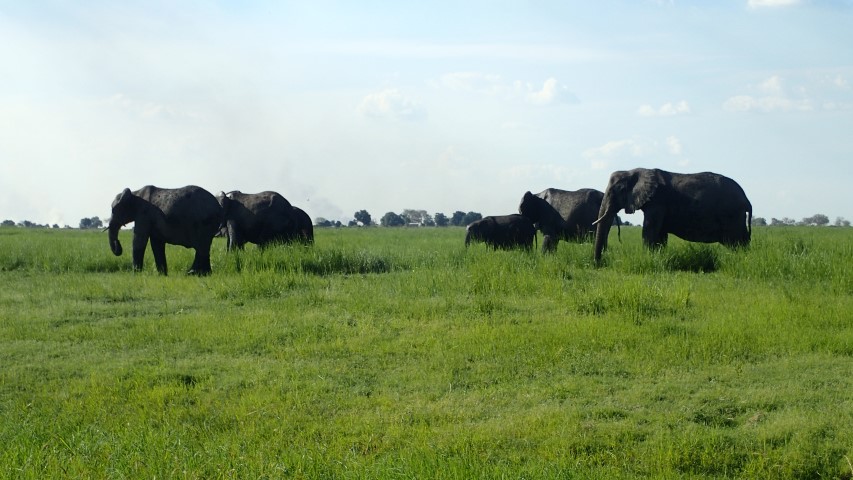
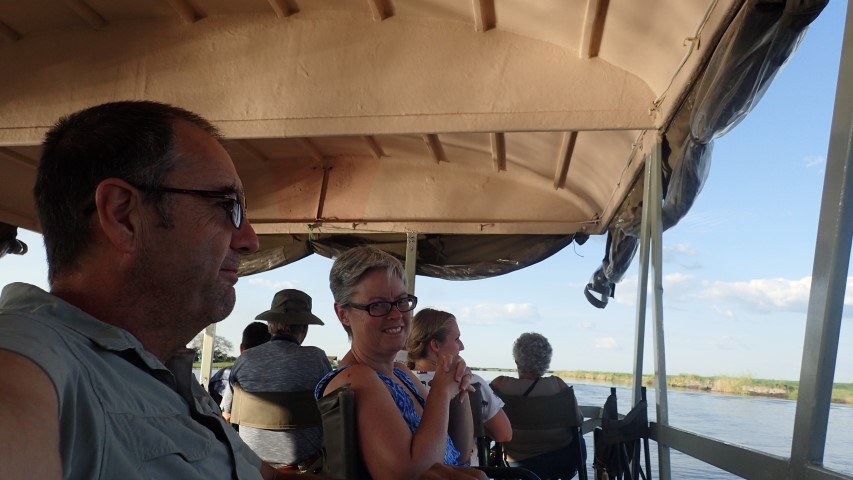
I guess I could get all patriotic and poetic about how great Australia is, but we all know that. One thing that I do take for granted and only get reminded of it occasionally, is how efficient our country is at doing things … well, most things.
Happy Australia Day, wherever you are in the world, and whether you celebrate it or not. If you have even just visited our beautiful country, you are one of us! Here are a couple of Australian things that have amused me recently.
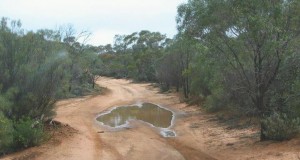
I’ve been thinking, and telling people, that we were going to Zambia to see Victoria Falls. WRONG! The best way to see Vic Falls is from the Zimbabwean side and we’ve just spent the day getting to and from the falls and navigating our way through Zimbabwean border bureaucracy. Very interesting.
We’re staying in the campground at the Chobe Safari Lodge, which is on the banks of the Chobe River at Kasane. It’s at the northern tip of Botswana, where it meets the borders of Namibia, Zambia and Zimbabwe. The Lodge offers a range of tourist activities, including river cruises, game drives, a visit to a Namibian village and a couple of different trips to Victoria Falls. We chose the unguided bus transfer which took us to the border, where we were then picked up by another bus and taken to the falls.
When we booked yesterday, we were told that a visa to get into Zimbabwe would cost us USD $30 each, and that we could pay in Botswana pula, South African rand, USD, euros and probably a couple of other currencies in cash or by credit card. When we actually got to the immigration desk, we were told that the law had changed today and the visa fee is now USD$50, no other currency accepted, no credit cards. Um, today? Really? On a random Saturday in January? Pffttt, I strongly doubt it, but we were completely at the mercy of the immigration officials so we had to do whatever they told us if we wanted to see the Falls. We had enough USD to pay for our visas, but the other 5 people travelling with us only had $50 between them. We lent them some money and a South African guy exchanged some dollars for euros, and we finally got through and on our way.
The whole country works in USD. Prices at service stations, supermarkets and cafes are in USD and it’s very expensive. Not surprising for the top tourist destination in the country, but it must be difficult for the locals. Fuel is USD $1.55/litre, a tin of baked beans was $1, a pack of 6 bread rolls was $1 and a fancy bread roll in a cafe was $10.
As I’m writing this, we have a pack of monkeys playing around our tent and scampering up the nearby trees. One picked up a banana skin that Greg had left beside the tent and took it up a tree, then dropped it on Greg’ head. Another grabbed the bread roll packet, but dropped the last roll in the pack and one of his mates got it instead. Entertaining, but a bit too close for my liking. I hope they don’t have rabies.
Anyway, The Falls were amazing – spectacular, vast, huge volume of water pouring over, quite misty in places, and like it was constantly raining in parts. We took our raincoats and were glad to have them. We spent about an hour at the Falls, when walked into town to find some lunch and have a look around.
Going back through Immigration was far less eventful, we swapped buses again and got back to our tent before 5pm. We’re spending another couple of nights here because we want to do an afternoon river cruise tomorrow, on the recommendation of our fellow-travellers today. We saw some elephants this afternoon, and a few other animals. When we were driving to Vic Falls, we saw 2 park rangers with guns – the bus driver told us they were patrolling and looking for poachers, and that they were having success in reducing the number of animals being poached.
Edited to add that I forgot to mention that all the ATMs in Vic Falls dispense USD only. The German guy I lent the USD $100 to repaid me with a $100 note – the first one I’ve ever seen!
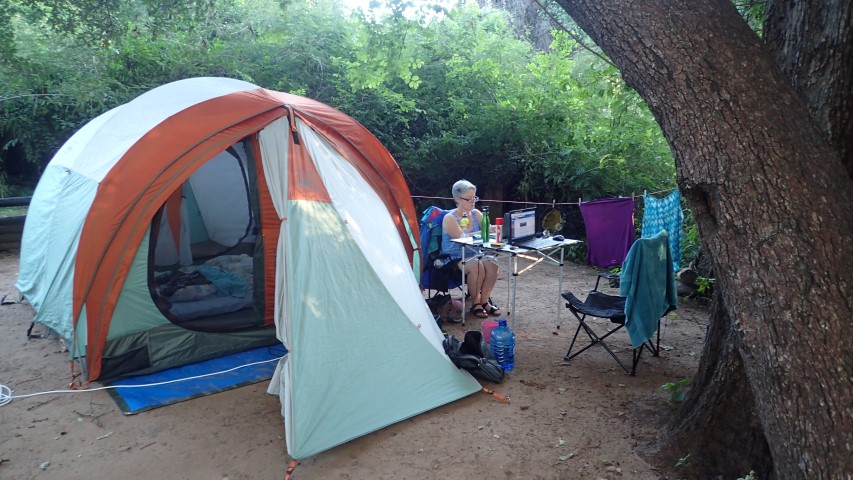

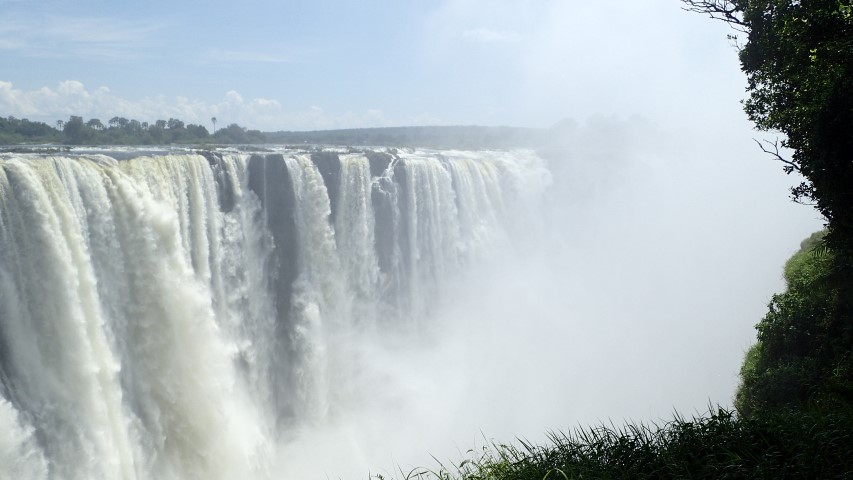
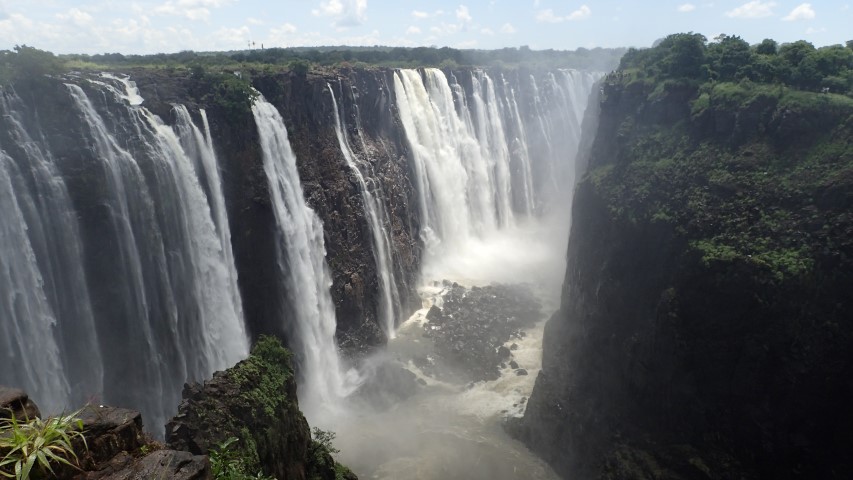
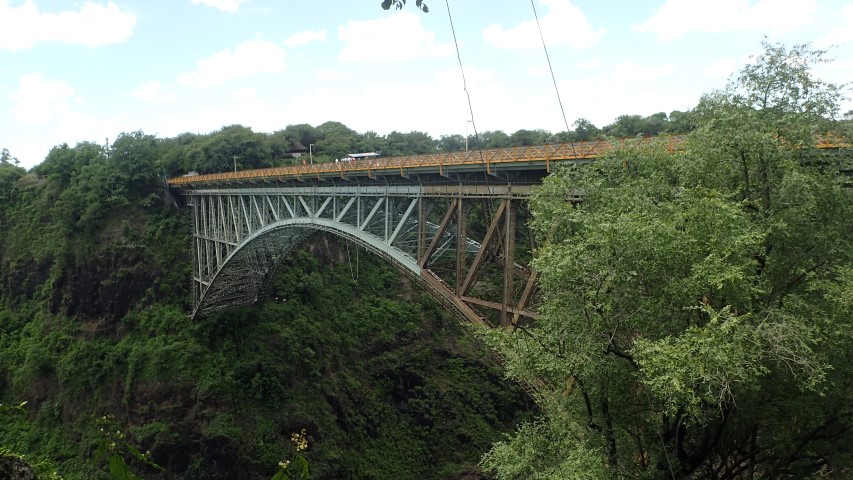
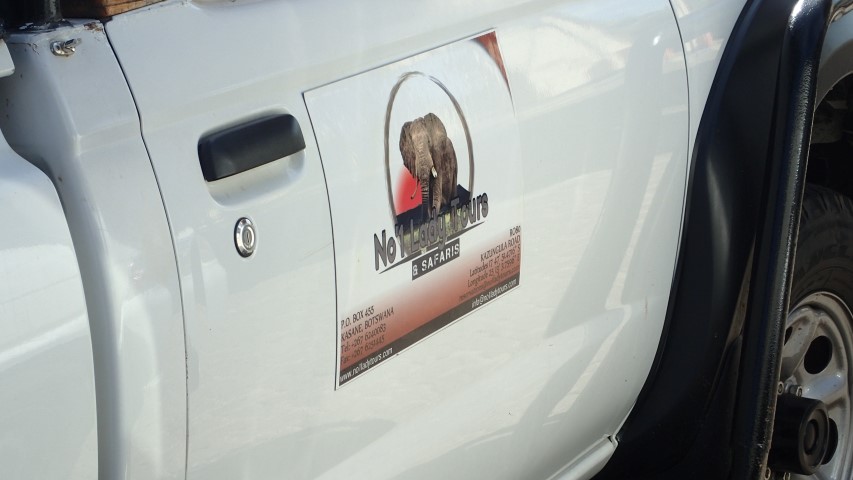
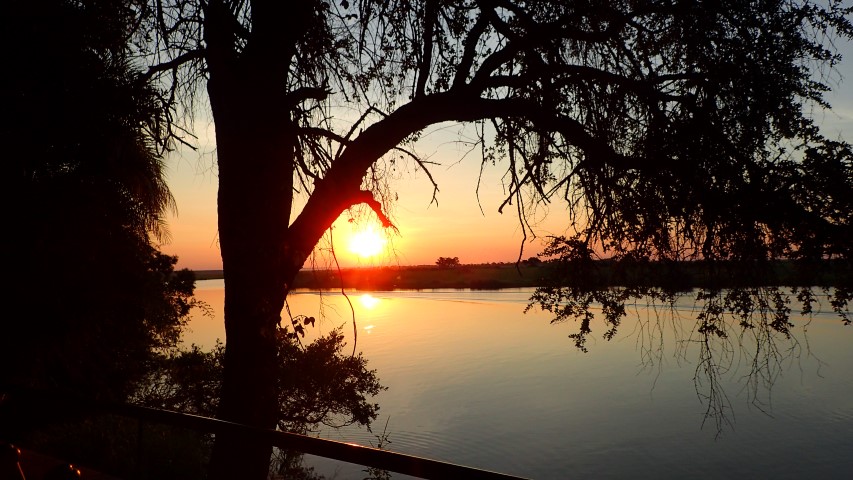
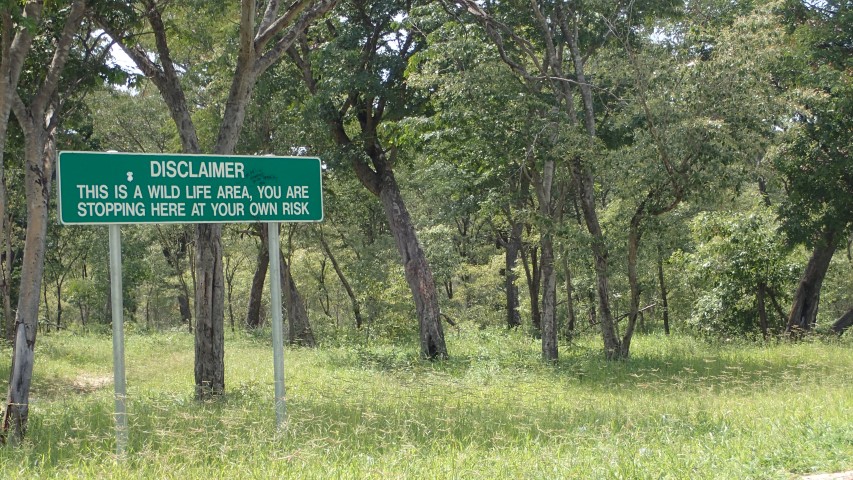
I know, I could just write it in a notebook, but sharing is more fun …
The first day we were in Jo’burg, we noticed windscreen washers at traffic lights. Since then, I’ve been making a list of other entrepreneurial traffic light sellers and the range of wares and services they offer: Tag Heuer and Rolex branded wall clocks; bubble guns (actually, they looked really fun!); sunglasses; gym membership; car cigarette lighter plugs, adaptors and cables; raspberry ice blocks in plastic bags and even a guy busking with a guitar. That didn’t seem to work so well because all the cars had their windows up and their aircon on. I’m not quite sure how a complicated transaction like choosing an adaptor or cable would work in the limited time that one is stationary at a traffic light, but I guess it does or these guys would seek other selling outlets.
We’ve also seen lots of stalls set up by the side of the road, selling food, drinks including a type of local moonshine, mobile phone sim cards and recharge options and my 2 favourites – decorative bamboo screens and panels north of Jo’burg, and reed brooms and rakes just outside Gaborone.
Greg bought internet data when we were in Gaborone and it took a while so he got chatting to the woman who served him. She loves the north of Botswana, around Kisane and across the border into Zambia. She complained about how terrible the traffic had been that morning, because school had just restarted after the summer holidays … you know, just like we do at home. We drove into Francistown at 3.30 yesterday afternoon and yep, the after-school traffic was chaotic, just like at home.
I still don’t ‘get’ tipping, probably never will. Do I tip? Who do I tip? How much?
I tip waitresses in restaurants and cafes about 10% of our bill, and when we buy fuel, I tip the young man who pumps the fuel, and the one who washes the windscreen. Usually only about 50c each, but they’re happy to accept it, seem happy with the amount and it’s probably about half of what they might spend on lunch. I don’t know if it’s the done thing, but I do it anyway.
‘No plastic’ seems to be universal – at home, in Scandinavia, Russia, the US and now in Africa. Doesn’t matter what language we speak, we all understand that ‘no plastic’ means we don’t want a shopping bag.